Forums
- Forums
- Axis And Allies Forum
- General Discussion
- Aviation News
Aviation News
Post a reply
- Go to Next topic
- Go to Welcome
- Go to Introduce Yourself
- Go to General Discussion
- Go to Screenshots, Images and Videos
- Go to Off topic
- Go to Works in Progress
- Go to Skinning Tips / Tutorials
- Go to Skin Requests
- Go to IJAAF Library
- Go to Luftwaffe Library
- Go to RAF Library
- Go to USAAF / USN Library
- Go to Misc Library
- Go to The Ops Room
- Go to Made in Germany
- Go to Campaigns and Missions
- Go to Works in Progress
- Go to Juri's Air-Raid Shelter
- Go to Campaigns and Missions
- Go to Works in Progress
- Go to Skinpacks
- Go to External Projects Discussion
- Go to Books & Resources
-
 Main AdminKEESLER AIR FORCE BASE, Miss. (AFNS) -- Although hurricane season doesn?t officially start until June 1, the Air Force Reserve Command?s Hurricane Hunters departed on their first storm tasking of the 2020 Atlantic hurricane season to investigate an area for possible development into a tropical depression or storm near the Bahamas.
Main AdminKEESLER AIR FORCE BASE, Miss. (AFNS) -- Although hurricane season doesn?t officially start until June 1, the Air Force Reserve Command?s Hurricane Hunters departed on their first storm tasking of the 2020 Atlantic hurricane season to investigate an area for possible development into a tropical depression or storm near the Bahamas.
The 53rd Weather Reconnaissance Squadron, the only Department of Defense organization that flies weather reconnaissance, is expected to fly into Invest 90L throughout the weekend to provide weather data by satellite communication to the National Hurricane Center in Miami to improve their computer models that forecast movement and intensity, said Lt. Col. Anthony Wilmot, 53rd WRS director of operations.
According to the NHC, there is a 70% chance that this area of interest could form into Tropical Storm Arthur over the weekend. This would be the sixth consecutive year with a named storm in May.
?Mother Nature doesn?t operate on a calendar, so this is a reminder to always be prepared,? said Col. Jeffrey A. Van Dootingh, 403rd Wing commander. ?On that note, the 53rd WRS is prepared, ready and able to meet these storm taskings to provide valuable information to the NHC which can help save lives and property.?
The Hurricane Hunters are conducting an investigation mission. A low-level invest mission is flown at 500 to 1,500 feet to determine if there is a closed circulation. If there is a closed circulation, they begin flying fix missions into the system, Wilmot said.
Once a system becomes a tropical storm or hurricane, the Hurricane Hunters begin flying at higher altitudes, ranging from 5,000 to 10,000 feet depending on the severity of the storm. Aircrews fly through the eye of a storm four to six times per mission to locate the low-pressure center and circulation of the storm. During each pass through the center, they release dropsondes, which collect pressure, temperature, relative humidity and wind speeds on its descent to the ocean surface.
During the invest and storm flights, the aircrews transmit weather data collected from the dropsondes and aircraft sensors via satellite communication every 10 minutes to the NHC to assist them with their forecasts and storm warnings.
Forecasters have projected this hurricane season to be more active than usual. However, whether it?s a busy or slow season, it only takes one devastating storm to make it a bad year for a community, so it?s important to be prepared.
(U.S. Air Force photo by Tech. Sgt. Christopher Carranza)
ARABIAN SEA (May 19, 2020) An F/A-18E Super Hornet, attached to the "Gunslingers" of Strike Fighter Squadron 105, lands on the flight deck aboard the aircraft carrier USS Dwight D. Eisenhower (CVN 69) May 19, 2020. Ike is deployed to the U.S. 5th Fleet area of operations in support of naval operations to ensure maritime stability and security in the Central Region, connecting the Mediterranean and Pacific through the Western Indian Ocean and three strategic choke points. (U.S. Navy photo by Mass Communication Specialist Seaman Trent P. Hawkins/Released)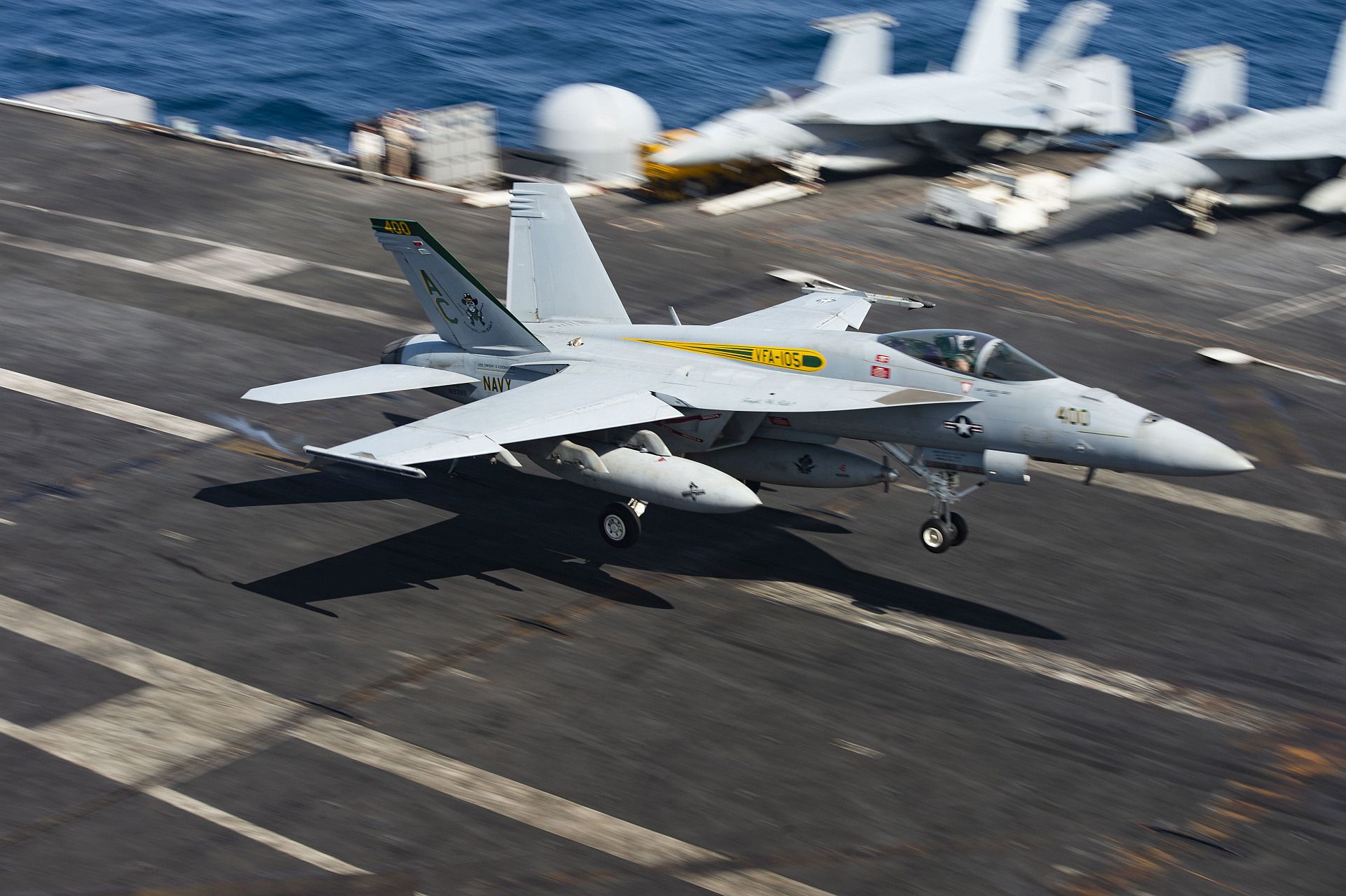
Two 9th Expeditionary Bomb Squadron B-1B Lancers wait to park on the flightline at Andersen Air Force Base, Guam, May 14, 2020. These aircrews had just finished flying a training mission in the East China Sea in support of a Bomber Task Force. BTFs are forms of Dynamic Force Employments, which deploy pockets of airpower around the globe with unpredictability. (U.S. Air Force photo's by Senior Airman River Bruce)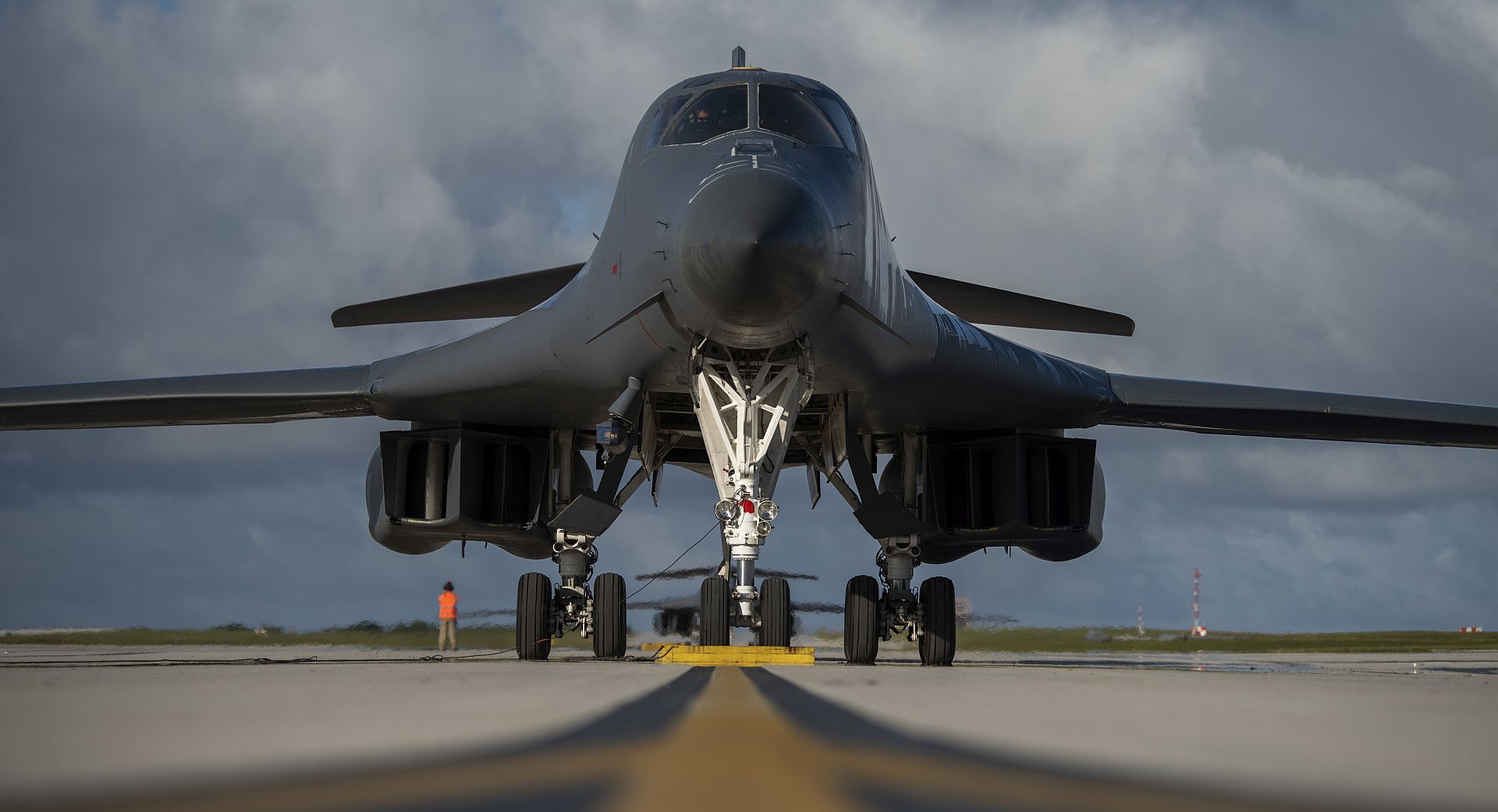
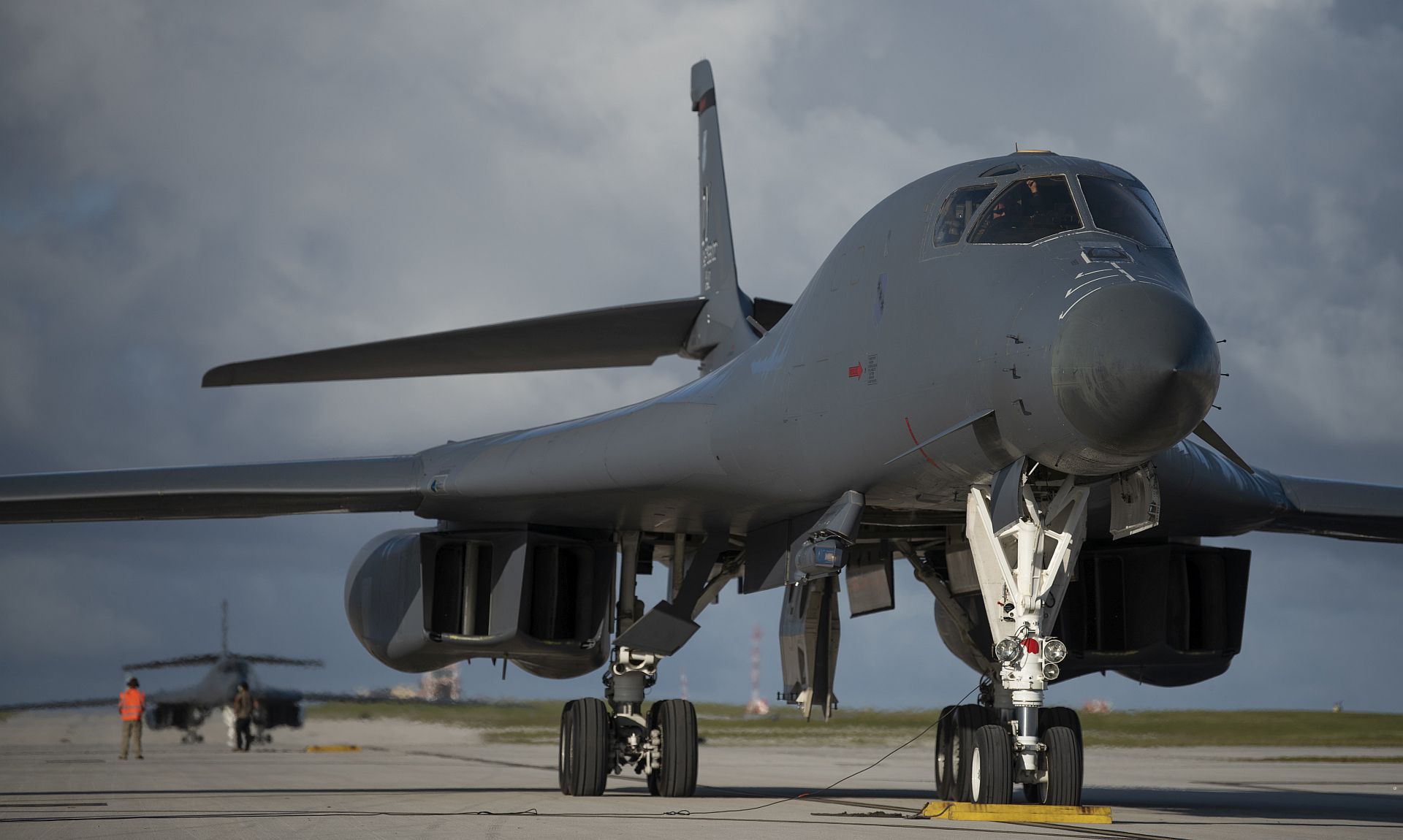
An F-22 Raptor from the 325th Fighter Wing flies alongside an F-35 Lightning II from the 33rd Fighter Wing over the Emerald Coast. The fifth generation fighter jets flew together in a rare dissimilar formation to salute healthcare workers, first responders and other essential employees May 15, 2020. (U.S. Air Force photo by 1st Lt Savanah Bray)
Two T-7A test jets soar over St. Louis during a test flight, April 24, 2017. On April 30, 2020, the T-7A Test Team executed the first real-time Distributed Test Operations with the T-7A in a mission control room at Ridley Mission Control Center at Edwards AFB. The T-7A Red Hawk is part of the new advanced pilot training system for the U.S. Air Force that will train the next generation of pilots and is scheduled to replace the current T-38. (Credit: E.Shindelbower/BOEING COMPANY)
53rd Wing and 96th Test Wing aircraft soar over Northwest Florida May 14. The four-ship of F-15 Eagles and F-16 Fighting Falcons flew over Okaloosa County hospitals as part of the Air Force?s America Salutes campaign. (U.S. Air Force photo's/Tech. Sgt. John Raven)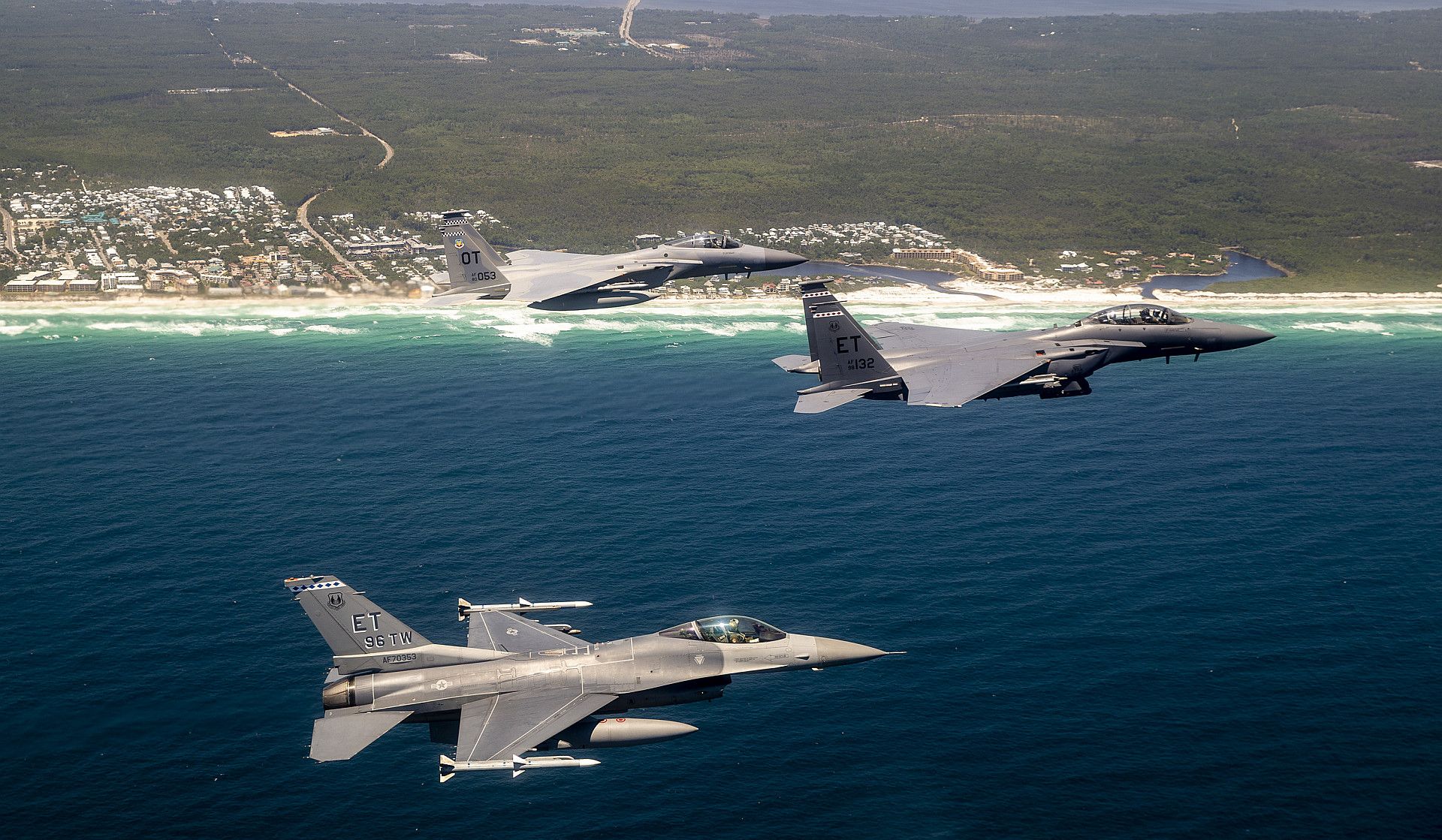
CAPE CANAVERAL AIR FORCE STATION, Fla. May 17, 2020 ? The Boeing [NYSE: BA]-built X-37B autonomous spaceplane today launched on top of a uniquely configured United Launch Alliance Atlas V rocket.
Boeing is the prime contractor for the X-37B spaceplane and facilitates the integration of all experiments into the vehicle ensuring they receive the correct power, thermal and data services required. Boeing also works to identify future reusable platform experiment opportunities on each mission.
The X-37B?s sixth mission is the first to use a service module with additional payload capability to support a variety of experiments for multiple government partners. The mission will deploy FalconSAT-8, a small satellite developed by the U.S. Air Force Academy and sponsored by the Air Force Research Laboratory, to conduct experiments on orbit. Further, two NASA experiments will study the impact of radiation and other space effects on certain materials and seeds used to grow food. Another experiment by the Naval Research Laboratory will transform solar power into radio frequency microwave energy which could then be transmitted to the ground. In addition, the mission will test reusable space vehicle technologies.
The X-37B first launched in April 2010. Originally designed for missions of 270 days duration, the X-37B has set endurance records during each of its five previous flights. Most recently, X-37B spent 780 days on orbit before returning to Earth in October 2019.
?The X-37B has shifted the paradigm and redefined efficiency in space development, said Jim Chilton, Boeing Space and Launch senior vice president. ?The rapid technology advancements enabled by the program will benefit the entire space community and influence the next generation of spacecraft design.?
The X-37B program is a partnership between the Department of the Air Force Rapid Capabilities Office and the United States Space Force. Boeing program management, engineering, test and mission support functions for the Orbital Test Vehicle (OTV) program are conducted at Boeing sites in Southern California and Florida.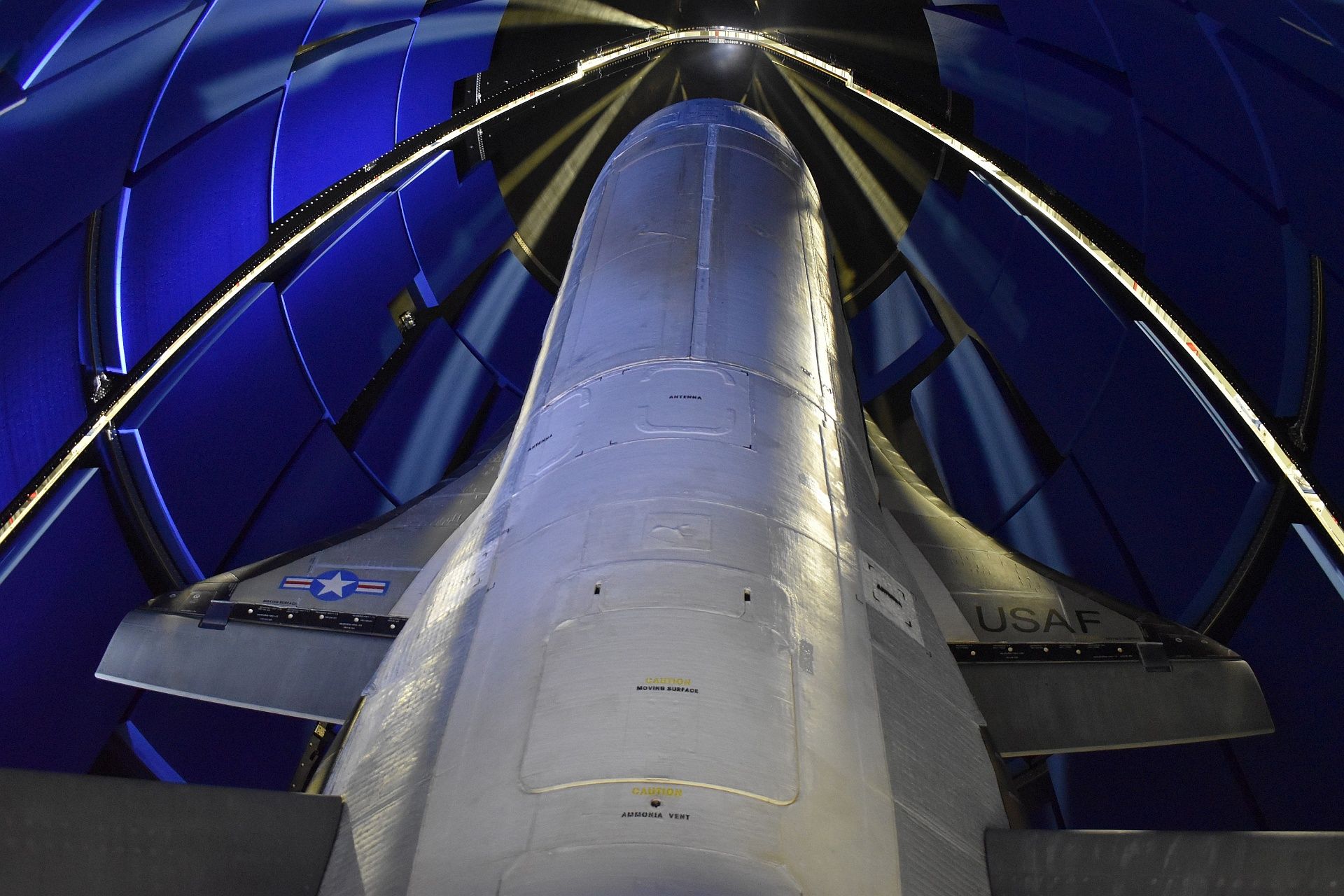
18 May 2020
The U.S. Navy?s Naval Air Warfare Center Aircraft Division?s (NAWCAD) Aircraft Prototyping Systems Division has awarded BAE Systems a prime position on a $26.7 million task order to install, integrate, and test the Department of the Navy (DoN) Large Aircraft Infrared Countermeasures (LAIRCM) system on KC-130J aerial transport and refueling aircraft. The DoN LAIRCM advanced missile warning system improves aircraft capability and survivability by countering advanced infrared missile system threats.
?We understand how vital the KC-130J is to the U.S. Navy and U.S. Marine Corps and the enhanced capability the DoN LAIRCM system brings to the fight,? said Pete Trainer, vice president and general manager of BAE Systems? Air Force Solutions. ?With more than 40 years of experience managing complex aircraft modernization and sustainment programs, we?re excited that NAWCAD has entrusted us to integrate this system onto their aircraft to ensure the safety of the aircrews and protect this vital capability.?
The BAE Systems turnkey solution provides program management, inventory control, engineering support, installation, and system testing of the DoN LAIRCM upgrade. Aircraft maintenance and support activities will also be provided as required. This is the second task order awarded to BAE Systems under the Prototyping and Limited Production indefinite delivery indefinite quantity contract. The DoN LAIRCM installation will be performed on up to 19 KC-130J aircraft over the next five years; the work will take place in Crestview, Florida in partnership with Vertex Aerospace Aircraft Integration & Sustainment (AIS) Division.
?The program office looks forward to working with BAE Systems on the DoN LAIRCM installations,? said CAPT Steven Nassau, program manager for Naval Air Systems Command?s PMA-207. ?This competitive award will allow the Marine Corps to move from government depot installation to industry without a gap in services. It is a great reflection on the dedication of the KC-130J Mission Systems Team and the contracts office. It also speaks to the flexibility of both the Navy and industry.?
BAE Systems? Intelligence & Security sector has extensive experience in advanced aircraft engineering, fabrication, installation, modification, systems integration, and logistics support, and has performed more than 200 separate complex modification programs involving over 2,200 aircraft. The BAE Systems and Vertex AIS team have installed Directional Infrared Countermeasures and DoN LAIRCM systems for the U.S. Air Force and foreign military customers under previous contracts.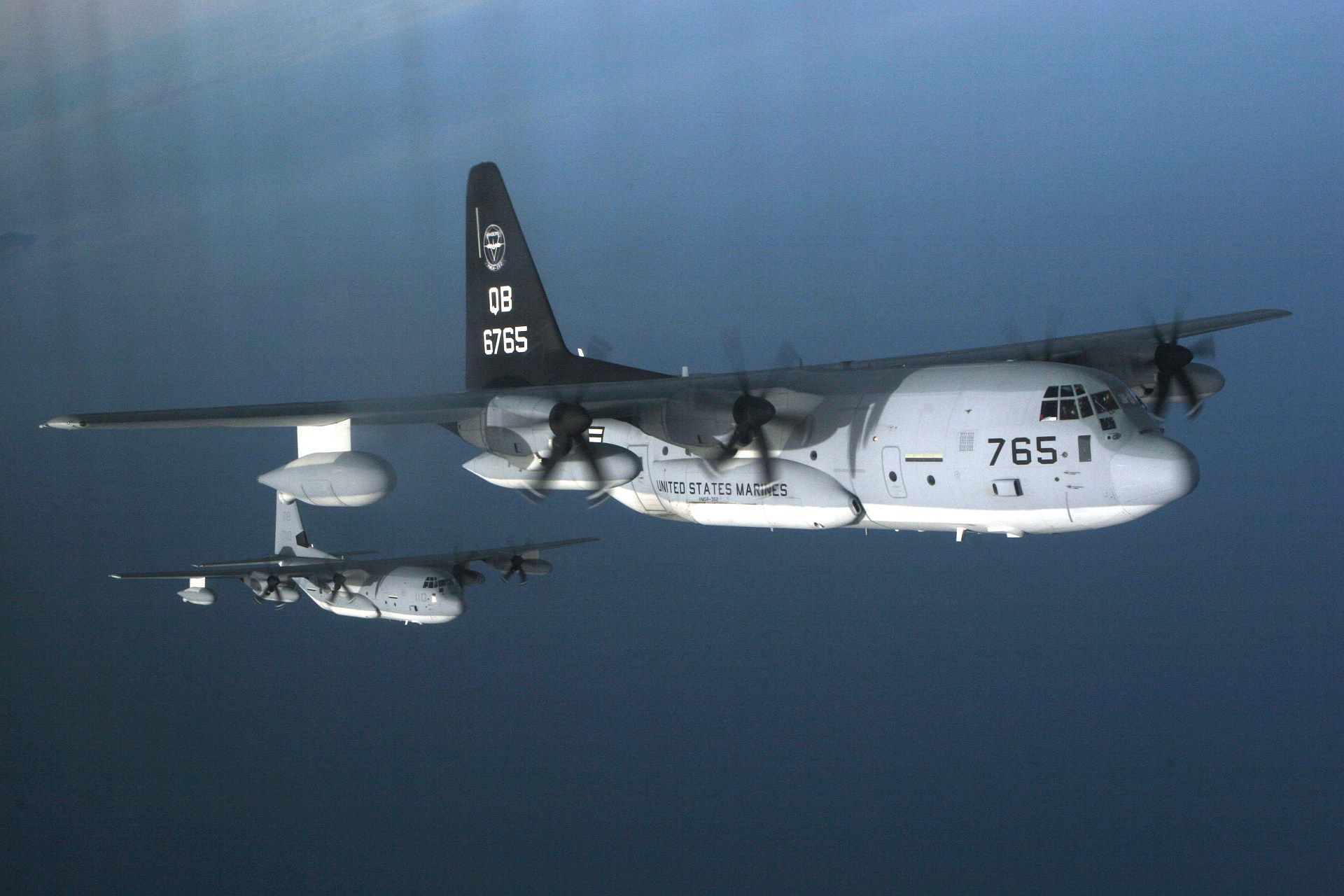
WICHITA, Kan. (May 17, 2020) ? Textron Aviation Inc., a Textron Inc. (NYSE:TXT) company, today announced the successful first flight of its new twin utility turboprop, the Cessna SkyCourier. The milestone flight is a significant step toward entry into service for the clean-sheet aircraft, and it kicks off the important flight test program that validates the performance of the Cessna SkyCourier.
?Today was an exciting day for our employees, our suppliers and our customers. The Cessna SkyCourier performed exactly as we expected, which is a testament to the entire team of men and women who worked together to prepare for this day,? said Ron Draper, president and CEO, Textron Aviation. ?I?m proud of the way the team has persevered through disruptions caused by the COVID-19 global pandemic and remained focused on getting us to this point. The Cessna SkyCourier will be an excellent product in its segment due to its combination of cabin flexibility, payload capability, superior performance and low operating costs. Our customers will be very pleased with what they experience from this aircraft.?
The Cessna SkyCourier took off from the company?s east campus Beech Field Airport, piloted by Corey Eckhart, senior test pilot, and Aaron Tobias, chief test pilot. During the 2-hour and 15-minute flight, the team tested the aircraft?s performance, stability and control, as well as its propulsion, environmental, flight controls and avionics systems.
?We were very pleased with how the Cessna SkyCourier performed throughout its first flight,? Eckhart said. ?It was particularly impressive to see how stable the aircraft handled on takeoff and landing. The Cessna SkyCourier already displays a high level of maturity in its flight characteristics, especially for a first flight. We were able to accomplish everything we wanted on this flight, and that?s an excellent start to the flight test program.?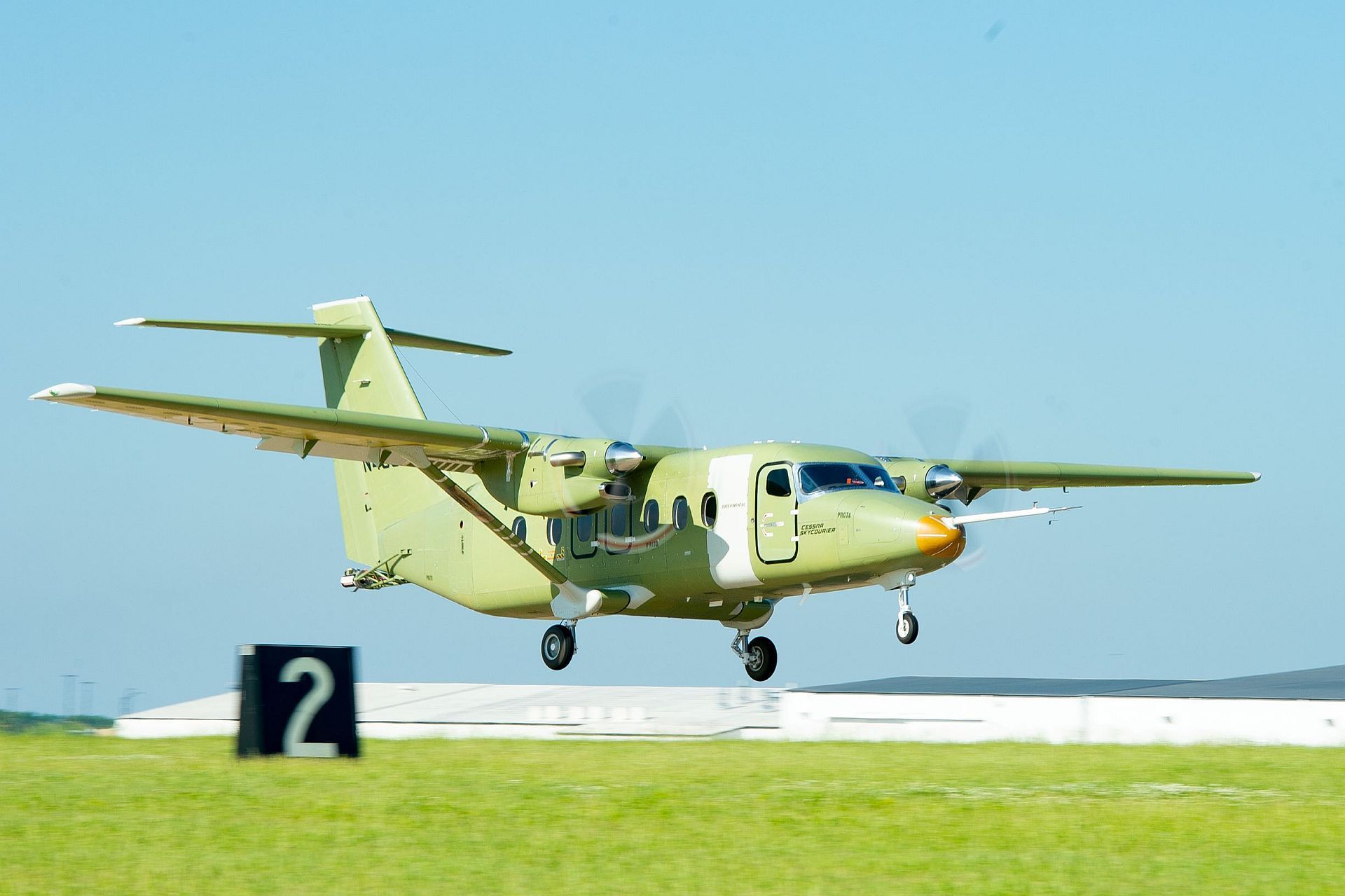
The prototype aircraft, along with five additional flight and ground test articles, will continue to expand on performance goals, focusing on testing flight controls and aerodynamics.
Relentless capability
The Cessna SkyCourier, featuring Pratt & Whitney Canada PT6A-65SC engines, will be offered in various configurations including a 6,000-pound payload capable freighter, a 19-seat passenger version or a mixed passenger/freight combination, all based on the common platform.
The Cessna SkyCourier is designed for high utilization and will deliver a combination of robust performance and lower operating costs. Cessna SkyCourier will feature the popular Garmin G1000 NXi avionics suite and offer highlights such as a maximum cruise speed of up to 200 ktas and a maximum range of 900 nm. Both freighter and passenger variants of the Cessna SkyCourier will include single-point pressure refueling as standard to enable faster turnarounds.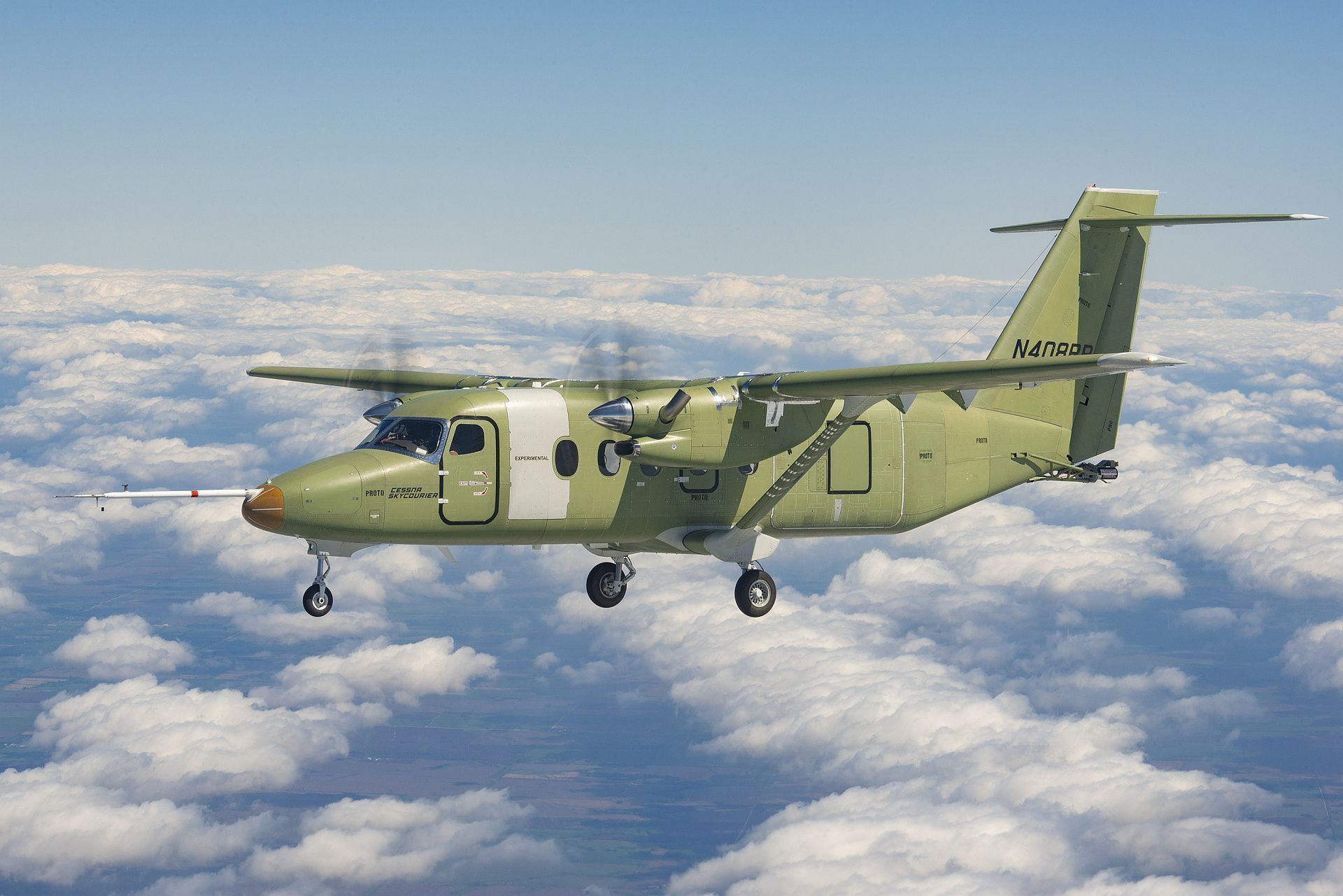
Following the announcement in July 2018 that RAF Scampton
would close, it was announced today that RAF Waddington
has been selected as the only viable alternative basing location for the Royal Air Force Aerobatic Team (RAFAT) ? the RAF Red Arrows.
There will now be an Assessment Study to examine and cost the options before developing a business case for the eventual move. The relocation will take place before RAF Scampton closes in late 2022.
Over 30 alternative sites were assessed for their suitability and of these, three potential future locations for RAFAT were subsequently approved. An Operational Safety Assessment has now confirmed RAF Waddington is the only suitable alternative to RAF Scampton. The airspace over RAF Scampton will be retained for the team?s training and display practice.
Describing the development, Air Chief Marshal Mike Wigston, Chief of the Air Staff, said:
?We will be sorry to leave Scampton but I am delighted the Red Arrows will remain in Lincolnshire when they move to their new base at RAF Waddington. The people of Lincolnshire have provided fabulous support for the Red Arrows over many years, and the team is proud to call it home.?
(Photo MOD)
-
 Main AdminANSBACH, BY, GERMANY
Main AdminANSBACH, BY, GERMANY
05.19.2020
Yesterday, 1-3rd Attack Reconnaissance Battalion, 12th Combat Aviation Brigade conducted a battalion training flight of 18 AH-64 Apache attack helicopters. The training mission was an opportunity for 1-3 ARB to conduct a training mission with the full battalion under realistic conditions. The objective area was far enough away to necessitate detailed planning at the company and platoon level. This was a great first step on a progressive training plan to execute collective training. (U.S. Army photos by MAJ Robert Fellingham)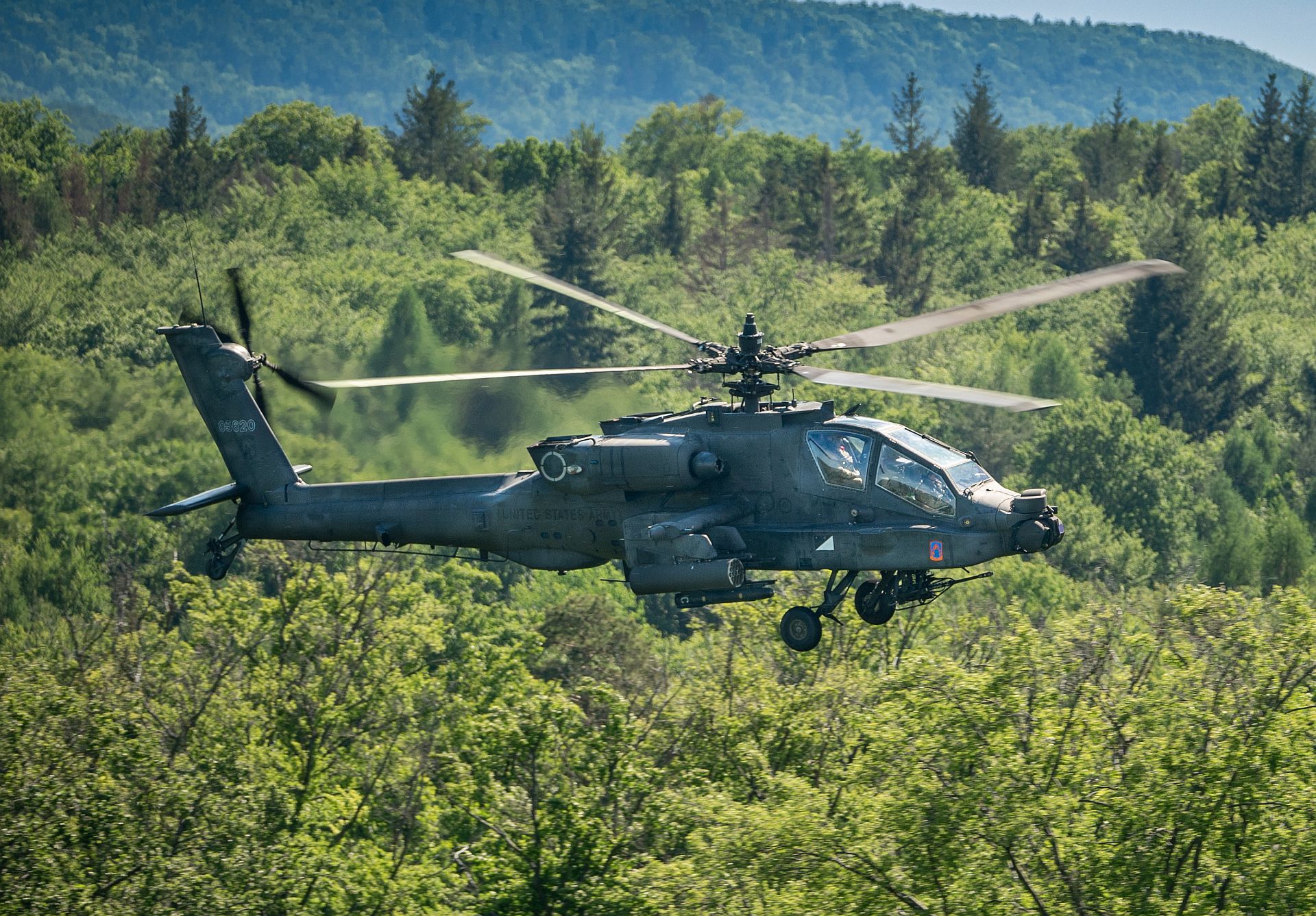
Swedish Armed Forces Gripens fly in formation during a Bomber Task Force Europe mission over Sweden, May 20, 2020. Training with our NATO allies and theater partner nations contributes to enhanced resiliency and interoperability and enables us to build enduring relationships necessary to confront the broad range of global challenges. (U.S. Air Force photo by Tech. Sgt. Emerson Nu?ez)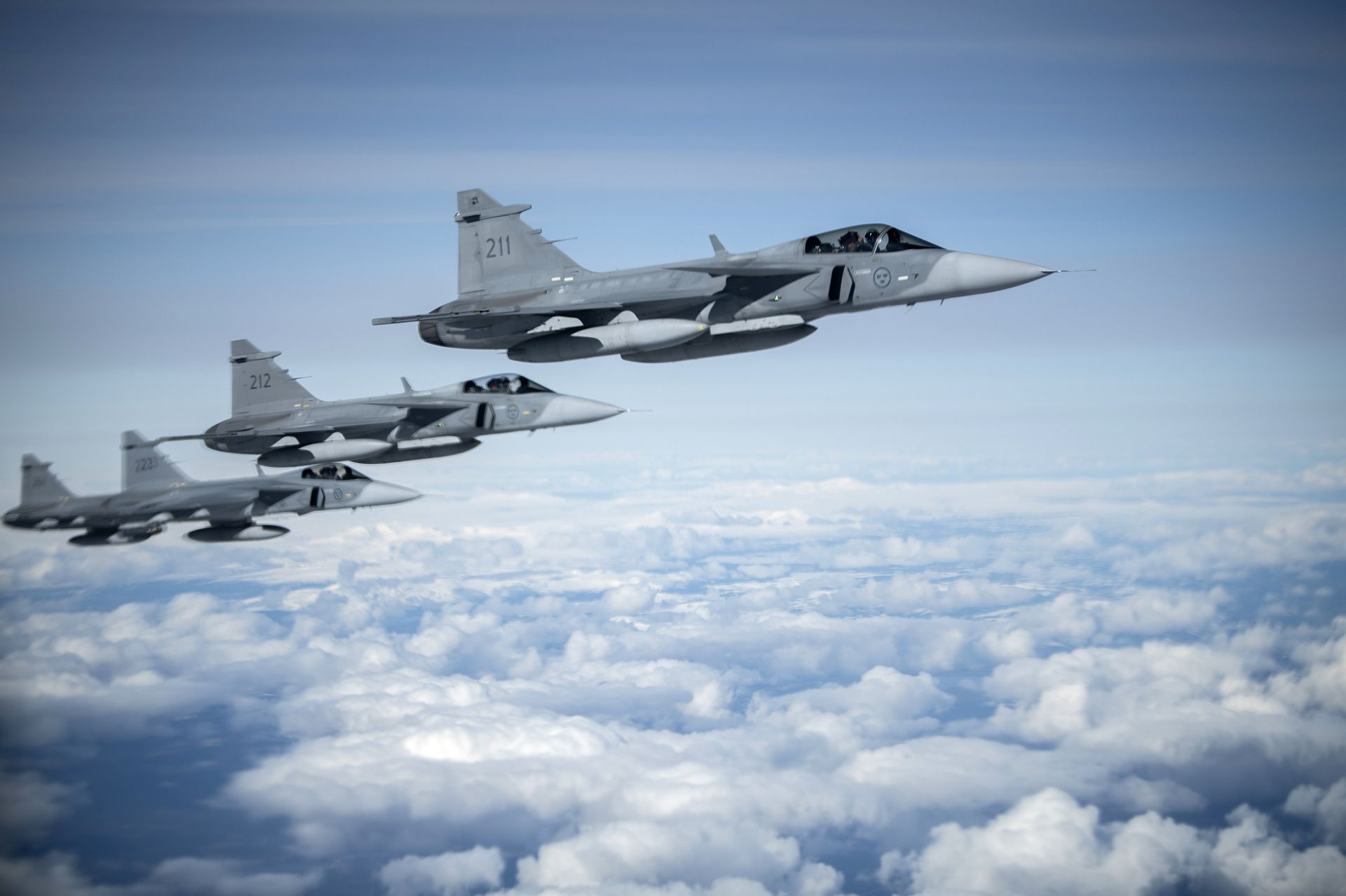
A Swedish Armed Forces Gripen receives fuel from a KC-135 Stratotanker from the 100th Air Refueling Wing, RAF Mildenhall, England, during a Bomber Task Force Europe mission over Sweden, May 20, 2020. The mission marked the first time B-1s have flown over Sweden to integrate with Swedish Gripens while conducting close-air support training with Swedish Joint Terminal Attack Controller ground teams at Vidsel Range. (U.S. Air Force photo by Tech. Sgt. Emerson Nu?ez)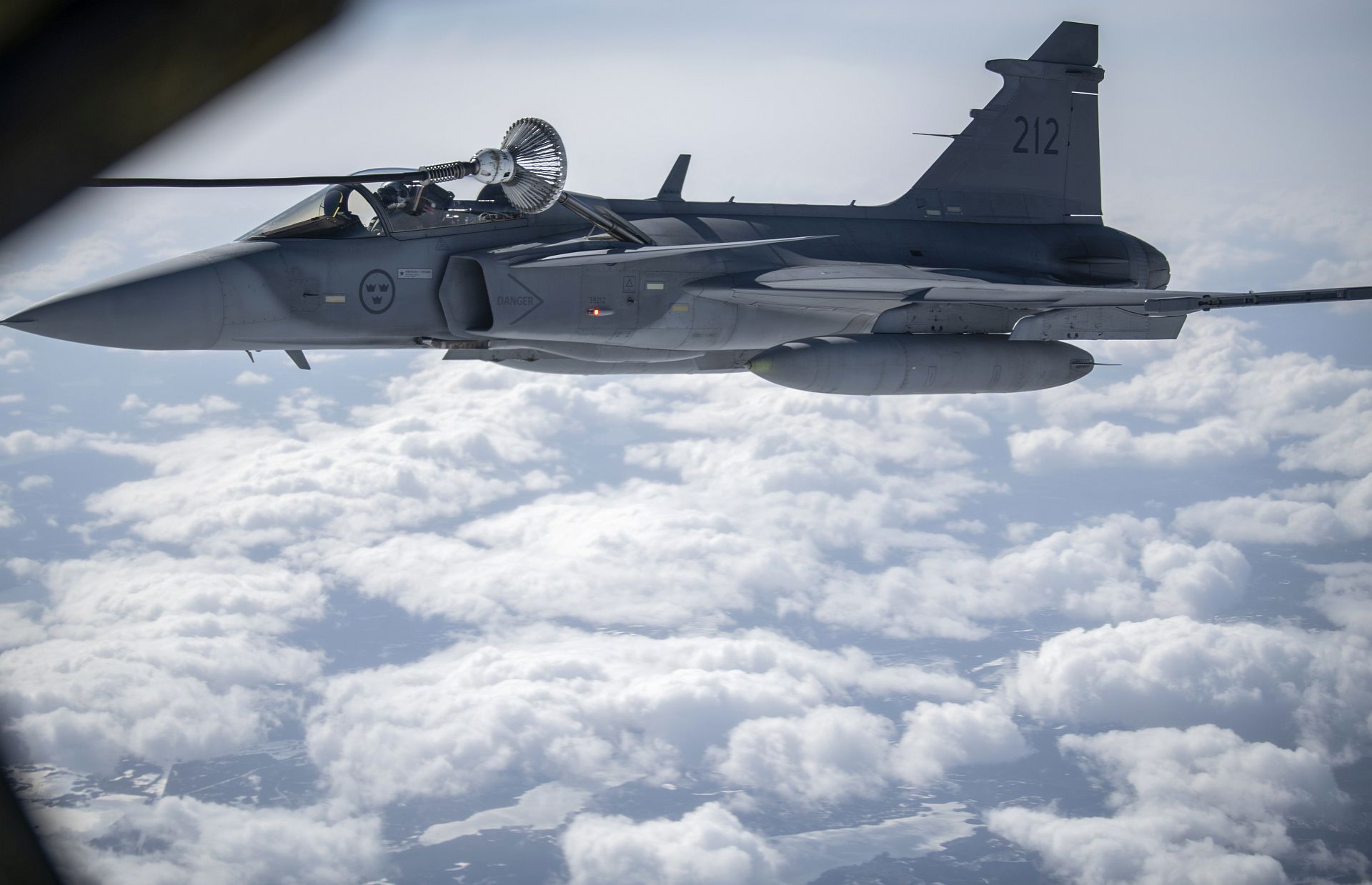
Swedish Armed Forces Gripens participated in a training mission over Sweden as part of Bomber Task Force Europe May 20, 2020. Operations and engagements with our allies and partners demonstrate and strengthen our shared commitment to global security and stability. (Courtesy photo's by the Swedish Armed Forces)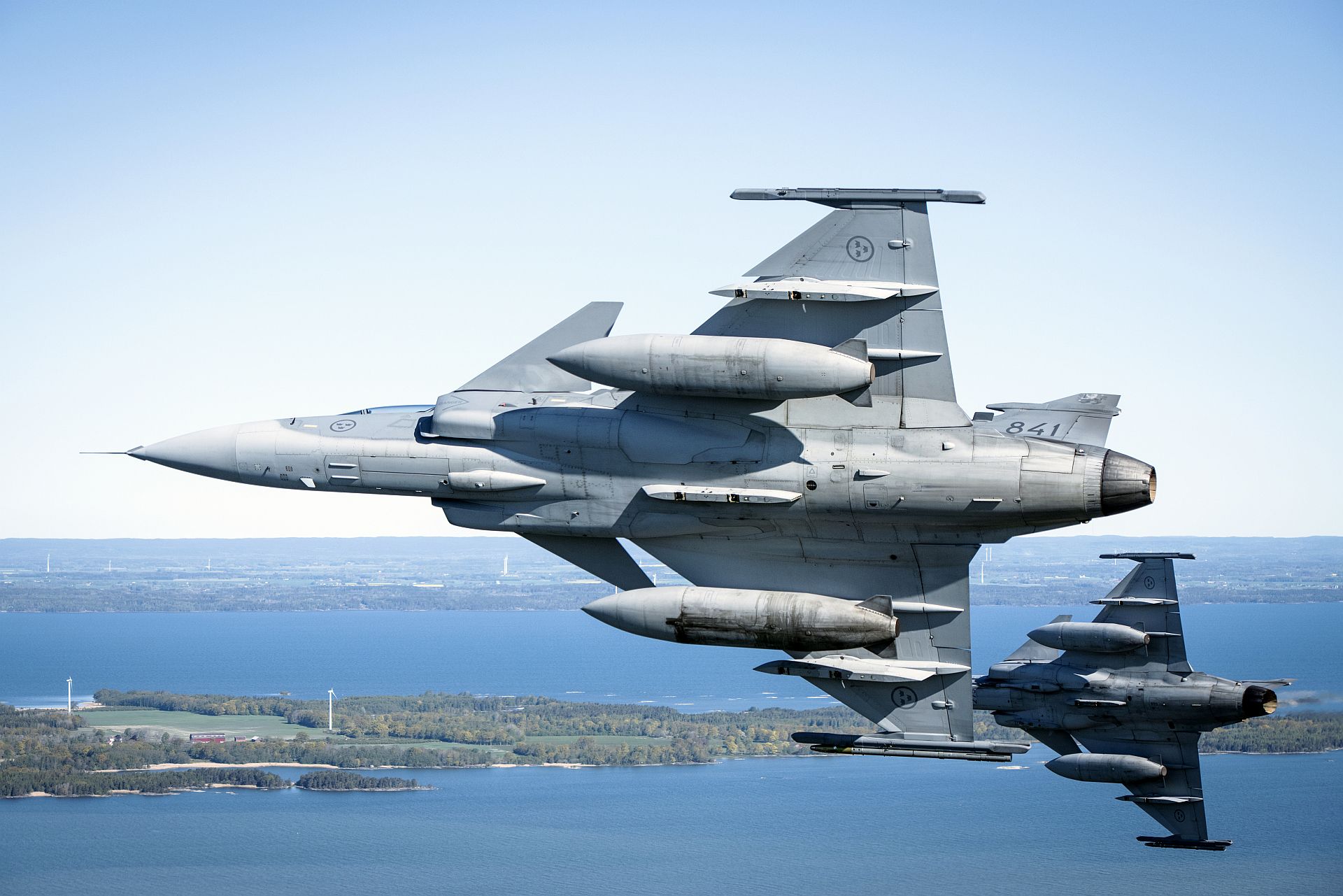
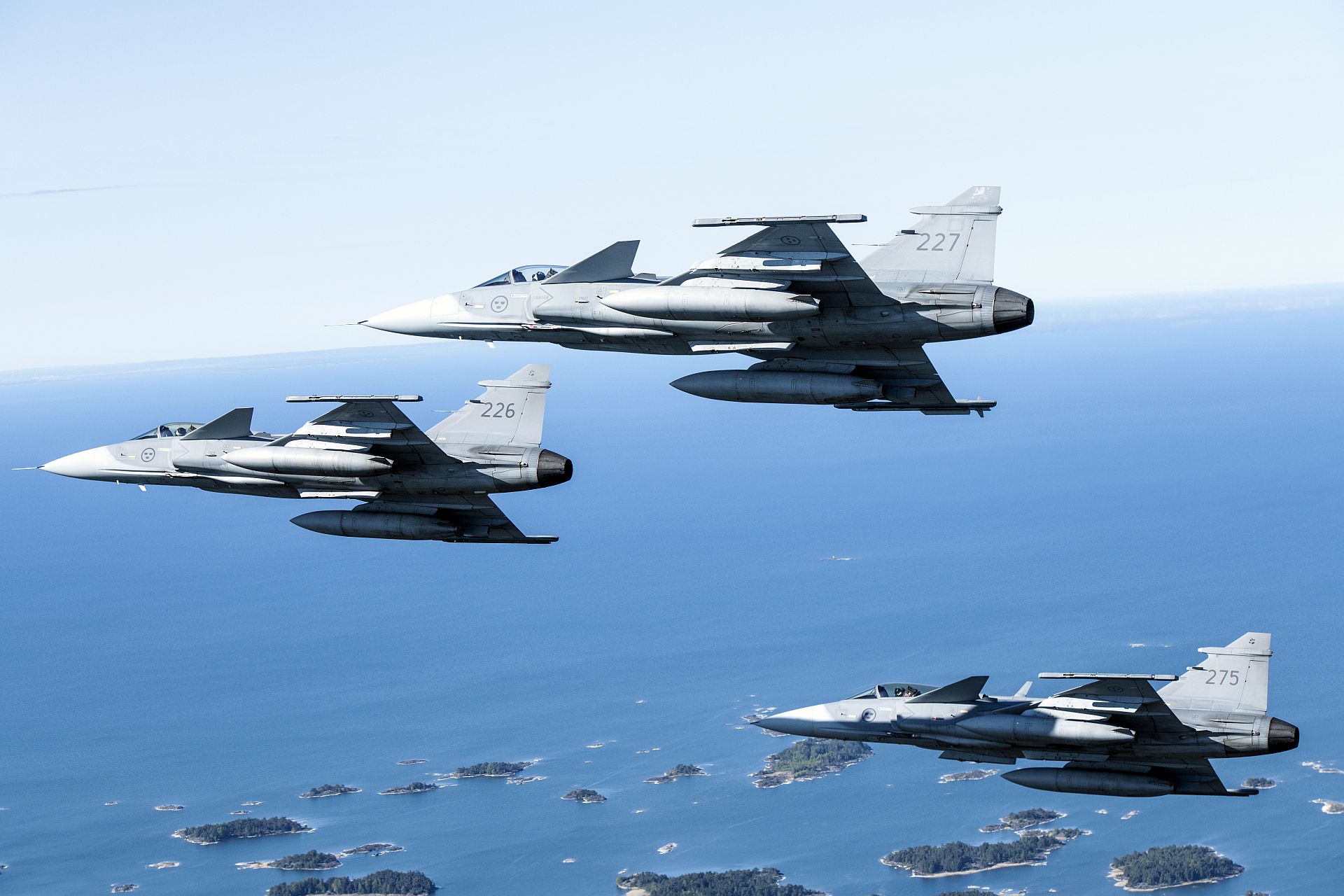
A B1B Lancer from the 28th Bomb Wing, Ellsworth Air Force Base, South Dakota, integrated with Swedish Armed Forces Gripens for the first time over Sweden during a long range, long duration Bomber Task Force mission May 20, 2020. Operations and engagements with our allies and partners demonstrate and strengthen our shared commitment to global security and stability. (Courtesy photo by the Swedish Armed Forces)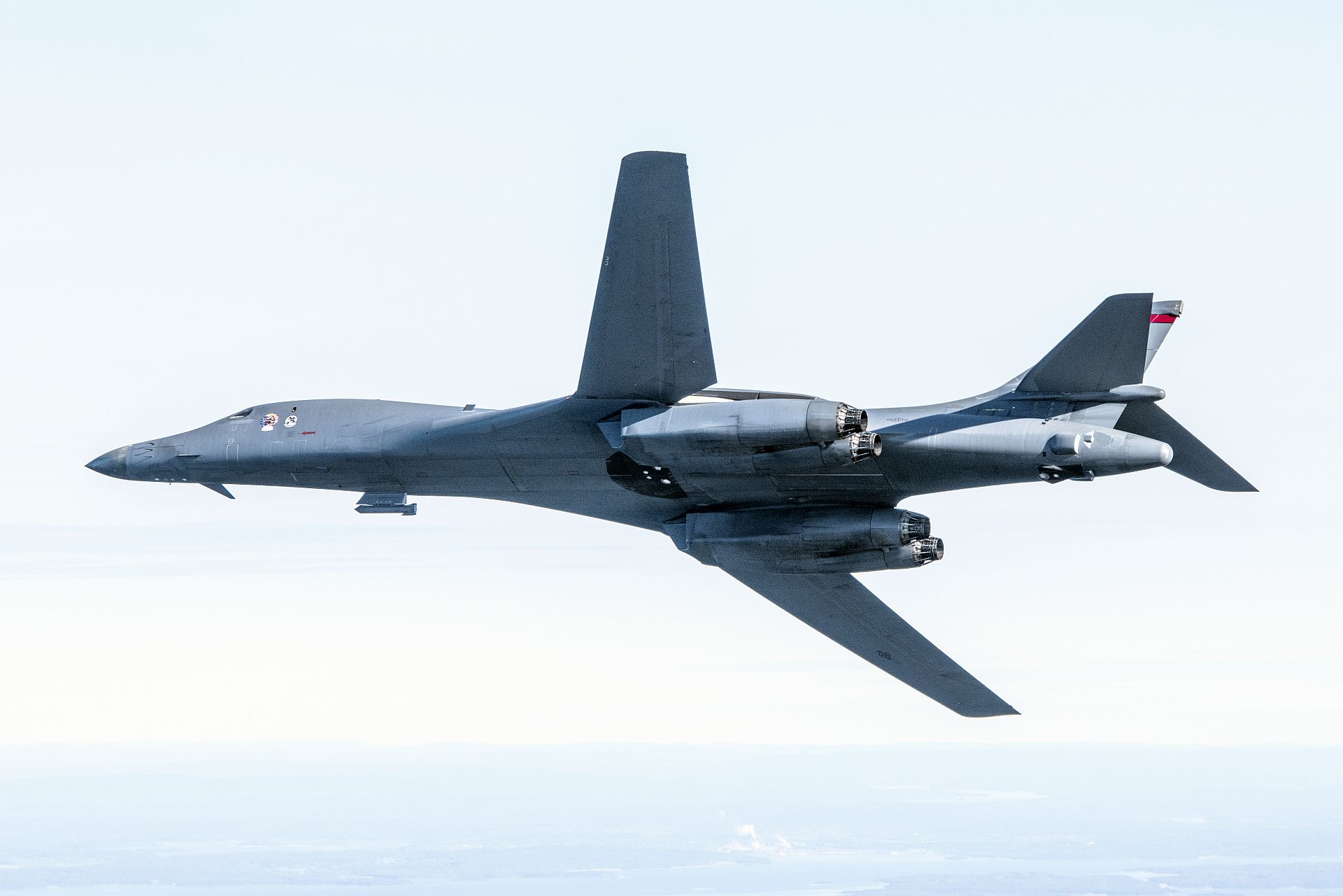
Typhoon FGR4s from RAF Lossiemouth escort two B-1B Lancers through UK airspace. The B-1B Lancers were heading to the Nordic region on a NATO mission as part of the Bomber Task Force. They were supported by three KC-135R Stratotankers from RAF Mildenhall. Team Lossie Typhoons were supported by a Voyager A330-200MRTT from RAF Brize Norton, and an E-3D Sentry from RAF Waddington. (Photo by SAC Ciaran McFalls/? MOD Crown Copyright 2020)
-
 Main AdminAn F-35 pilot assigned to the 158th Fighter Wing, Vermont Air National Guard, prepares for take off from the Vermont Air National Guard Base with the Vermont state flag, honoring Vermont?s front line COVID-19 responders and essential workers with a statewide flyover scheduled to last 90 minutes, South Burlington, Vt., May 22, 2020. These flyovers are a part of Operation America Strong, an Air Force effort to salute healthcare workers across the country. (U.S. Air National Guard photo's by Miss Julie M. Shea)
Main AdminAn F-35 pilot assigned to the 158th Fighter Wing, Vermont Air National Guard, prepares for take off from the Vermont Air National Guard Base with the Vermont state flag, honoring Vermont?s front line COVID-19 responders and essential workers with a statewide flyover scheduled to last 90 minutes, South Burlington, Vt., May 22, 2020. These flyovers are a part of Operation America Strong, an Air Force effort to salute healthcare workers across the country. (U.S. Air National Guard photo's by Miss Julie M. Shea)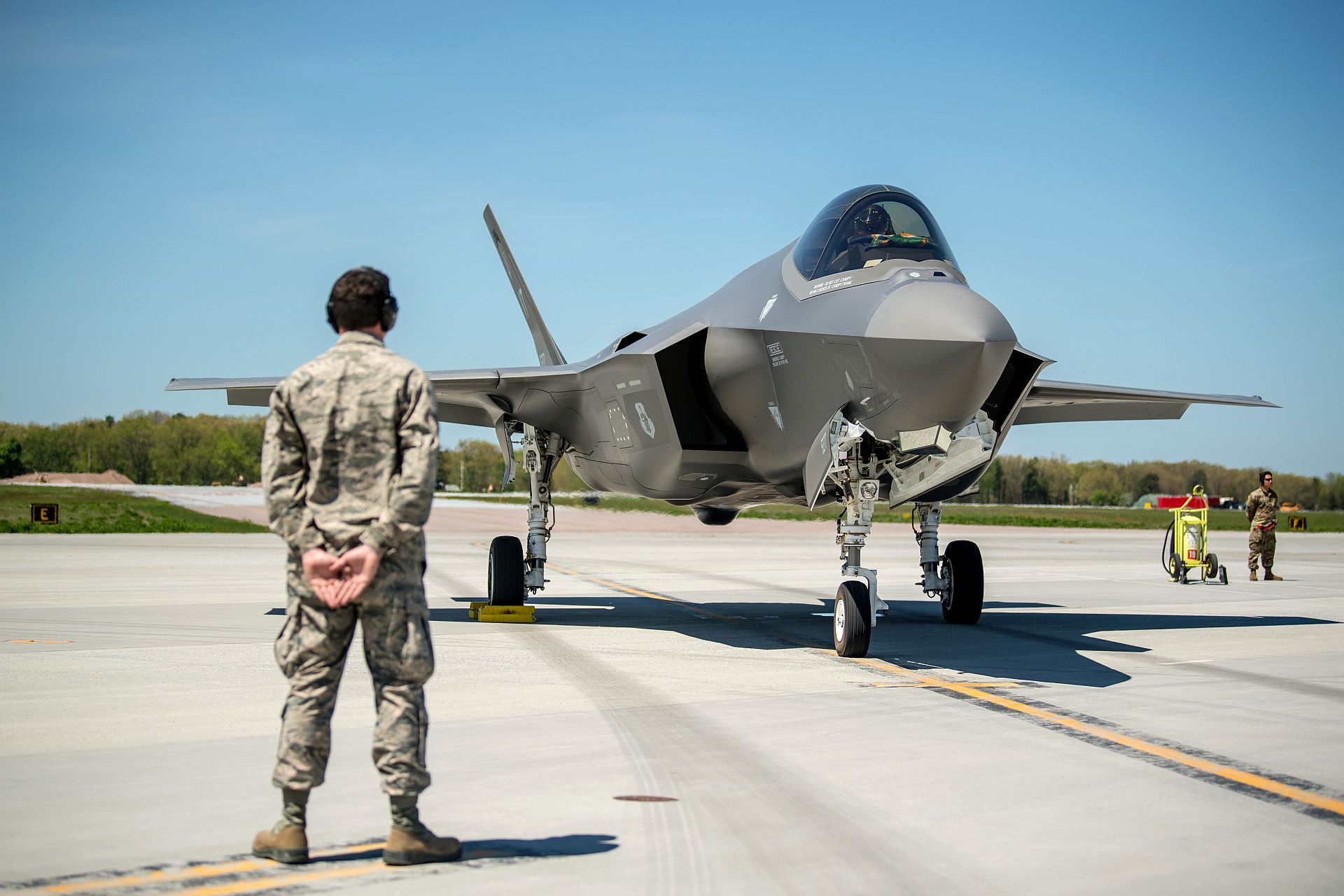
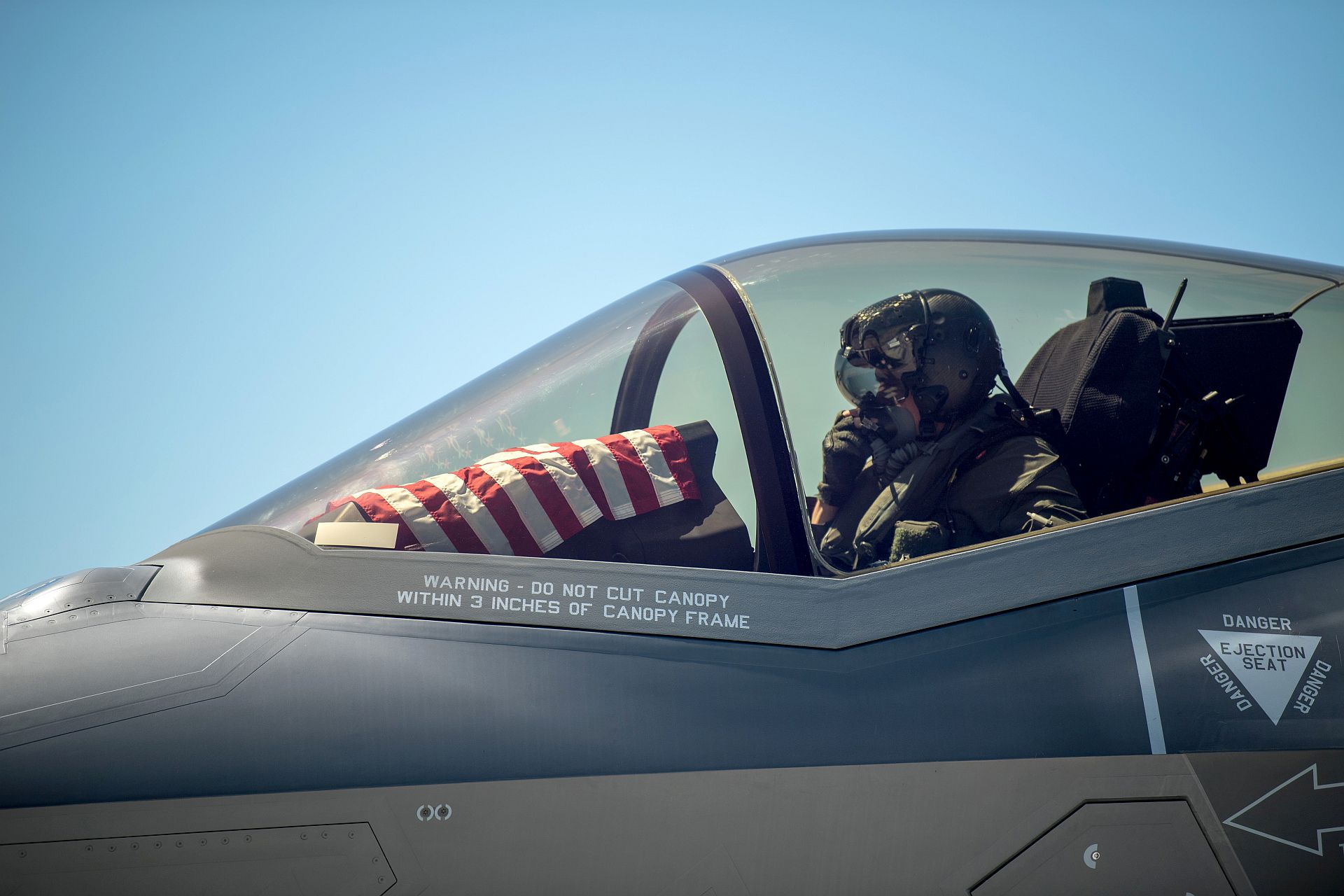
APRA HARBOR (May 21, 2020) The aircraft carrier USS Theodore Roosevelt (CVN 71) departs Apra Harbor May 21, 2020, following an extended visit to Guam in the midst of the COVID-19 global pandemic. Theodore Roosevelt is underway conducting carrier qualifications during a deployment to the Indo-Pacific. (U.S. Navy photo by Mass Communication Specialist Seaman Kaylianna Genier)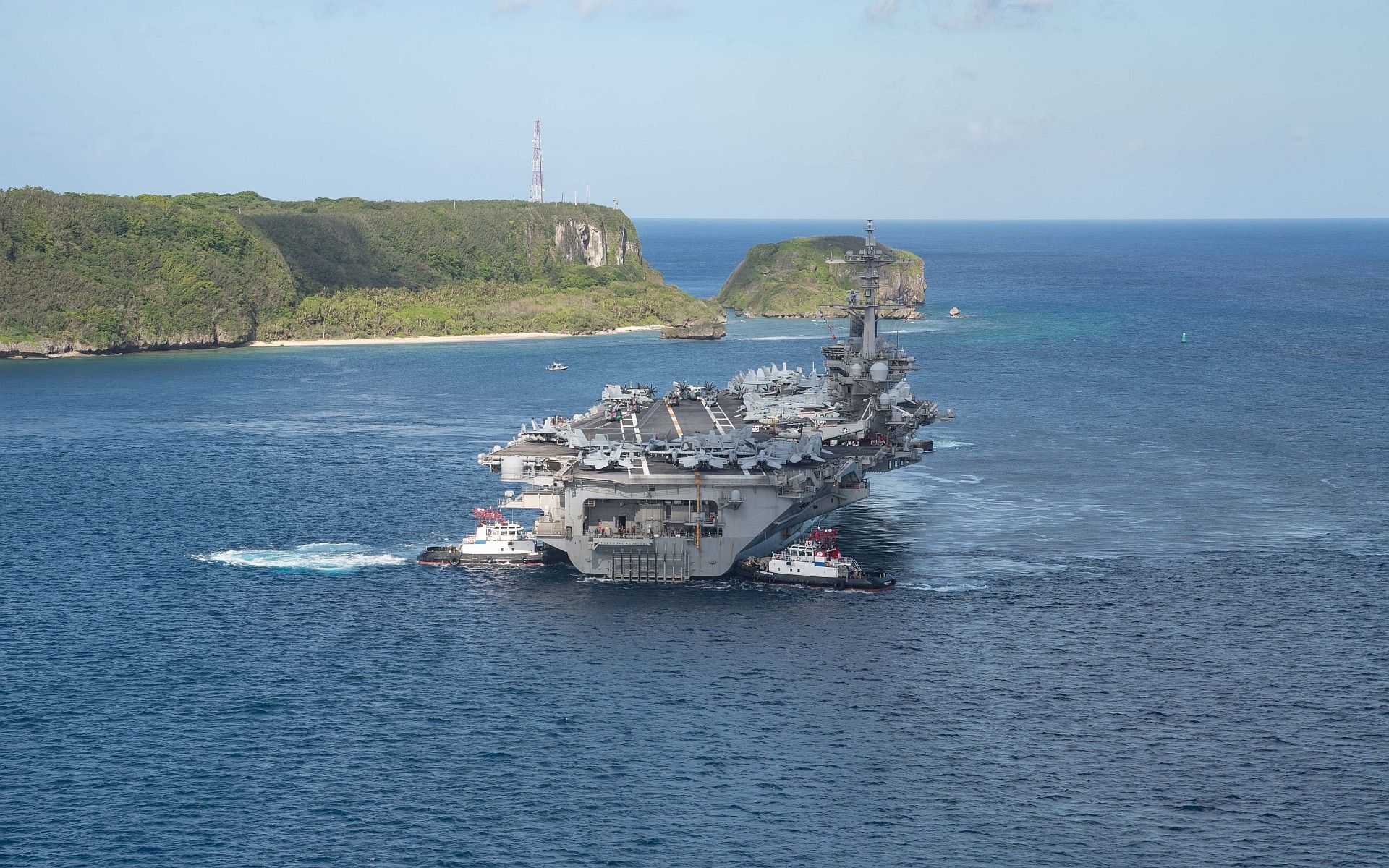
PHILIPPINE SEA (May 22, 2020) U.S. Sailors aboard the aircraft carrier USS Theodore Roosevelt (CVN 71) prepare to launch an E-2C Hawkeye, assigned to the ?Liberty Bells? of Airborne Command and Control Squadron (VAW) 115, from the ship?s flight deck May 22, 2020. Following an extended visit to Guam in the midst of the COVID-19 global pandemic, Theodore Roosevelt is underway conducting carrier qualifications during a deployment to the Indo-Pacific. (U.S. Navy photo by Mass Communication Specialist Seaman Kaylianna Genier)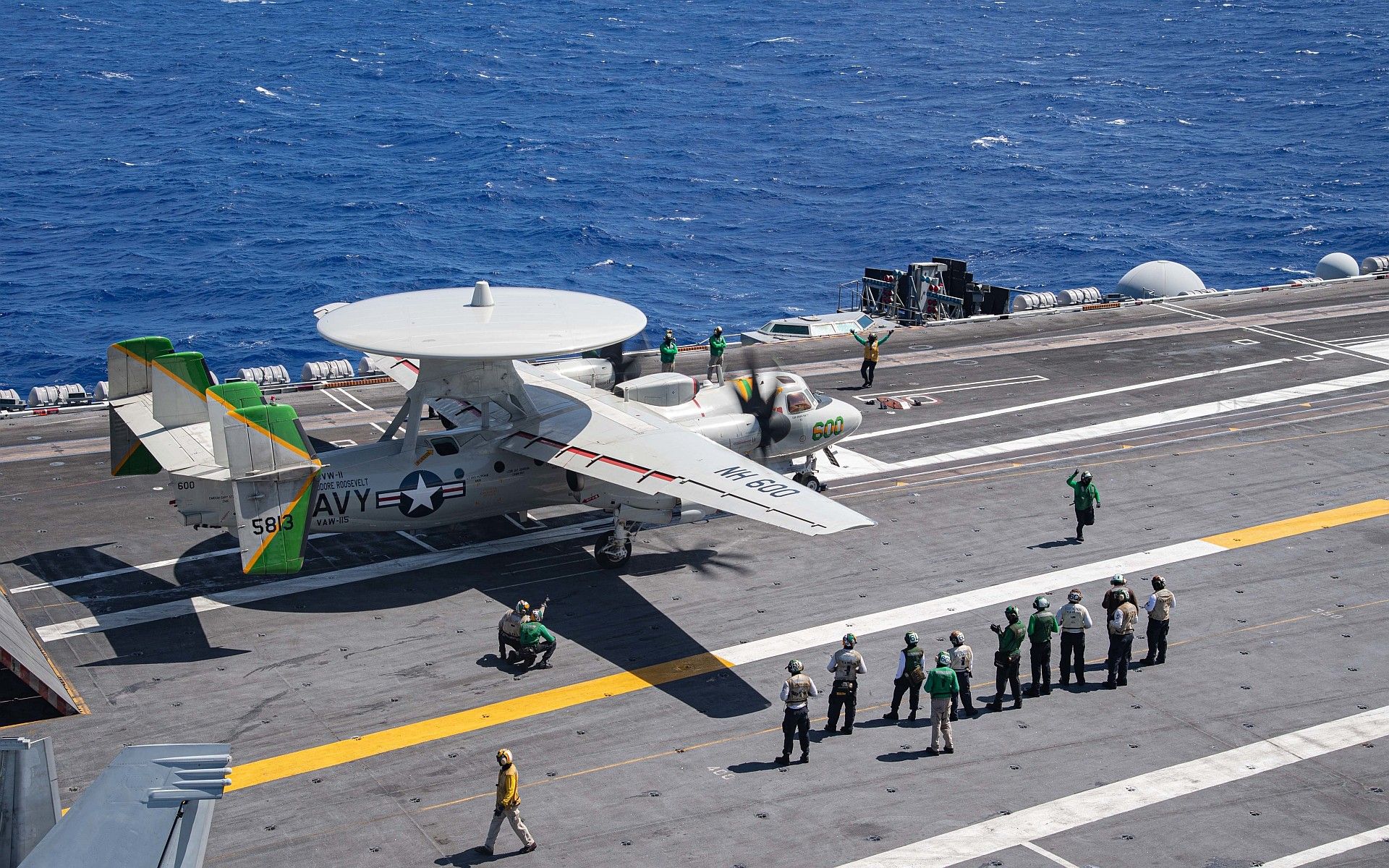
A 9th Expeditionary Bomb Squadron B-1B Lancer takes off from Andersen Air Force Base, Guam, May 21, 2020. In continued demonstration of the U.S. Air Force?s dynamic force employment model, two U.S. Air Force B-1B Lancers flew from Andersen AFB and conducted training in Alaska and near Misawa Air Base, Japan. The 9th EBS, and other units assigned to the 7th Bomb Wing of Dyess Air Force Base, Texas, are deployed to Guam as part of a Bomber Task Force. BTFs contribute to joint force lethality, assure allies and partners, and deter aggression in the Indo-Pacific. (U.S. Air Force photo by Senior Airman River Bruce)
9th Expeditionary Bomb Squadron B-1B Lancer mechanics take selfies as a B-1B flies overhead at Andersen Air Force Base, Guam, May 21, 2020. In continued demonstration of the U.S. Air Force?s dynamic force employment model, two U.S. Air Force B-1B Lancers flew from Andersen AFB and conducted training in Alaska and near Misawa Air Base, Japan. The 9th EBS deployed to Guam from Dyess Air Force Base, Texas, along with 200 Airmen assigned to the 7th Bomb Wing at Dyess AFB, Texas, as part of a Bomber Task Force and is supporting Pacific Air Forces? strategic deterrence missions and commitment to the security and stability of the Indo-Pacific region. (U.S. Air Force photo by Senior Airman River Bruce)
Rome 21 May 2020.
The UK Maritime and Coastguard Agency (MCA) will upgrade to Leonardo?s latest Osprey radar to support missions such as search and rescue, border protection, fishery and pollution patrols. The Osprey 30 radar will be installed on-board the two customised Beechcraft King Air aircraft provided to the UK MCA by UK-based aviation services company 2Excel.
Currently, the UK MCA is operating Leonardo?s Seaspray 7300E radar, which has been employed to great effect in support of regular fishery and pollution patrols around the UK. The radar comes equipped with Leonardo?s patented small target detection capability, allowing it to spot shipwrecked individuals in the water at long range, even in the most difficult environmental conditions and sea states. Additionally, the radar provides the ability for MCA crews to identify oil spills and rogue polluters at very long range, day or night.
2Excel will build on this success by equipping the MCA King Airs with Leonardo?s second generation Osprey radar, the latest entry in its range of E-scan surveillance radars. Osprey benefits from all of the capabilities of the Company?s Seaspray family whilst also adding additional modes and optimized overland and coastal imaging capabilities. This makes the radar ideally suited to mixed environment operations, such as along the coast.
Traditionally, coastguard aircraft have used radars with restricted fields of view and limited detection capabilities, making searches laborious and resource-intensive. Leonardo?s radars solve these problems. The Company is a world leader in E-scan, also known as AESA (Active Electronically-Scanned Array) technology, which uses a matrix of hundreds of tiny radar modules to ?steer? an electronic beam, rather than mechanically moving the radar to point at a target. With a Leonardo E-Scan radar, crews can lift off, scan in 360 degrees and almost-instantaneously detect, track and classify hundreds of maritime contacts, allowing crews to quickly task cooperating aircraft to deeply search an area of interest. Other E-scan advantages include extremely high reliability, as the radar can continue to operate effectively throughout a mission even if a number of its individual radar modules fail. Customers in 30 countries have selected Leonardo?s E-scan radars including the Seaspray and Osprey families, with the US Navy procuring the Osprey 30 radar for its Fire Scout unmanned helicopter programme.
-
5 years agoMon May 25 2020, 09:33pm
 Main AdminA Coast Guard Air Station Miami MH-65 Dolphin helicopter crew conducts an Honor Flight over Miami, Florida, May 23, 2020. The Honor Flight celebrates first responders and medical staff working diligently during the COVID-19 pandemic. (U.S. Coast Guard photo by Chief Petty Officer Charly Hengen).
Main AdminA Coast Guard Air Station Miami MH-65 Dolphin helicopter crew conducts an Honor Flight over Miami, Florida, May 23, 2020. The Honor Flight celebrates first responders and medical staff working diligently during the COVID-19 pandemic. (U.S. Coast Guard photo by Chief Petty Officer Charly Hengen).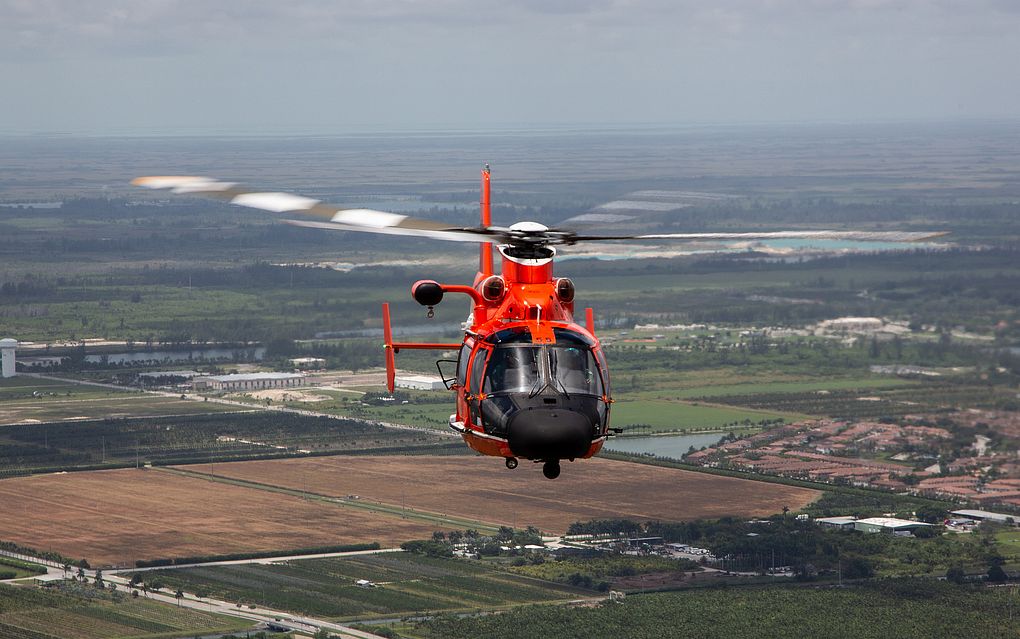
An RC-135S Cobra Ball from Offutt Air Force Base, Nebraska, descends toward the runway May 23, 2020, at Travis Air Force Base, California. Several RC-135S aircraft have been displaced to Travis as a precaution for pending inclement weather in the Offutt area. (U.S. Air Force photo's by Senior Airman Amy Younger)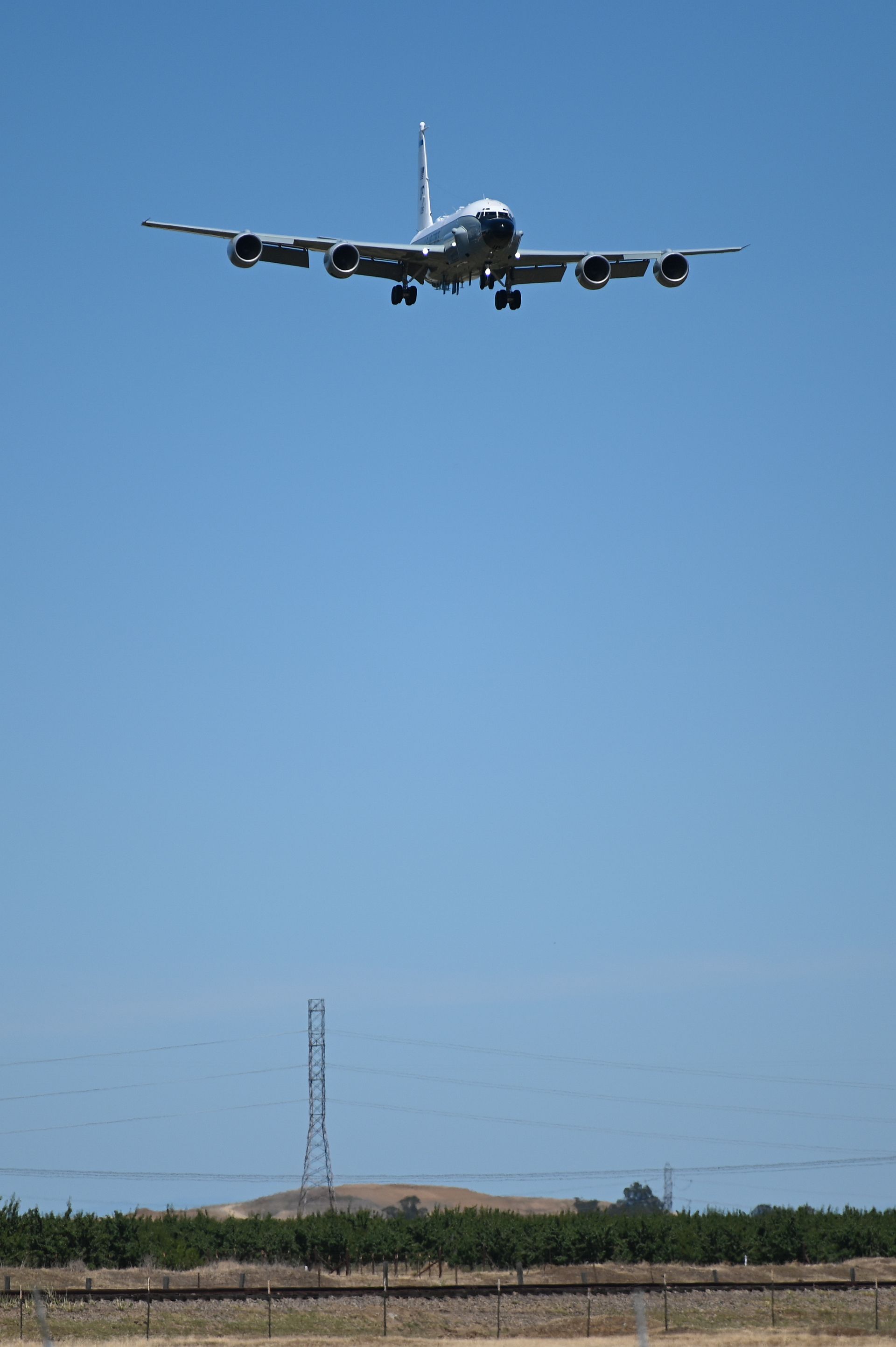
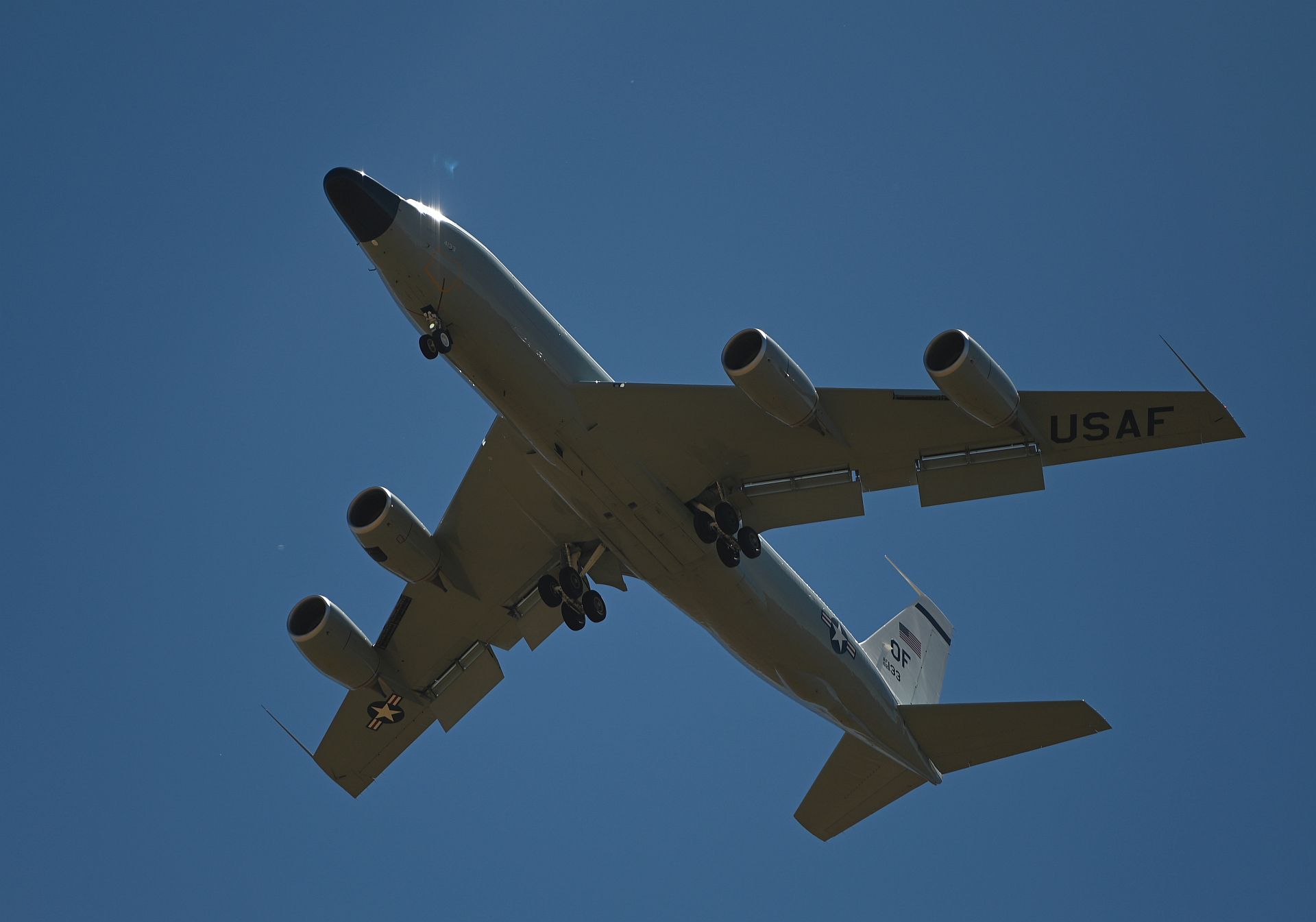
PHILIPPINE SEA (May 24, 2020) An F/A-18E Super Hornet attached to Strike Fighter Squadron (VFA) 115 lands on the flight deck of the Navy's only forward-deployed aircraft carrier USS Ronald Reagan (CVN 76). Ronald Reagan, the flagship of Carrier Strike Group 5, provides a combat-ready force that protects and defends the United States, as well as the collective maritime interests of its allies and partners in the Indo-Pacific region. (U.S. Navy photo by Mass Communication Specialist 3rd Class Erica Bechard)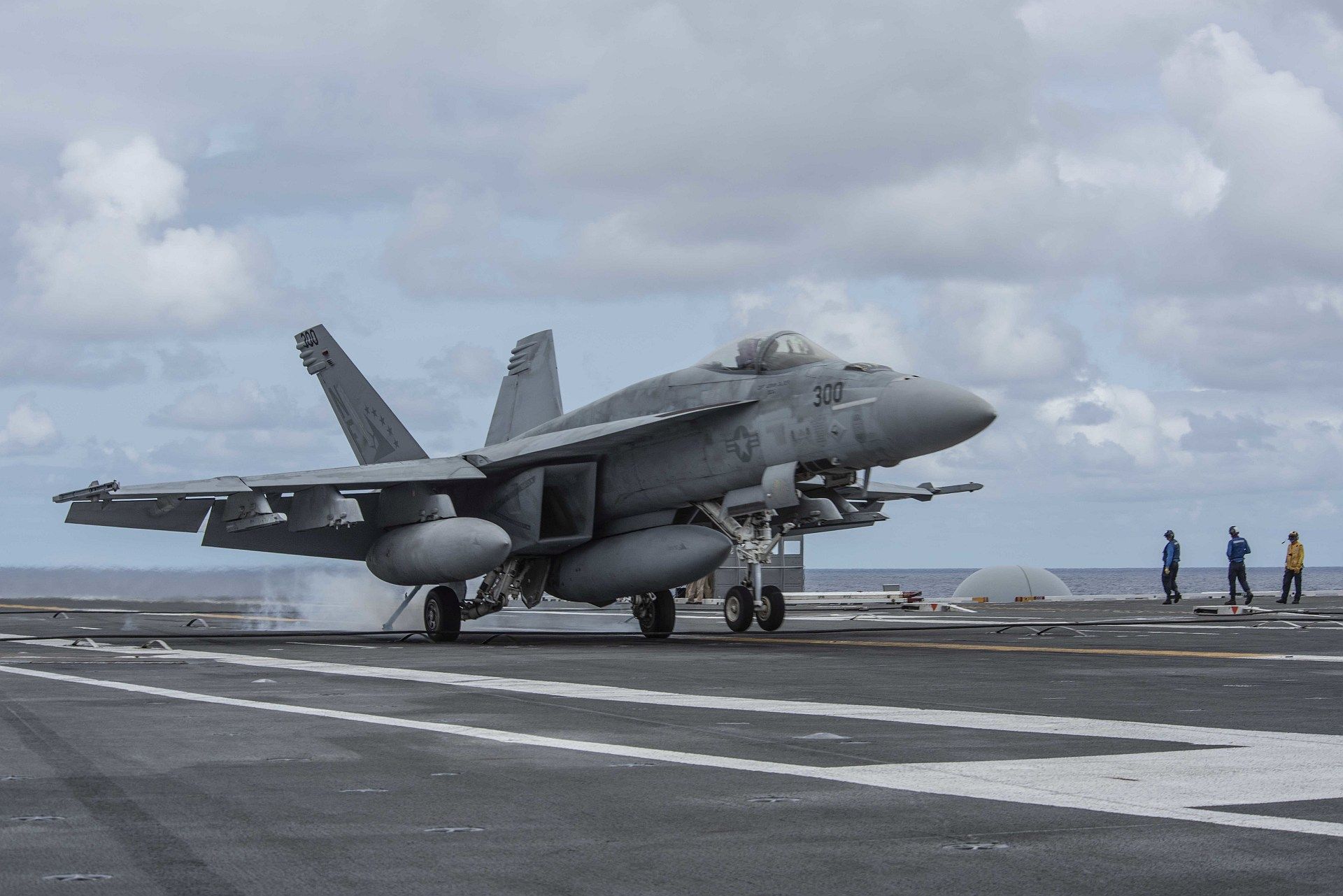
24 May 2020
Royal Navy helicopter crews have proved their ability to protect the UK?s aircraft carriers with a new missile system.
As sailors and marines support the current national fight against COVID-19, the Yeovilton-based Wildcat Maritime Force, which includes 815 Naval Air Squadron, is focused on ensuring the UK is prepared for future global threats.
Blasting from a Wildcat helicopter, the new Martlet missile was this week tested on a range off the coast of Wales.
In 0.3 seconds, the missile detached from the Wildcat HMA Mk2 helicopter, accelerating to one and a half times the speed of sound.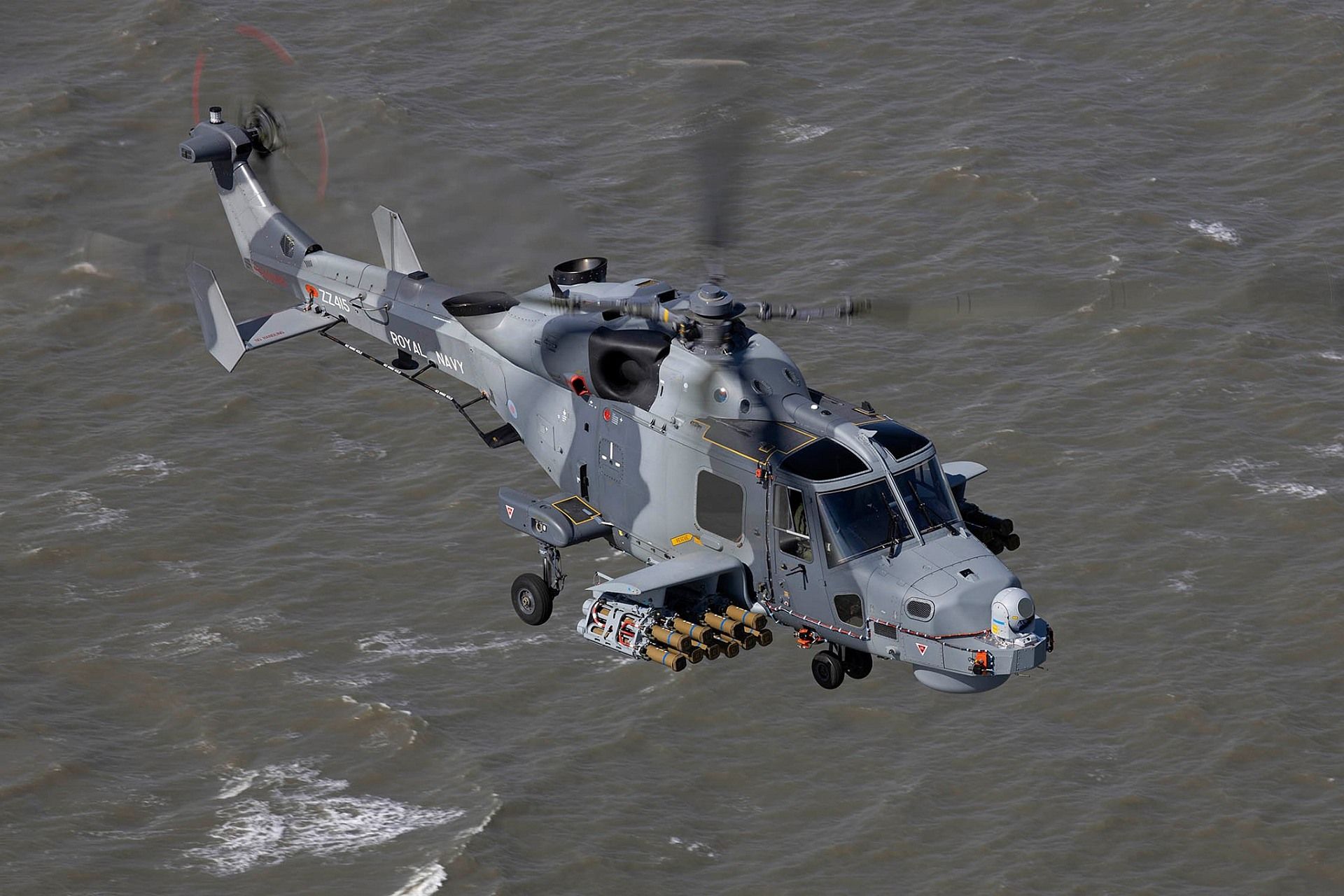
The trials mark an important milestone in the testing of the new system which will arm the Wildcat helicopters that deploy as part of HMS Queen Elizabeth?s maiden operational deployment next year.
Commander Matt Boulind Royal Navy, the Wildcat Maritime Force Commander, said: ?This test firing shows the Wildcat helicopter will be ready to help defend our Queen Elizabeth-class carriers and their strike groups for years to come.
?The Royal Navy and Army introduced Wildcat helicopters into service five years ago and the firing of the Martlet this week is a very significant milestone and represents a huge success for the joint industry and MoD team.
?This firing underpins future Royal Navy offensive capability and the defence of the surface fleet.?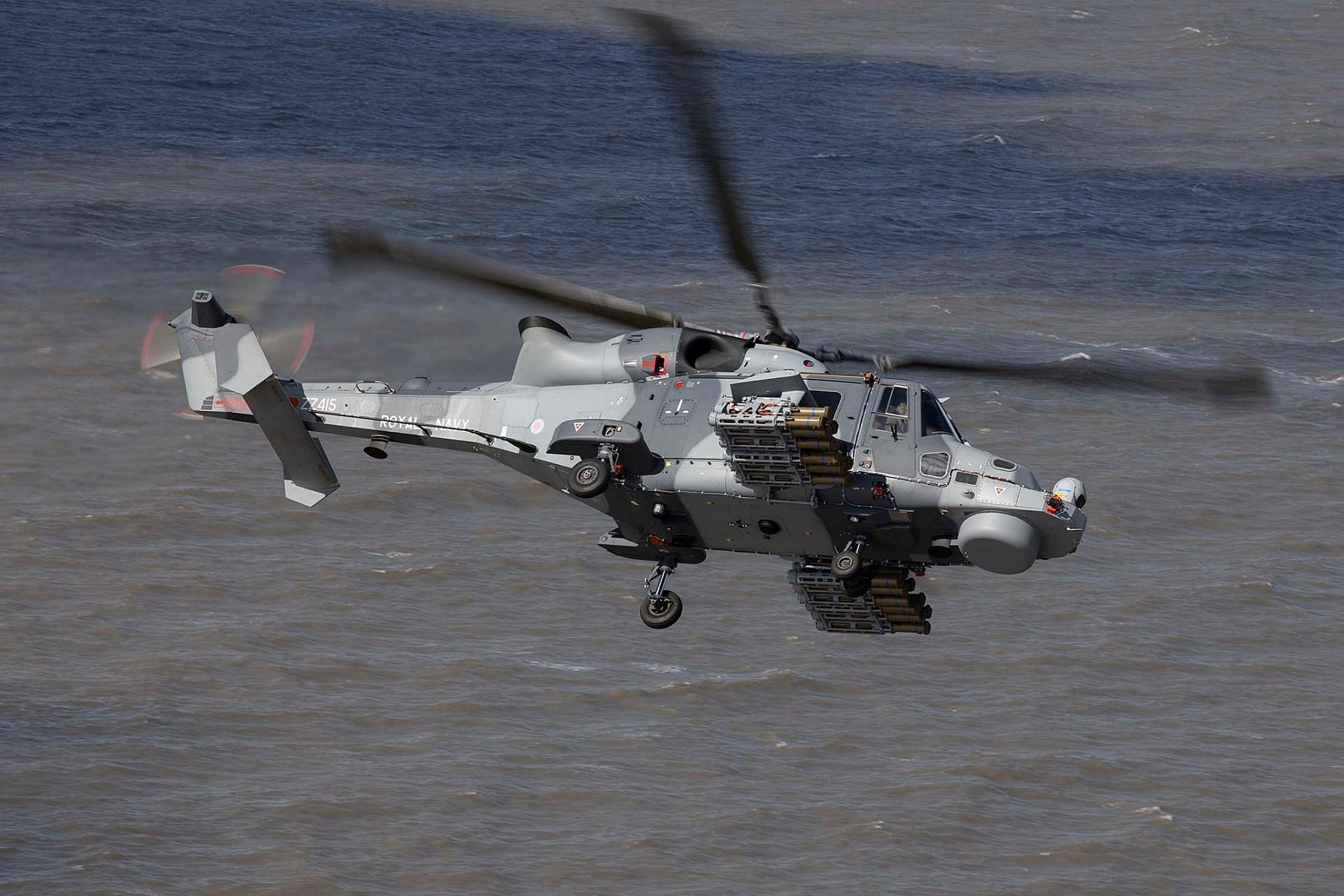
Managed by the Lightweight and Medium Attack Systems and Wildcat delivery teams at DE&S, and manufactured by Thales, the laser-sensor missile can be used against stationary and moving targets.
Captain Mark Langrill, DE&S Wildcat Delivery Team Leader, said it was important these trials went ahead.
?These firings mark a vital step forward in the integration of the uniquely flexible Martlet missile into what is already an outstanding helicopter to provide the Royal Navy with a world-class capability,? he added.
?I am grateful to all those, across industry and the Ministry of Defence, who have worked so hard to achieve this milestone.?
The preparation for the firing was conducted in line with current government social distancing rules due to the coronavirus, adding an unexpected hurdle for the teams involved to overcome.
Martlet, also known as the Lightweight Multirole Missile, has already been successfully launched off frigate HMS Sutherland so the latest firing was to test it in its primary role.
The firing was captured with high resolution cameras so the teams from both Thales and the Wildcat lead Leonardo Helicopters can analyse the system in minute detail.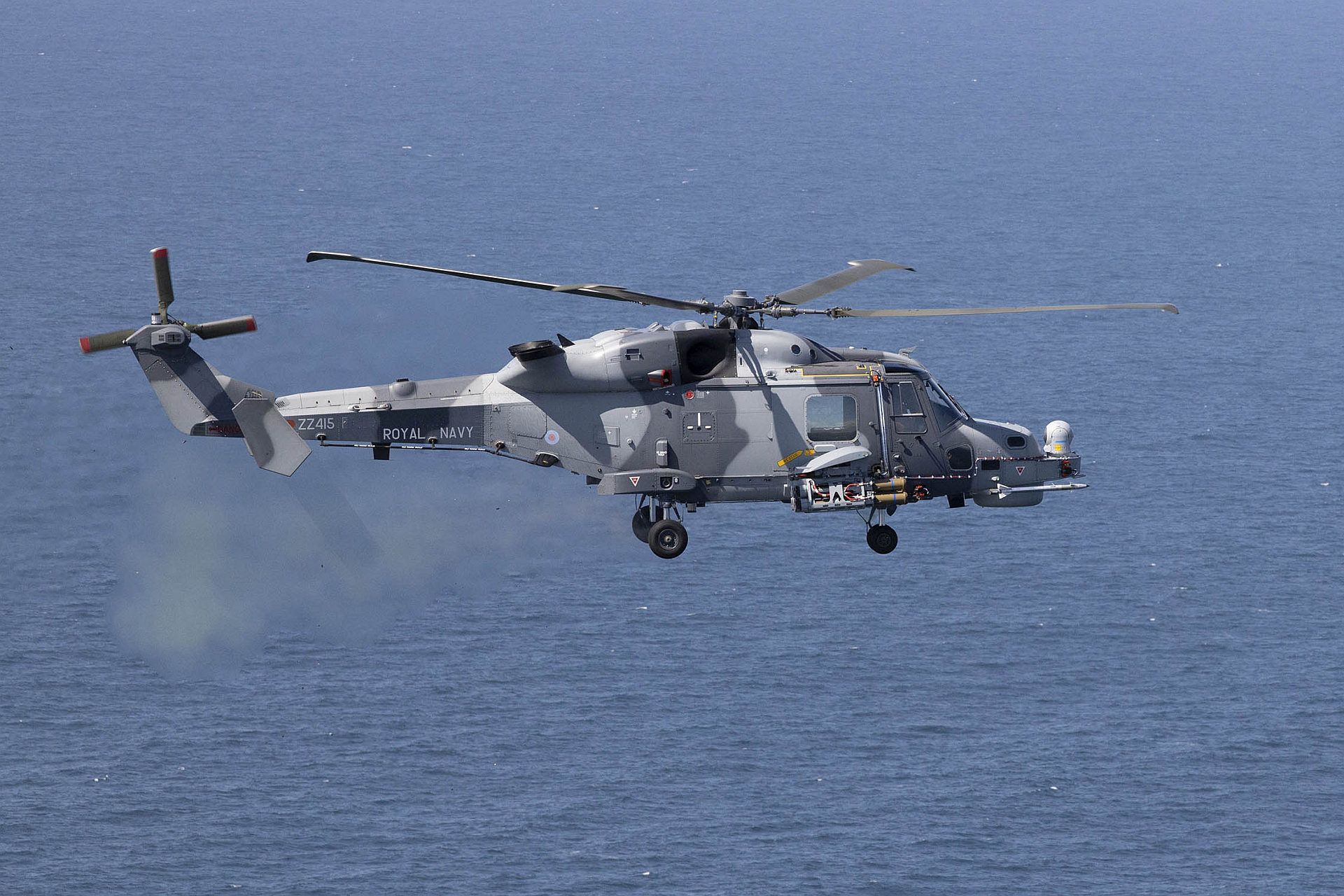
Philip McBride, general manager of Integrated Airspace-protection Systems as Thales UK, said: ?Martlet will ensure the Wildcat has the best-in-class offensive capability to protect the carrier strike group. With each helicopter capable of carrying up to 20 missiles, the Wildcats deployed will be a significant deterrent to anyone wishing to interfere with UK interests.?
Nick Whitney, Managing Director of Leonardo Helicopters, added: ?This major milestone demonstrates that the combination of the AW159 Wildcat and Martlet missile will be a flexible and effective tool for the Royal Navy. Next year the Wildcat fleet will embark on Carrier Strike Group missions with HMS Queen Elizabeth on its maiden operational deployment. As the only British company to design and manufacture helicopters on-shore, we?re extremely proud to be equipping the UK Armed Forces with world-beating sovereign capabilities.??
The Royal Navy is transforming into a force centred around carrier strike ? supporting the ships as they conduct carrier strike missions, enforce no-fly zones, deploy Royal Marine Commandos, deliver humanitarian aid, and build international partnerships with our allies.
-
 Main AdminPHILIPPINE SEA (May 26, 2020) An F/A-18E Super Hornet attached to Strike Fighter Squadron (VFA) 195 practices a touch-and-go maneuver on the flight deck of the Navy's only forward-deployed aircraft carrier USS Ronald Reagan (CVN 76). Ronald Reagan, the flagship of Carrier Strike Group 5, provides a combat-ready force that protects and defends the United States, as well as the collective maritime interests of its allies and partners in the Indo-Pacific region. (U.S. Navy photo's by Mass Communication Specialist 2nd Class Samantha Jetzer)
Main AdminPHILIPPINE SEA (May 26, 2020) An F/A-18E Super Hornet attached to Strike Fighter Squadron (VFA) 195 practices a touch-and-go maneuver on the flight deck of the Navy's only forward-deployed aircraft carrier USS Ronald Reagan (CVN 76). Ronald Reagan, the flagship of Carrier Strike Group 5, provides a combat-ready force that protects and defends the United States, as well as the collective maritime interests of its allies and partners in the Indo-Pacific region. (U.S. Navy photo's by Mass Communication Specialist 2nd Class Samantha Jetzer)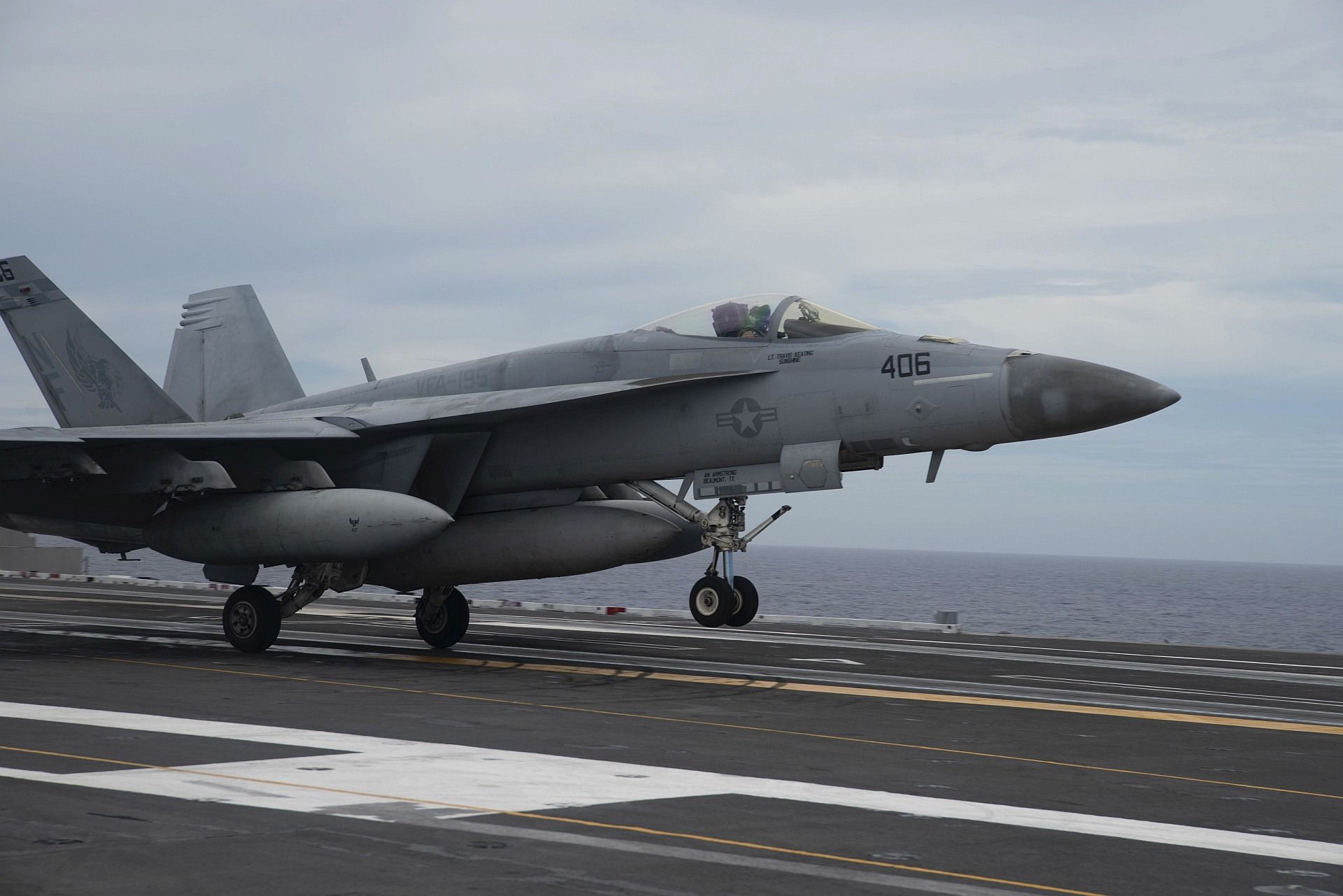
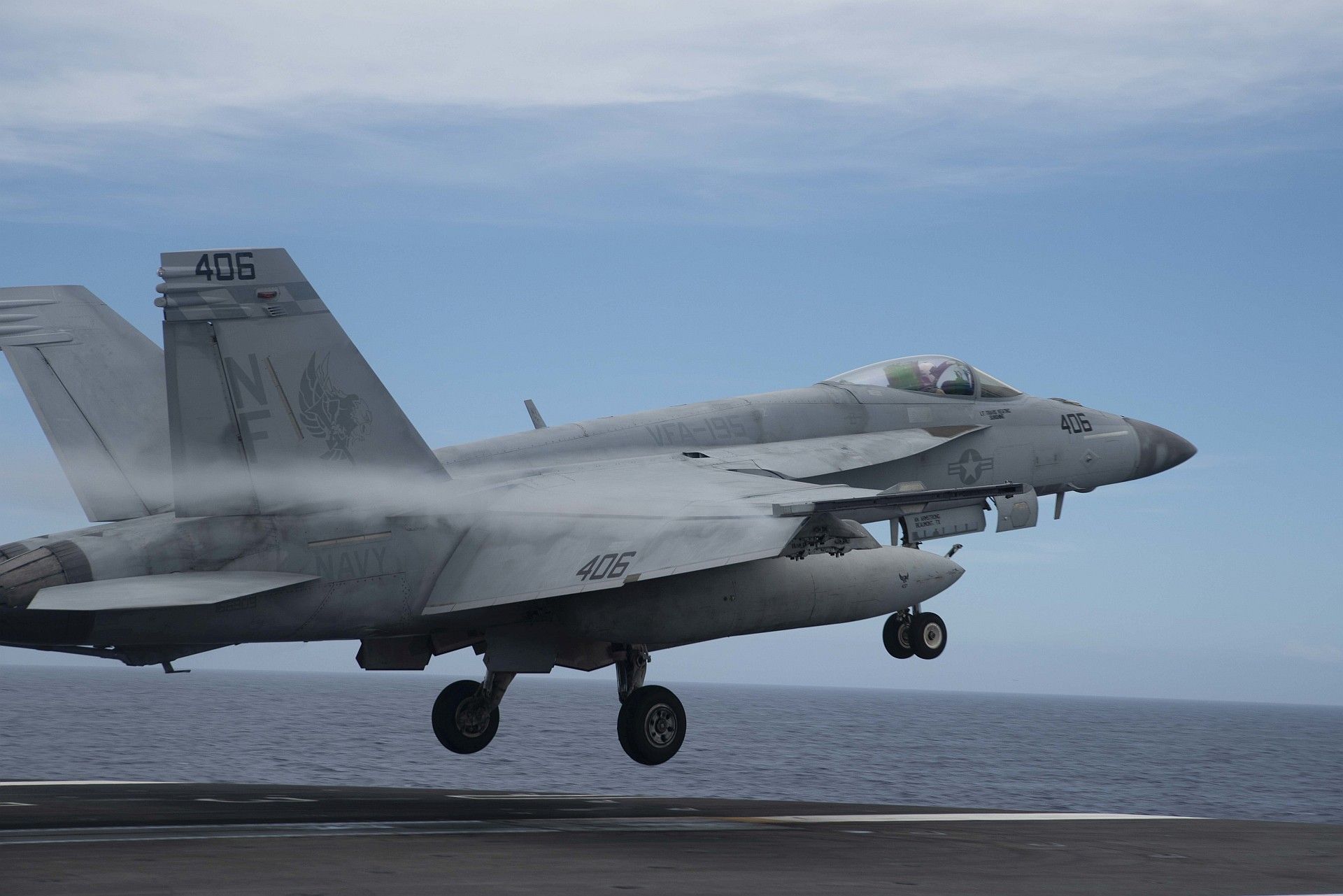
S?o Jos? dos Campos, Brazil, May 26th, 2020 ? Congo Airways have converted the firm order made in December 2019 for two E175 aircraft, with purchase rights for two more, into a firm order for two E190-E2 jets, with purchase rights for a further two. The new deal has a total value of USD 256 million at current list prices with all purchase rights exercised, and will be included in Embraer?s second quarter backlog.
Desire Bantu, CEO of Congo Airways said, ?These new jets will be replacing our legacy turboprops and will allow us to extend our operations within the Democratic Republic of Congo, and regionally to West, Central, and Southern Africa. Despite the current difficult circumstances, the fundamentals of our market have not changed; so we expect the momentum we?ve seen in the past to redevelop. I said in December that we may need to make an additional order for E2s due to the agility required to adapt to market changes ? we have now reached that point. As we prepare for future success, we will have the flexibility, and the right sized, most efficient aircraft, to serve our customers as the market returns.?
?It?s great to welcome another airline to the E2 and the Embraer family of operators, especially in Africa where the demand for regional travel had been growing strongly before the current crisis. Africa has long been a market with low frequencies and long thin routes. As airlines start ramp up their operations, the E2 family of aircraft is perfectly positioned to right size routes previously operated by narrowbodies, while keeping frequencies and adjusting capacity to new levels.? said Raul Villaron, Vice President Sales, Africa and Middle East, Embraer Commercial Aviation ?We look forward to supporting Congo Airways as they continue to upgrade their offering to their customers.?
The aircraft will be configured in a dual class layout seating 96 passengers in total, with 12 staggered business class seats. Deliveries are expected to begin in the second quarter of 2022. This is second E2 order received from an African customer. There are currently 189 Embraer aircraft operating in Africa with 54 airlines in 27 countries.
Embraer is the world?s leading manufacturer of commercial aircraft up to 150 seats with more than 100 customers across the world. For the E-Jets program alone, Embraer has logged more than 1,800 orders and 1,500 aircraft have been delivered. Today, E-Jets are flying in the fleets of 80 customers in 50 countries. The versatile 70 to 150-seat family is flying with low-cost airlines as well as with regional and mainline network carriers.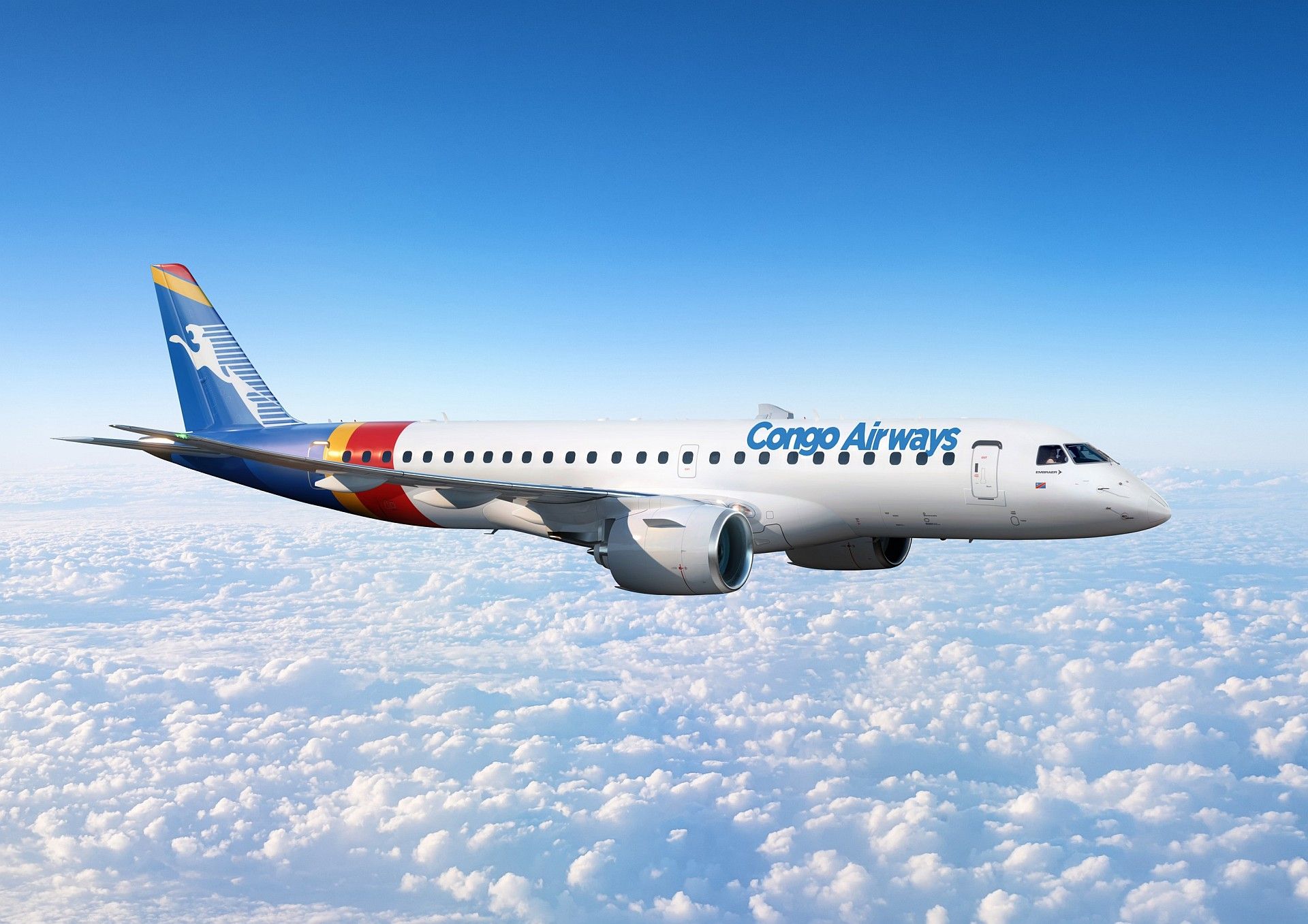
-
 Main AdminA 48th Fighter Wing F-15E Strike Eagle flies over Royal Air Force Lakenheath, England, May 27, 2020. During a large force exercise with other U.S. Air Forces in Europe-Air Forces Africa units, 48th Fighter Wing aircrew conducted Dissimilar Air Combat Training in order to enhance combat readiness and increase tactical proficiency needed to maintain a ready force capable of ensuring the collective defense of the NATO alliance. (U.S. Air Force photo by Senior Airman Christopher S. Sparks)
Main AdminA 48th Fighter Wing F-15E Strike Eagle flies over Royal Air Force Lakenheath, England, May 27, 2020. During a large force exercise with other U.S. Air Forces in Europe-Air Forces Africa units, 48th Fighter Wing aircrew conducted Dissimilar Air Combat Training in order to enhance combat readiness and increase tactical proficiency needed to maintain a ready force capable of ensuring the collective defense of the NATO alliance. (U.S. Air Force photo by Senior Airman Christopher S. Sparks)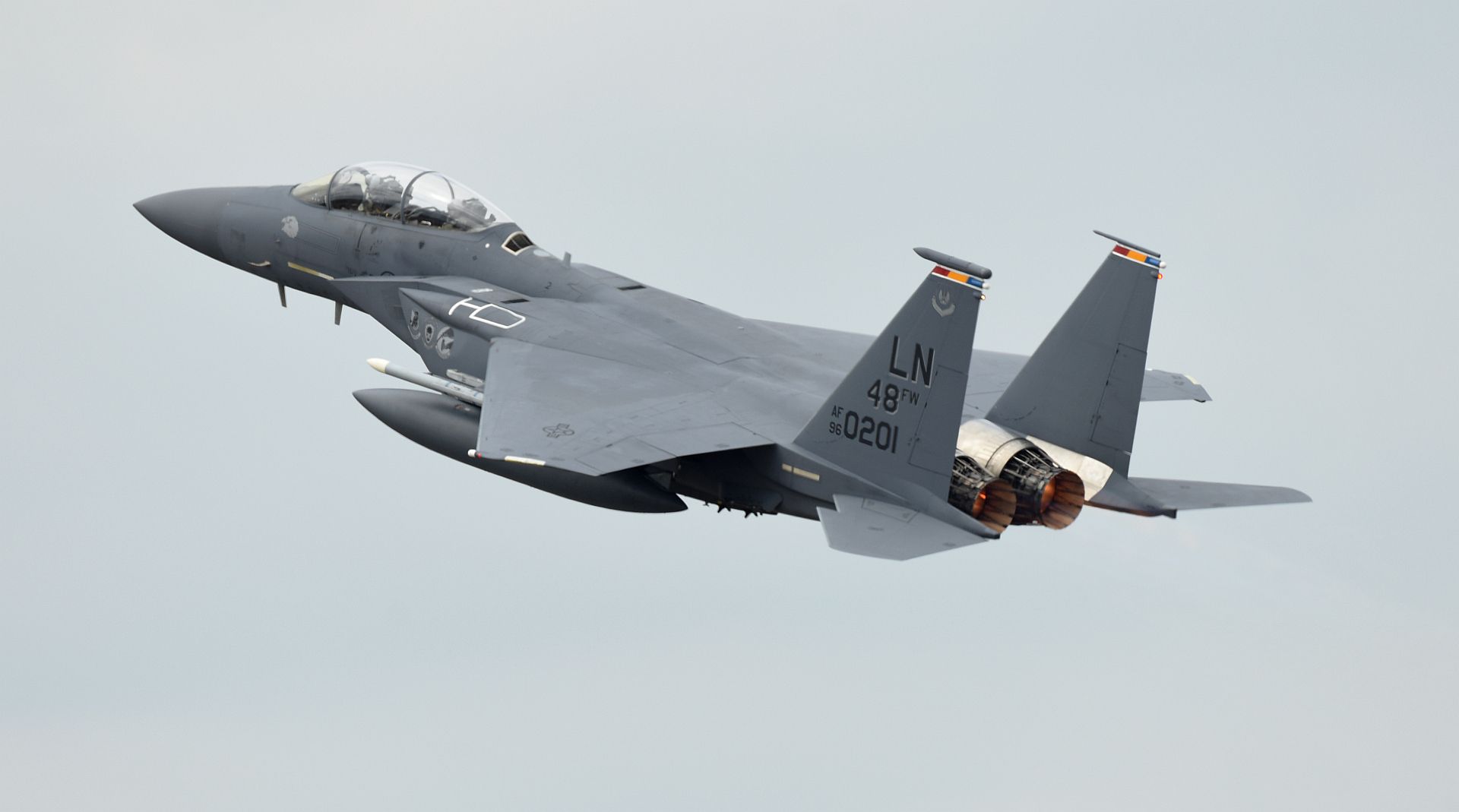
An F-15C Eagle assigned to the 493rd Fighter Squadron takes off from Royal Air Force Lakenheath, England, May 27, 2020. During a large force exercise with other U.S. Air Forces in Europe-Air Forces Africa units, 48th Fighter Wing aircrew conducted Dissimilar Air Combat Training in order to enhance combat readiness and increase tactical proficiency needed to maintain a ready force capable of ensuring the collective defense of the NATO alliance. (U.S. Air Force photo by Senior Airman Christopher S. Sparks)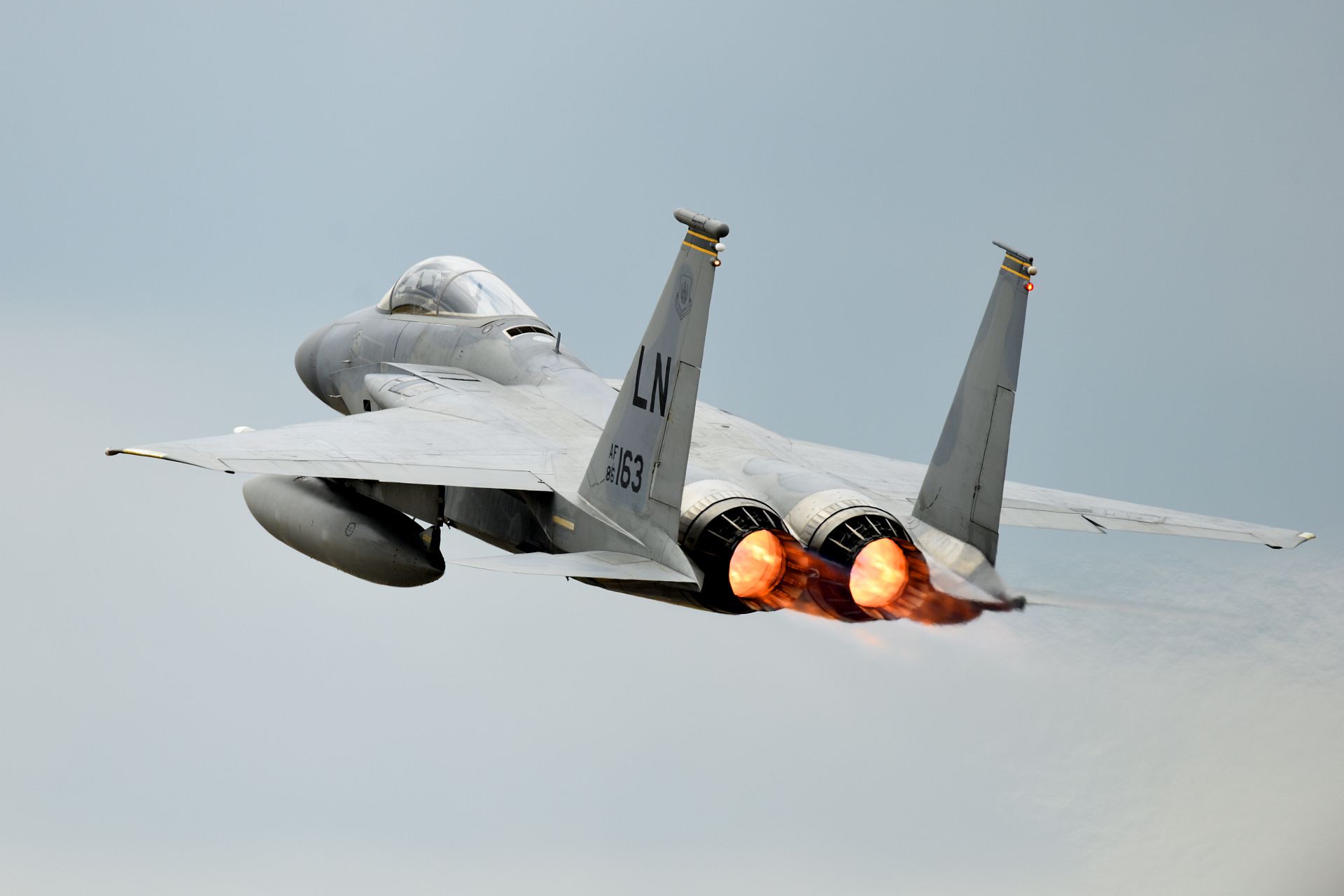
PHILIPPINE SEA (May 26, 2020) An EA-18G Growler attached to Electronic Attack Squadron (VAQ) 141 sits on the flight deck of the Navy's only forward-deployed aircraft carrier USS Ronald Reagan (CVN 76). Ronald Reagan, the flagship of Carrier Strike Group 5, provides a combat-ready force that protects and defends the United States, as well as the collective maritime interests of its allies and partners in the Indo-Pacific region. (U.S. Navy photo by Mass Communication Specialist 3rd Class Jason Tarleton)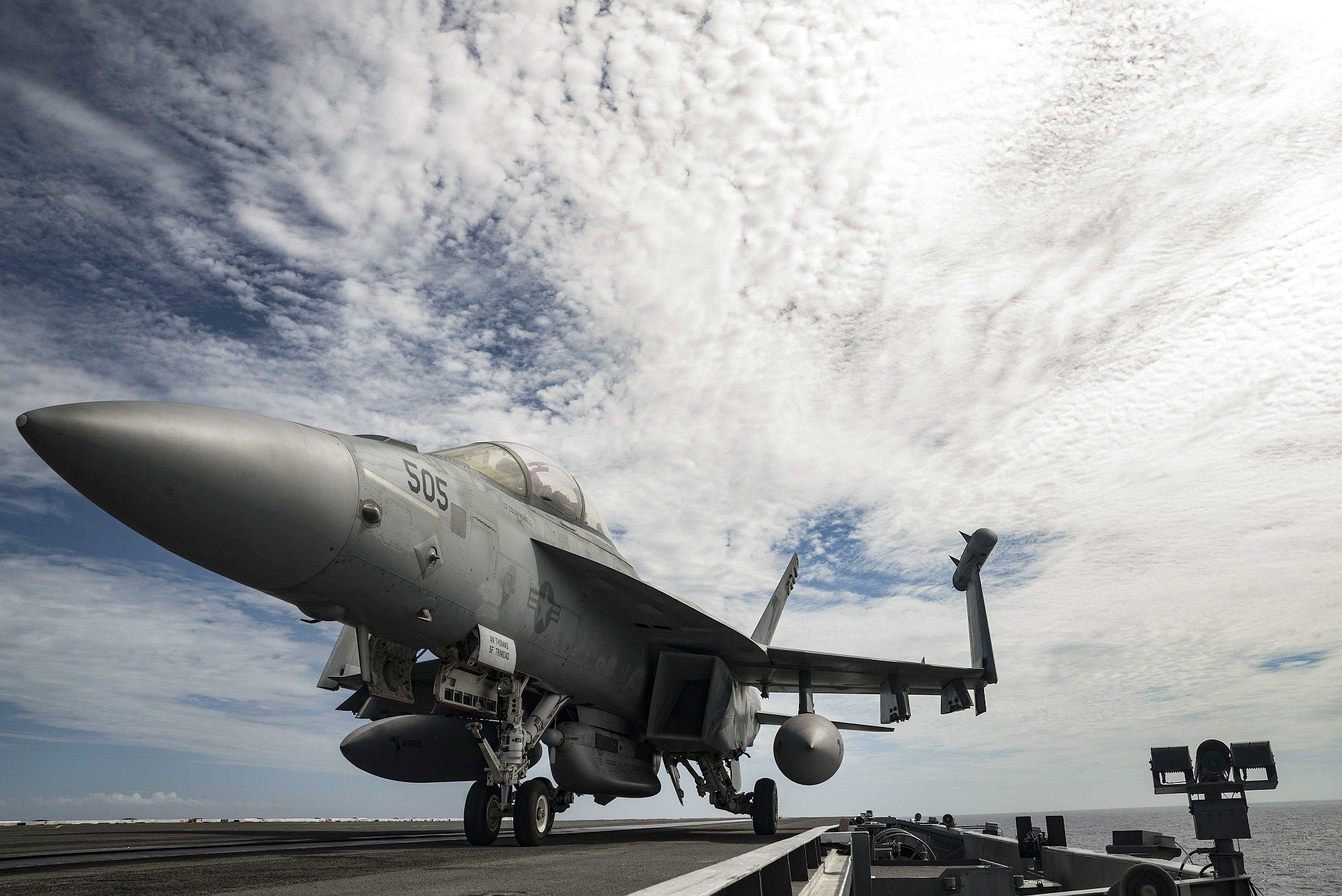
MEDITERRANEAN SEA (May 26, 2020) Two Russian Su-35 aircraft unsafely intercept a P-8A Poseidon patrol aircraft assigned to U.S. 6th Fleet over the Mediterranean Sea, May 26, 2020. The intercept was determined to be unsafe and unprofessional due to the Russian pilots taking close station on each wing of the P-8A simultaneously, restricting the P-8A's ability to safely maneuver, and lasted a total of 64 minutes. U.S. 6th Fleet, headquartered in Naples, Italy, conducts the full spectrum of joint and naval operations, often in concert with allied and interagency partners, in order to advance U.S. national interests and security and stability in Europe and Africa. (U.S. Navy photo's/Released)
RAF Typhoons currently based at Siauliai Air Base Lithuania, conducting the NATO
Air Policing Mission, have been conducting training sorties with the Spanish Air Force. The Spanish F-18 Hornets are also currently based at Siauliai and are also carrying out the Baltic Air Policing Mission.
The training is designed to ensure the pilots from both nations maintain their Basic Fighter Manoeuvre skills.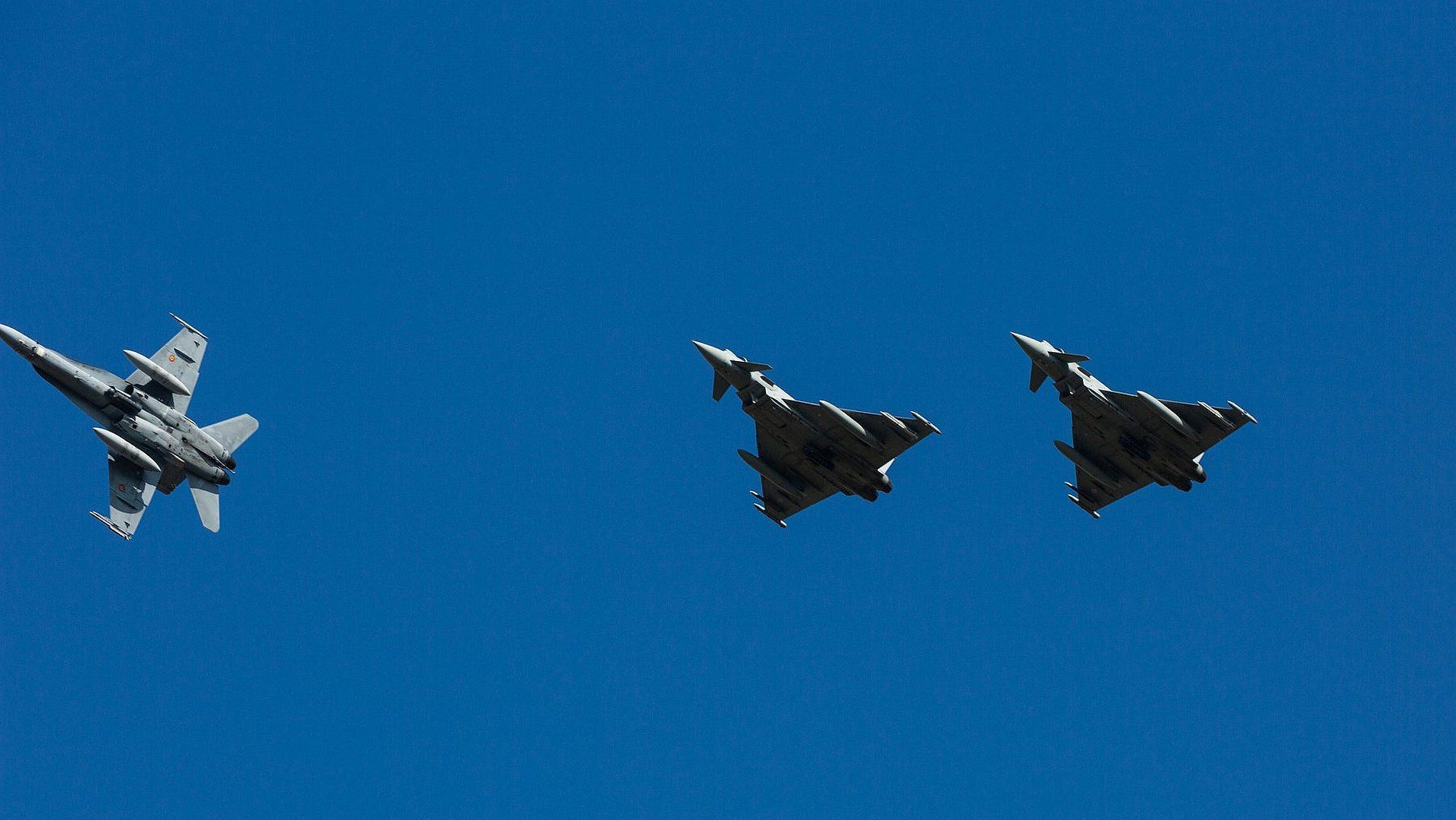
This type of training is known as Dissimilar Air Combat Training; and being able to conduct BFM skills flying against different aircraft types is a fundamental skillset for any fighter pilot.
Operation AZOTIZE is the UK?s commitment to the routine NATO Baltic Air Policing mission in Lithuania. RAF Typhoon fighter aircraft provide reassurance to Lithuania and other NATO partners through the provision of a Quick Reaction Alert (QRA) capability.
The Typhoon fighter aircraft operating under 135 EAW are deployed from 6 Squadron at RAF Lossiemouth.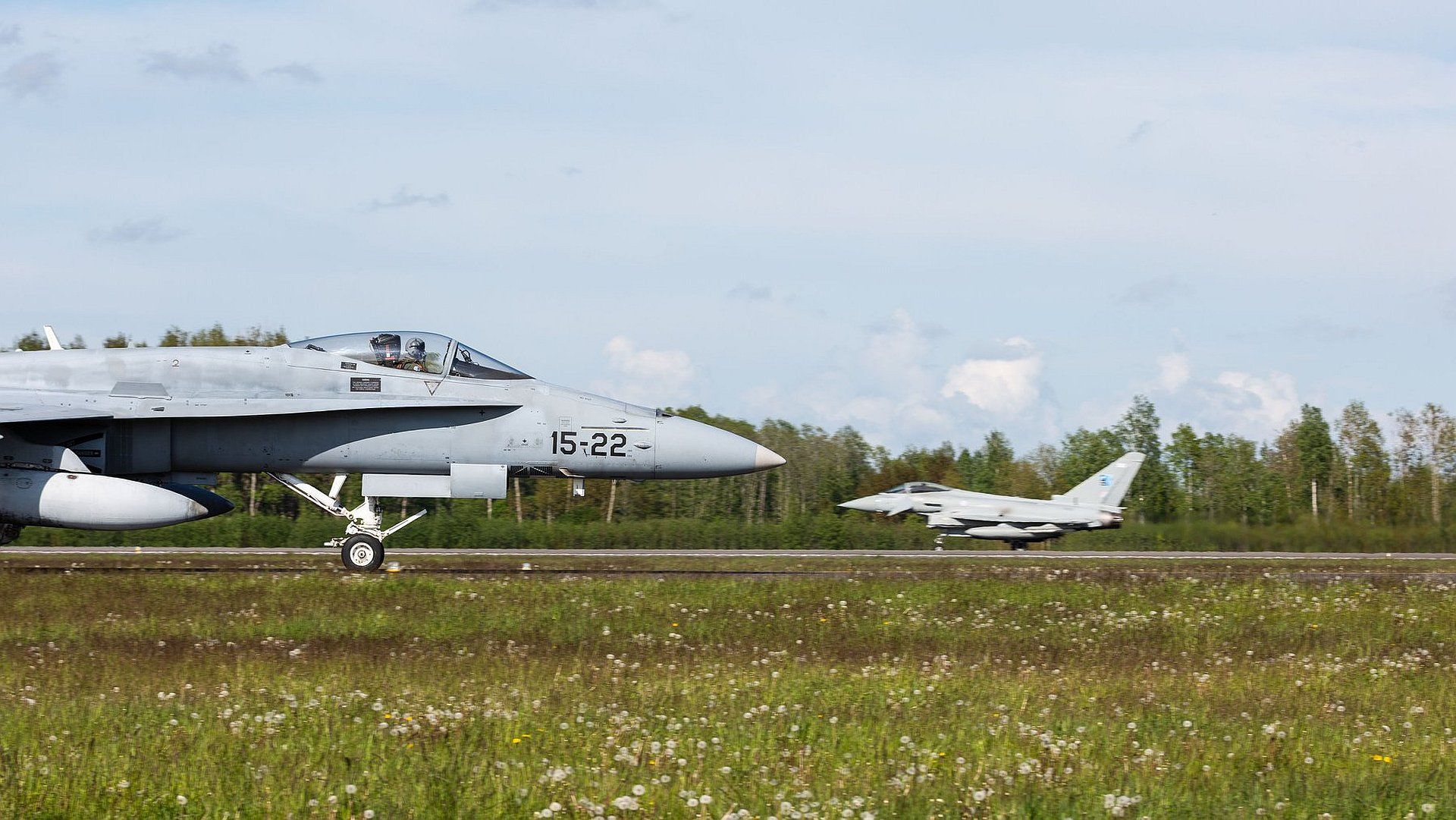
From May 11th to 18th, as part of the enhanced Air police (EAP) mission in Estonia, the hunters of the Groupe de Chasse 1/2 Cigognes kept the alert "hot".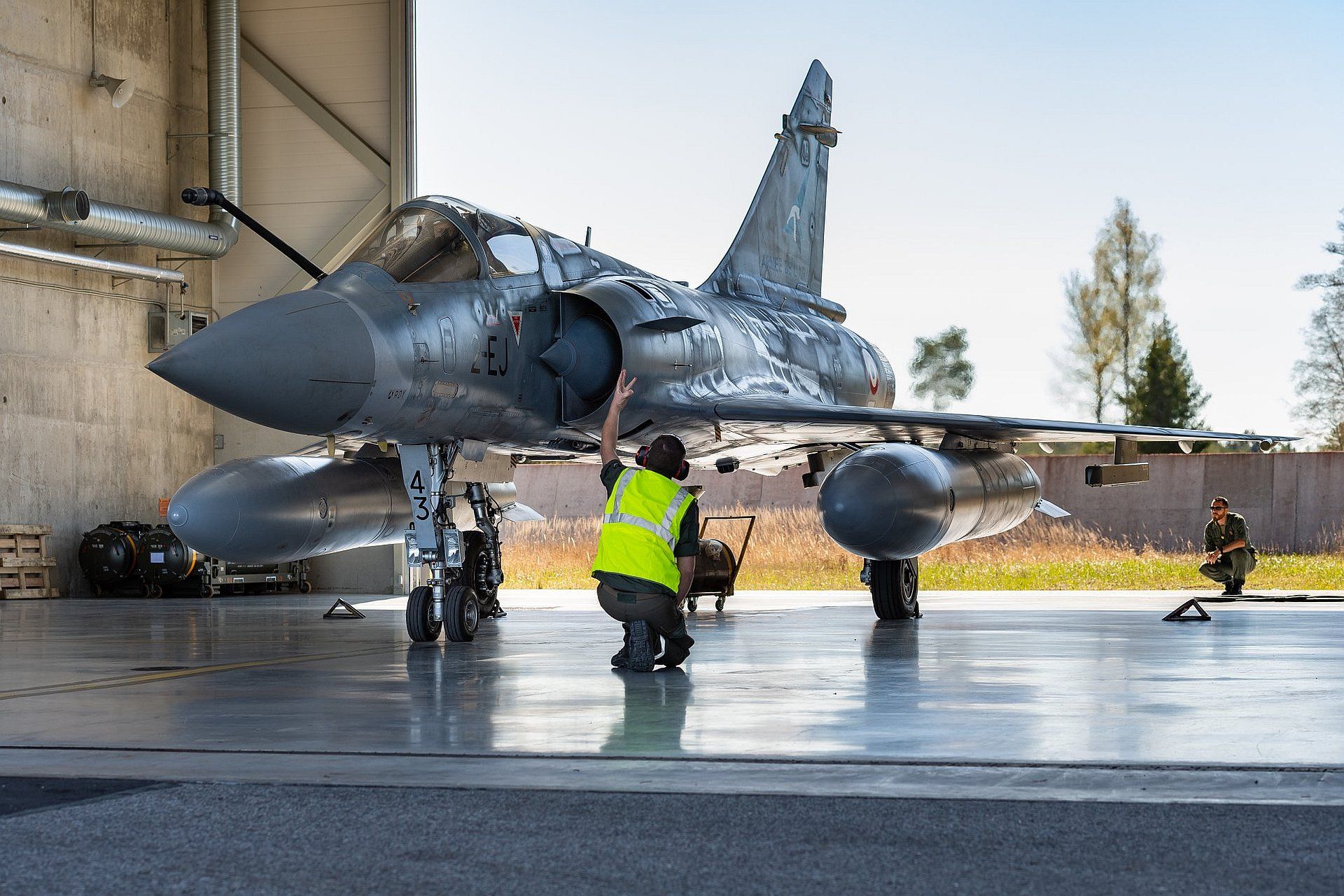
The 'hot' week is alert week: aircraft and their pilots are ready to contact aircraft entering the Baltic air space and do not meet the required criteria.
These flights are commonly called "Alpha scramble", this is the sky police mission.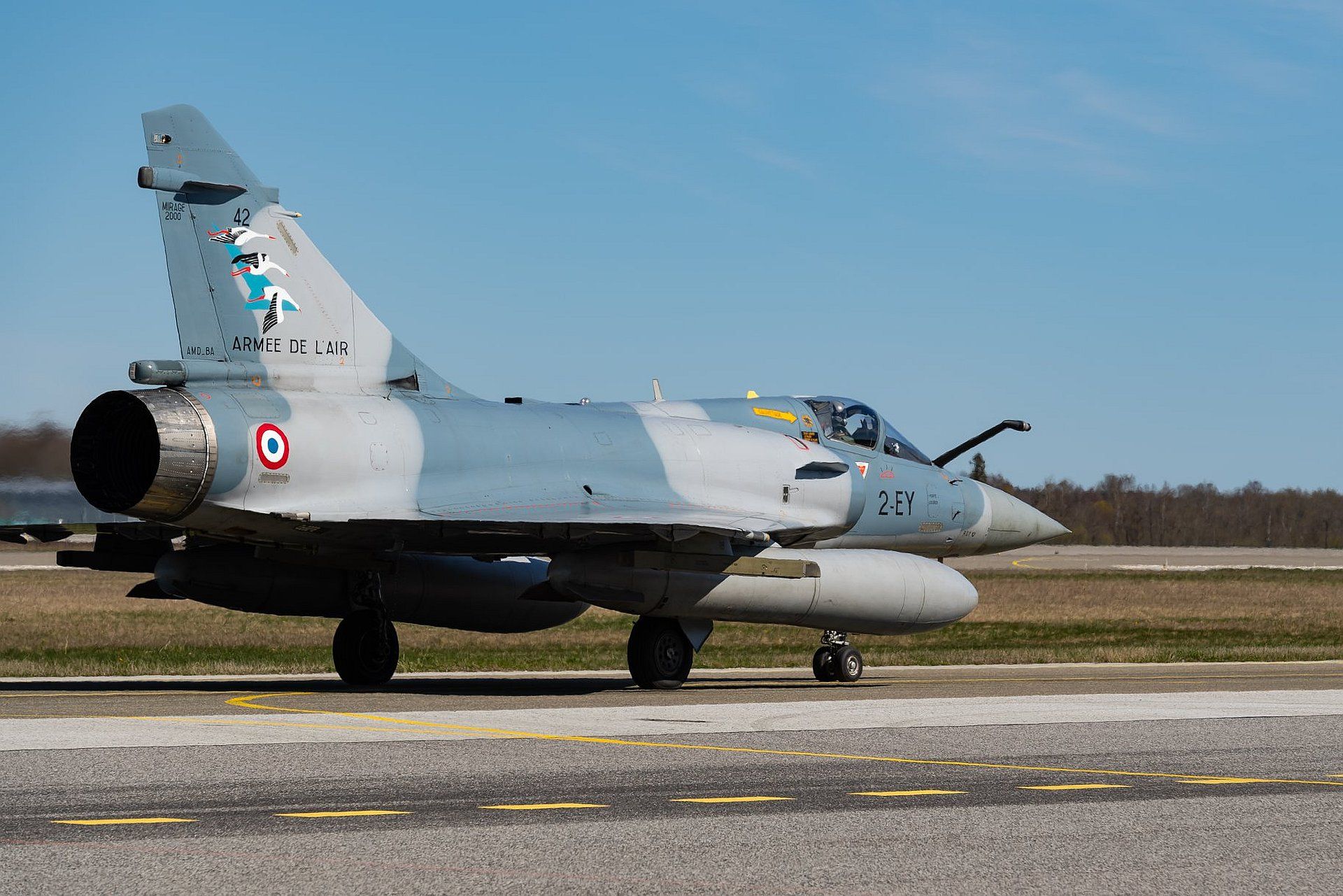
-
 Main AdminAn F-15E Strike Eagle assigned to the 494th Fighter Squadron lands at Royal Air Force Lakenheath, England, May 27, 2020. U.S. Air Force F-15s assigned to the 48th Fighter Wing, F-16s assigned to the 31st Fighter Wing and 52nd Fighter Wing, and KC-135s assigned to the 100th Air Refueling Wing participated in a large force exercise within the U.K. North Sea airspace. (U.S. Air Force photo by Airman 1st Class Jessi Monte)
Main AdminAn F-15E Strike Eagle assigned to the 494th Fighter Squadron lands at Royal Air Force Lakenheath, England, May 27, 2020. U.S. Air Force F-15s assigned to the 48th Fighter Wing, F-16s assigned to the 31st Fighter Wing and 52nd Fighter Wing, and KC-135s assigned to the 100th Air Refueling Wing participated in a large force exercise within the U.K. North Sea airspace. (U.S. Air Force photo by Airman 1st Class Jessi Monte)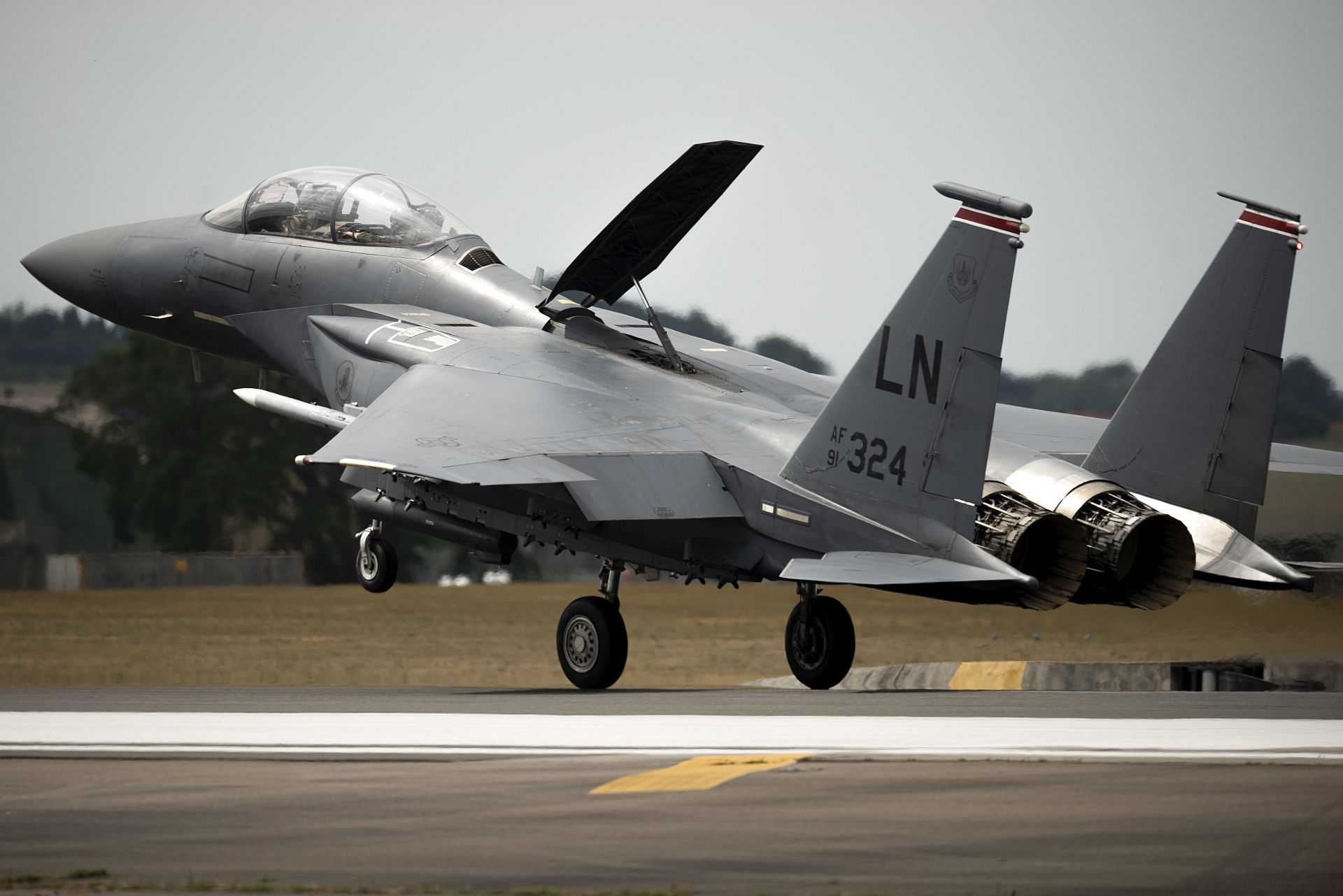
A U.S. Air Force F-16 Fighting Falcon, assigned to the 480th Fighter Squadron, taxis off at Spangdahlem Air Base, Germany, to participate in a large force exercise within the North Sea airspace, U.K., May 27, 2020. The purpose of this LFE was to conduct participating units to conduct training with other U.S Air Forces in Europe units in order to sharpen combat readiness and increase tactical proficiency to maintain a ready force capable of ensuring the collective defense of the NATO alliance. (U.S. Air Force photo by Senior Airman Melody W. Howley)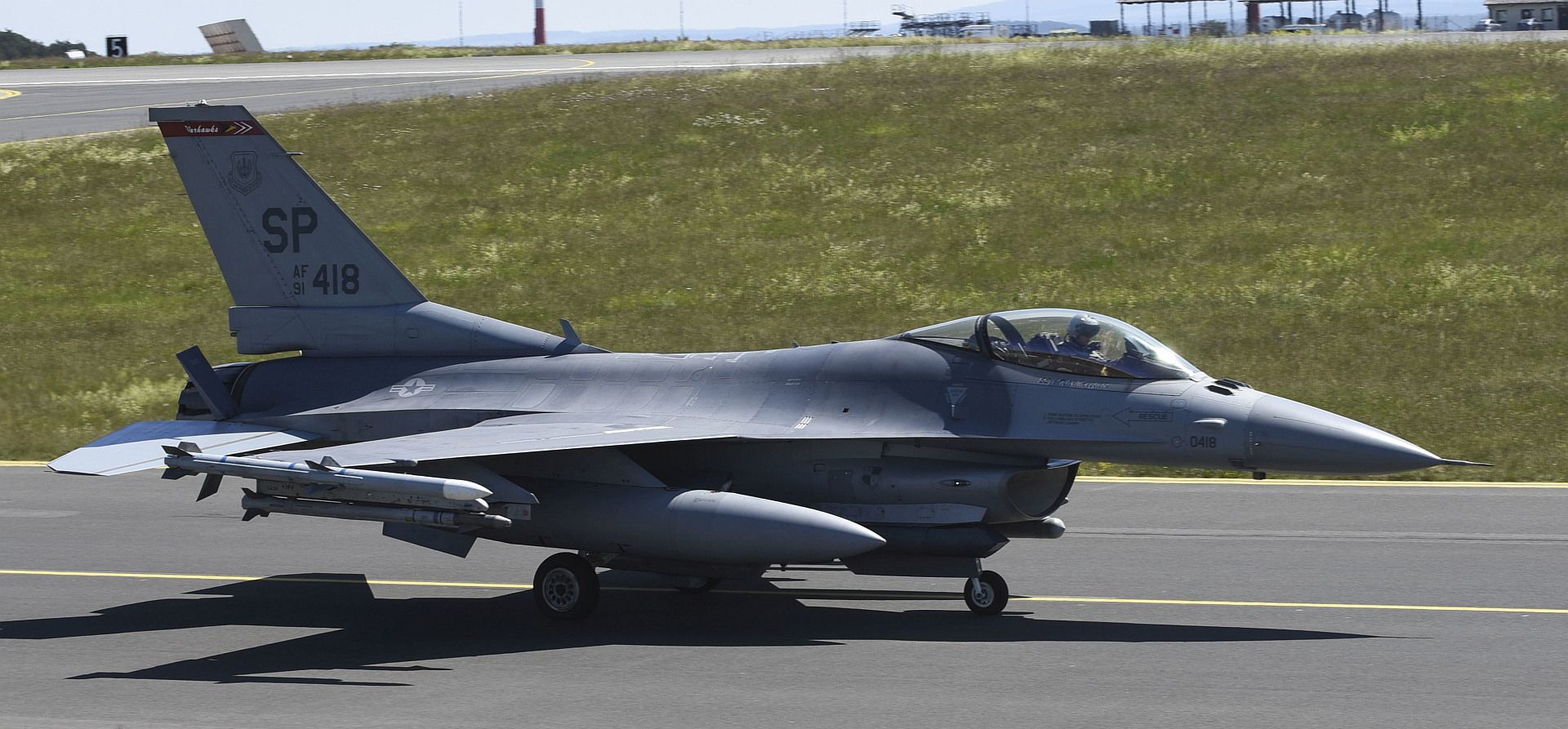
U.S. Air Force Lt. Col. Brian R. Grossweiler, a pilot with the 177th Fighter Wing, returns from a sortie May 27, 2020, at the Atlantic City Air National Guard Base, Egg Harbor Township, N.J. Grossweiler is being recognized by the Wing for achieving 2,000 flying hours in the F-16 Fighting Falcon. (U.S. Air National Guard photo by Staff Sgt. Cristina J. Allen)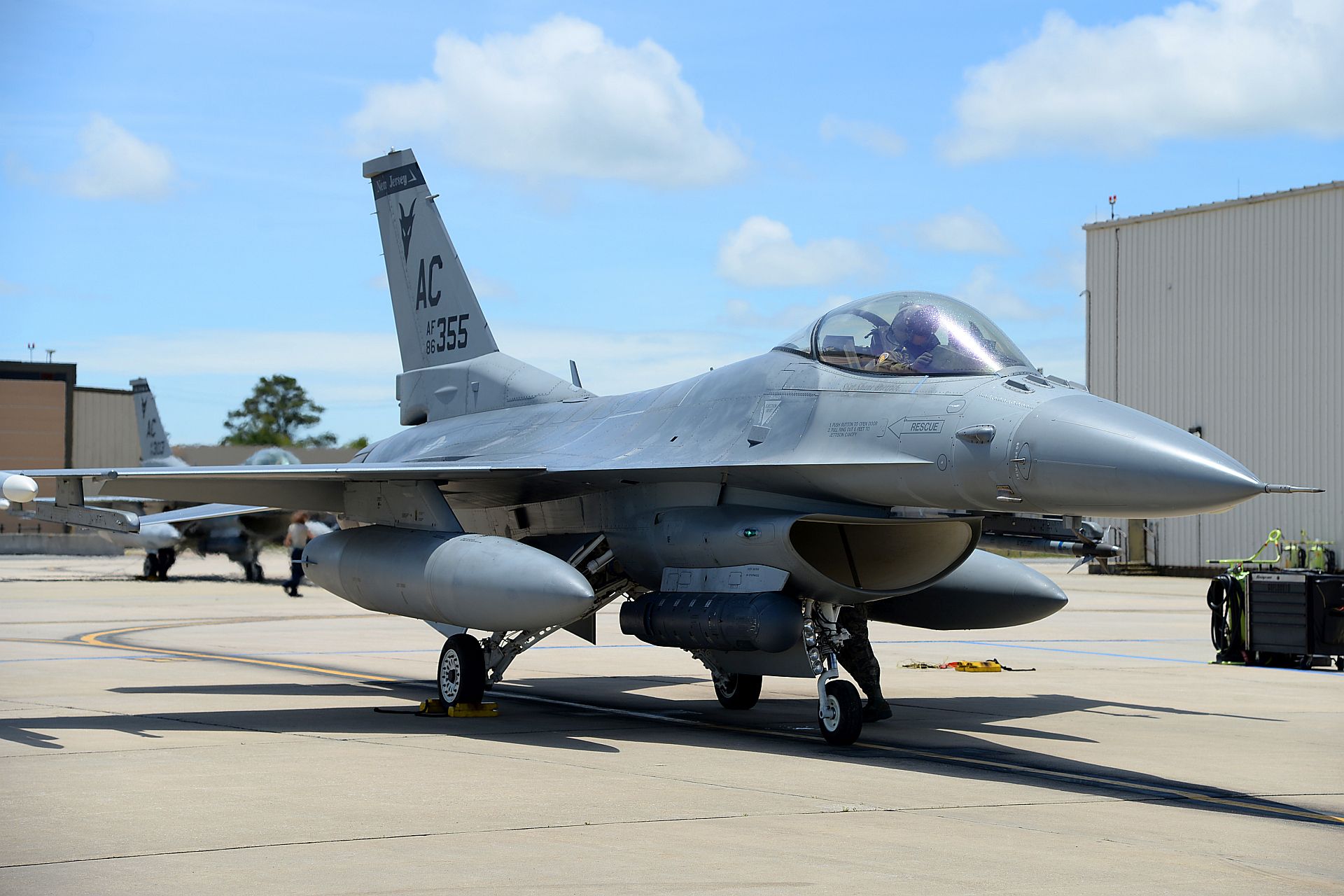
OAK HARBOR, Wash. (May 18, 2020) Aircraft 001, assigned to Patrol Squadron (VP) 40, sits on the parking apron. VP-40 is the final active duty Squadron to transition from the P-3C Orion aircraft to the P-8A Poseidon. VP-40 completed its transition May 14, 2020 on Naval Air Station Whidbey Island. (U.S. Navy Photo by Cmdr. Joseph Parsons/Released)
F-16 Fighting Falcon's, assigned to the 425th Fighter Squadron, prepare to land May 19, 2020, at Luke Air Force Base, Ariz. The F-16 can withstand up to nine G?s, nine times the force of gravity, with a full load of internal fuel. Luke AFB currently trains alongside six foreign nations and has graduated more than 61,000 fighter pilots since 1941. (U.S. Air Force photo's by Senior Airman Leala Marquez) -
5 years agoFri May 29 2020, 09:11pm
 Main Admin29.05.2020.
Main Admin29.05.2020.
The crews of young pilots and navigators of the Long-Range Aviation Units deployed in the Saratov Region performed night flights on strategic missile carriers Tu-160 and Tu-95ms.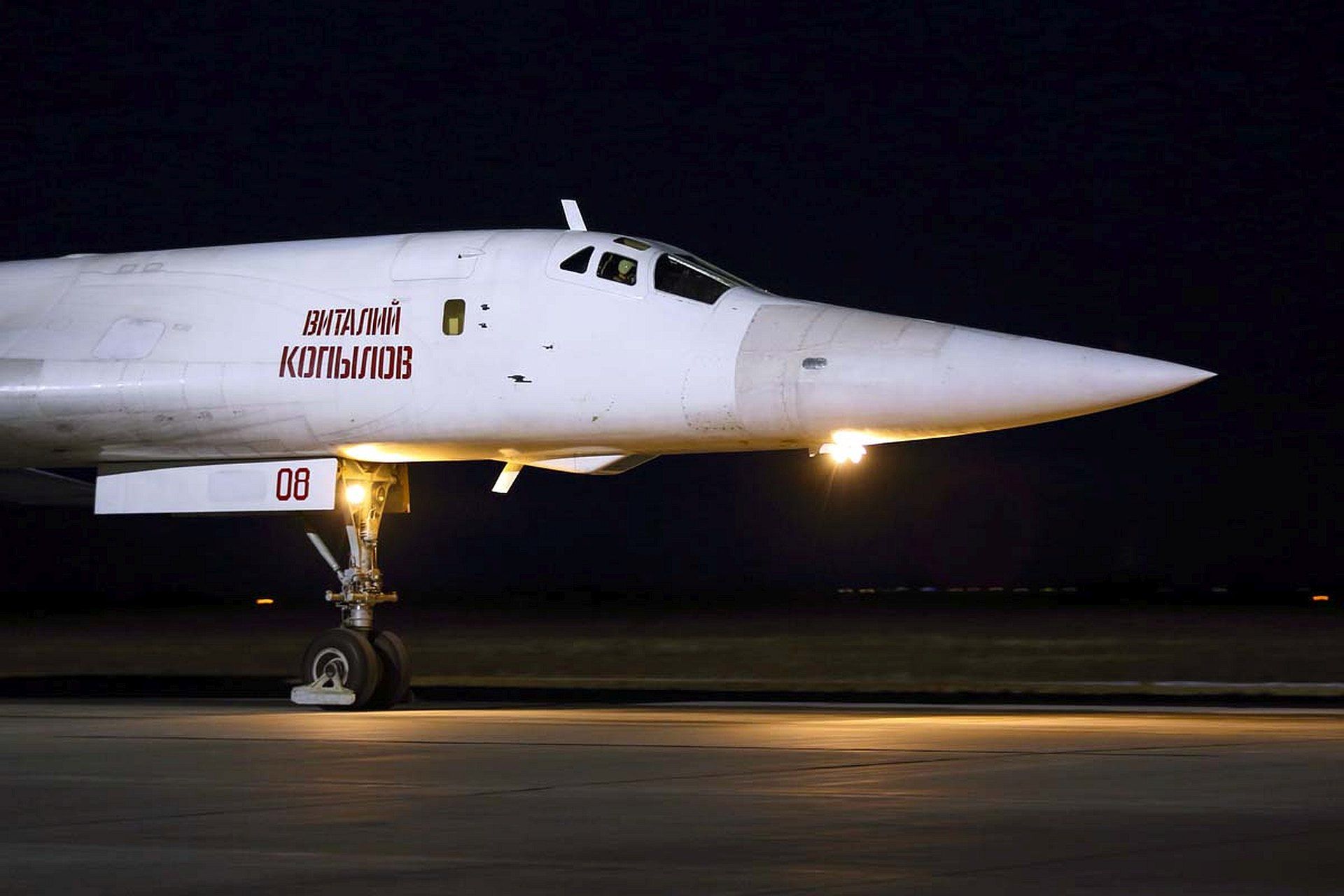
Training flights were supervised by experienced instructors.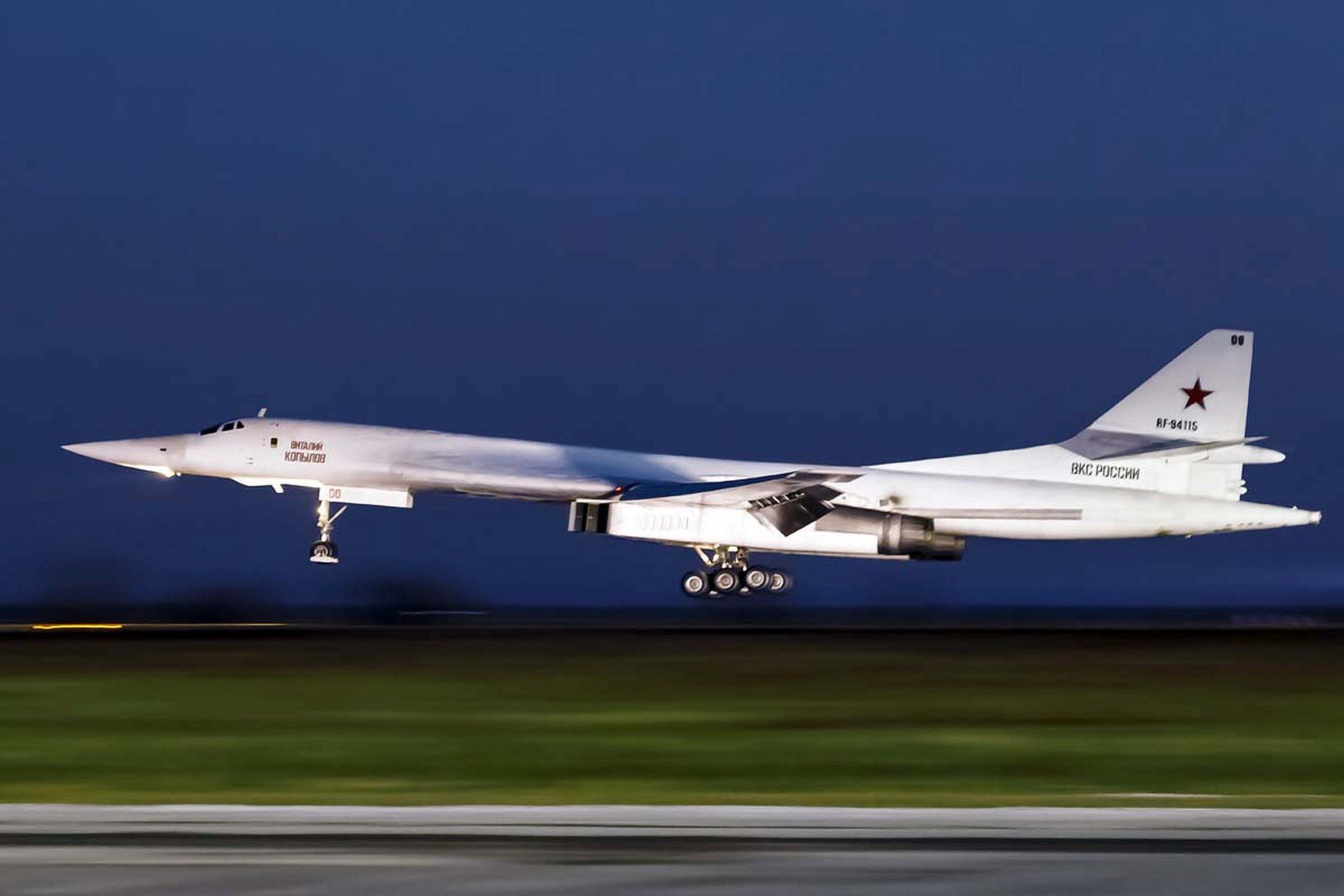
Crews practiced take-offs and landings, flights en route and in a given zone, as well as elements of interaction with the flight management group with limited visibility in the dark.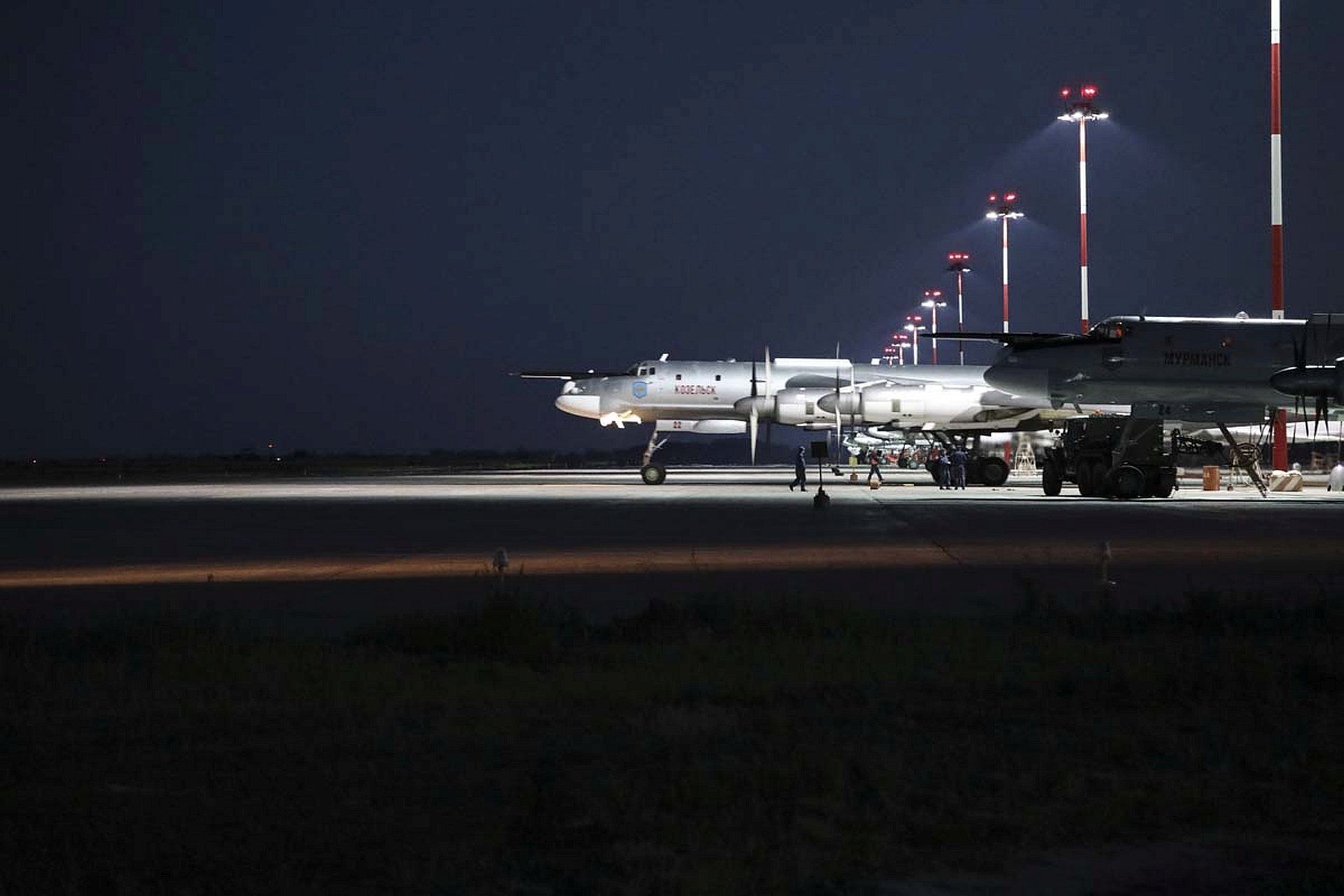
On the ground, the engineering and technical staff worked out the standards for servicing and preparing aircraft for re-departures at set time intervals.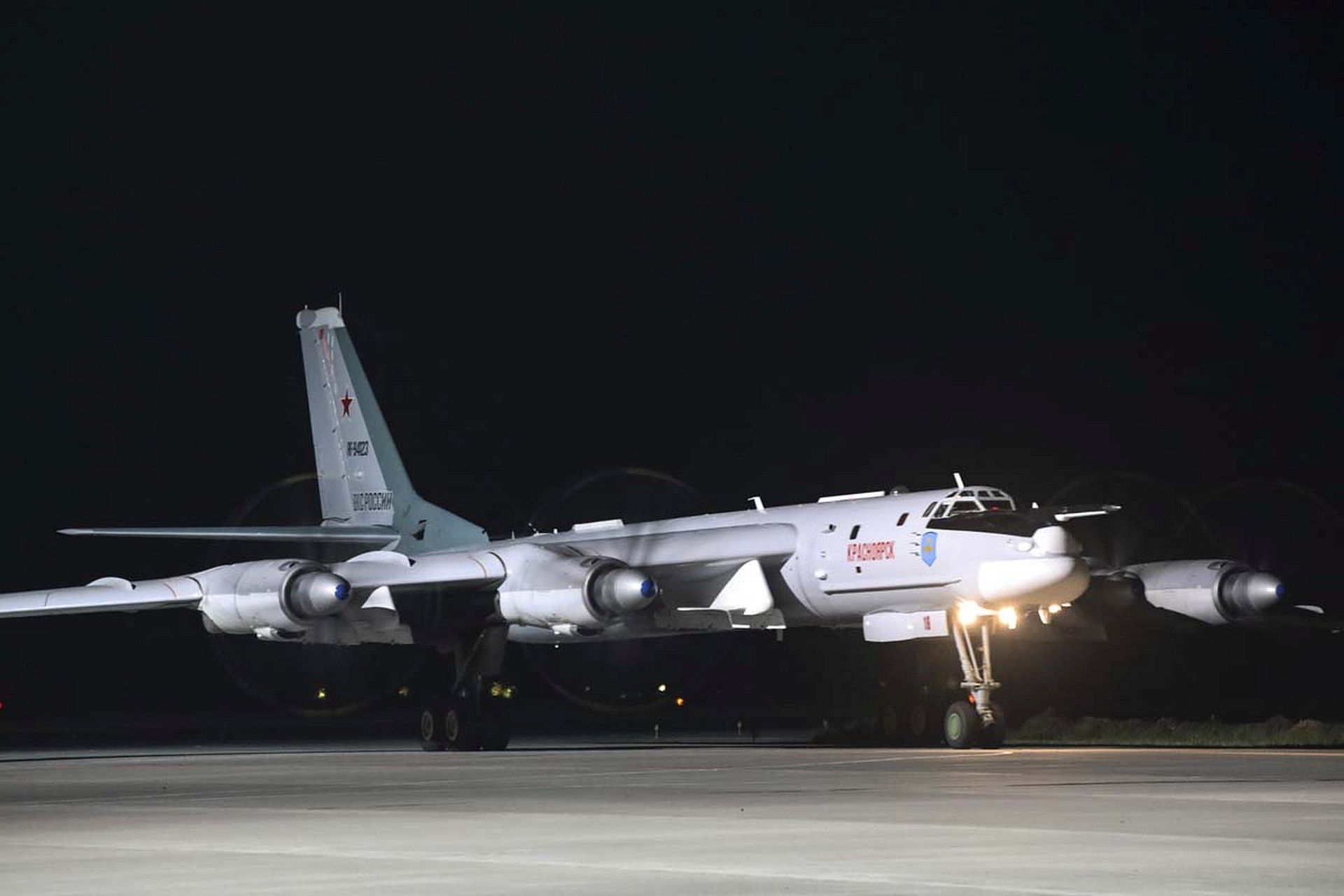
In total, 15 sorties were completed during the flight shift, 7 pieces of aviation equipment were involved, as well as 15 units of special equipment of the airfield technical support battalion.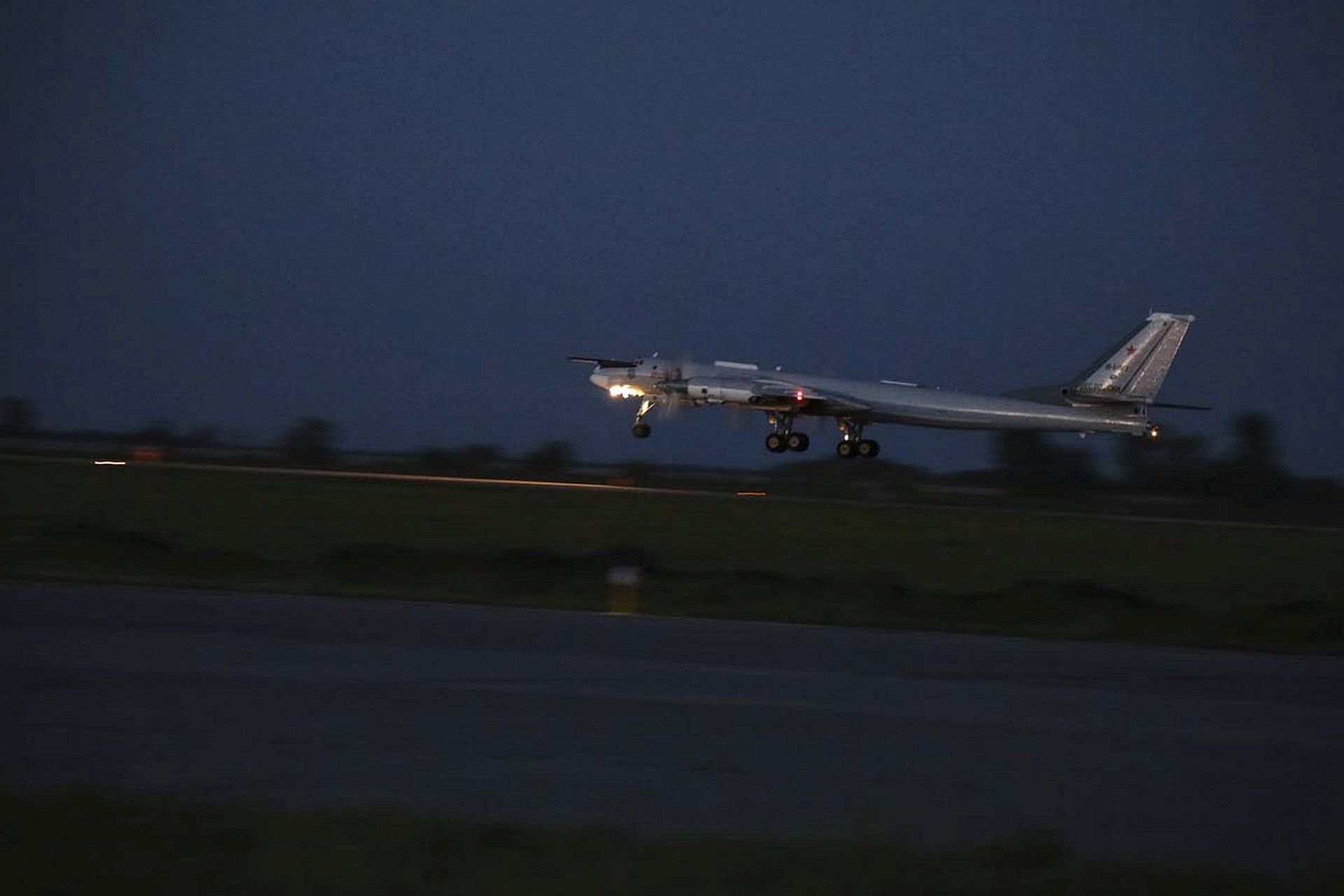
Getafe, 26 May 2020 ? The Airbus A400M new generation airlifter has achieved a new decisive milestone after the certification of its Automatic Low Level Flight capability, offering a unique in its class capability for a military transport aircraft.
The certification campaign, performed in April above the Pyrenees and central France, involved operations down to 500ft, including transitions from low level flight to other operations like aerial delivery.
This first certification phase concerns operations with Visual Meteorological Conditions, meaning with crew visibility. There will be a second phase including Instrumental Meteorological Conditions, without visibility, to be certified in Q2 2021.
Inherent to the fighter aircraft world, and as a unique capability for a military transport aircraft, the Automatic Low Level Flights improves the A400M?s terrain masking and survivability, making the aircraft less detectable in hostile areas and less susceptible to threats when cruising towards key military operations like aerial delivery, air-to-air refuelling, logistic or other specific special operations.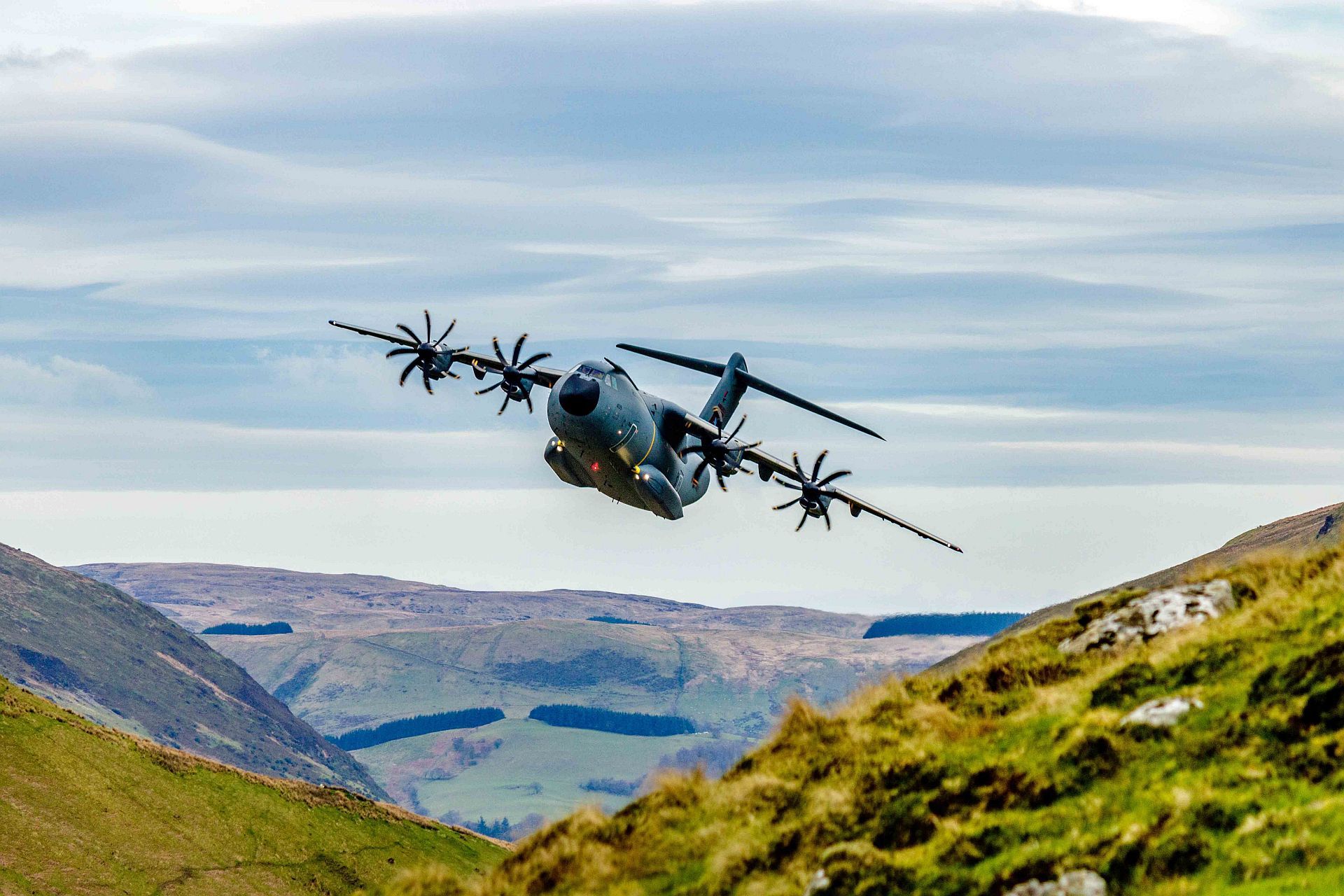
The third of nine Poseidon maritime patrol aircraft has been named after the highest scoring pilot in Coastal Command in WW2.
Poseidon MRA.1 ZP803 currently being completed in the USA sports the name ?Terence Bulloch DSO* DFC*? in recognition of the pilot who made the greatest number of attacks against submarines in the Battle of the Atlantic.
Born in Lisburn, County Antrim, Squadron Leader Bulloch joined the RAF in 1936. Serving with Coastal Command, Squadron Leader Bulloch and his crew shot down two German seaplanes and sank four German U-boats, and severely damaged several others. He was known for his flying skills, innovative tactics and perfect eyesight.
The RAF fleet of Poseidons will provide a globally deployable maritime patrol capability; specifically working side-by-side with the Royal Navy in securing the seas around the UK and abroad.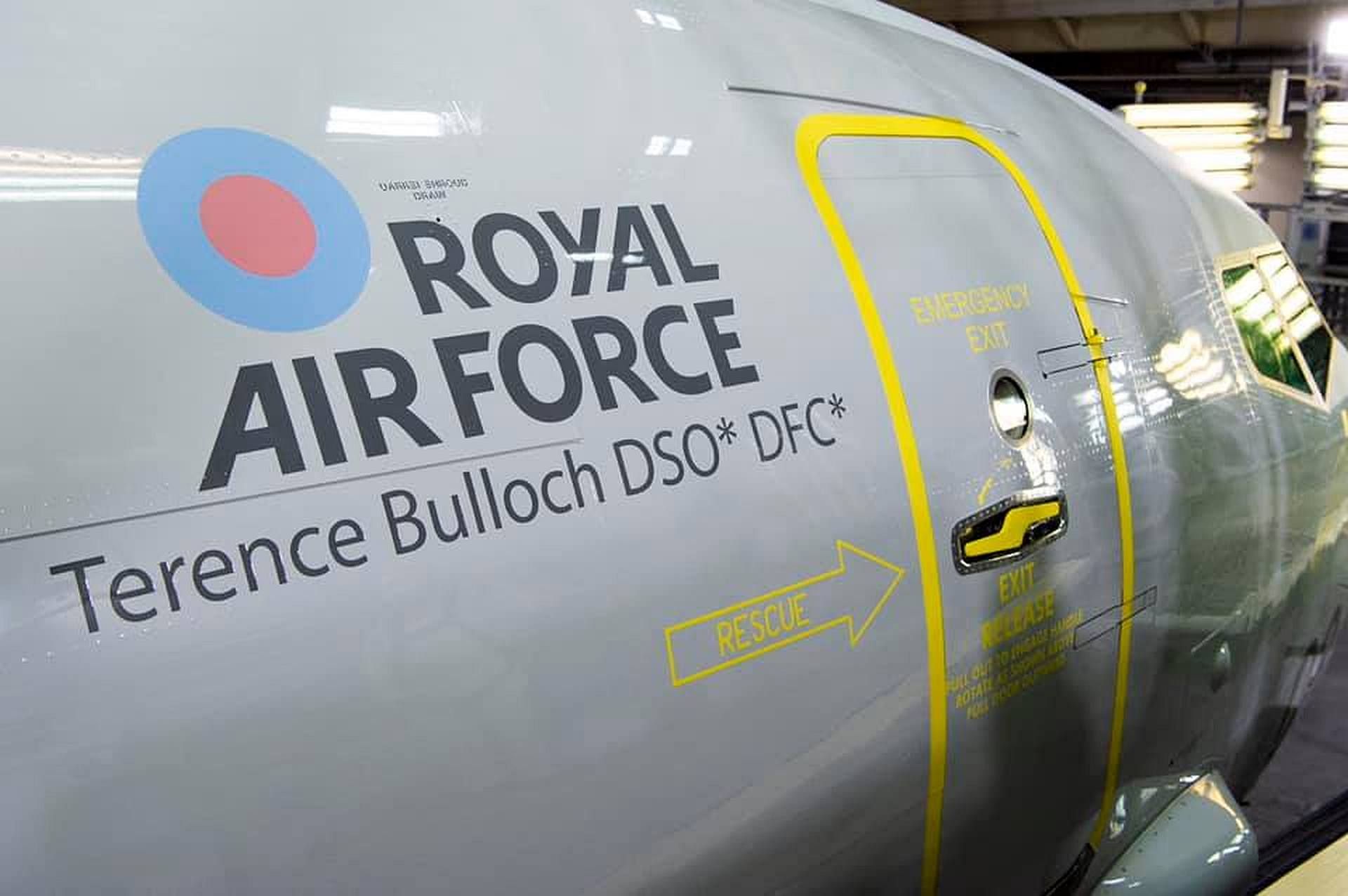
RAF Typhoons and Reapers have conducted four separate air strikes against Daesh this month in northern Iraq and all targets were successfully hit.
Defence Secretary Ben Wallace said: ?These strikes are another example of how the UK Armed Forces protect our nation and allies, every single day, from all those who seek to do us harm.?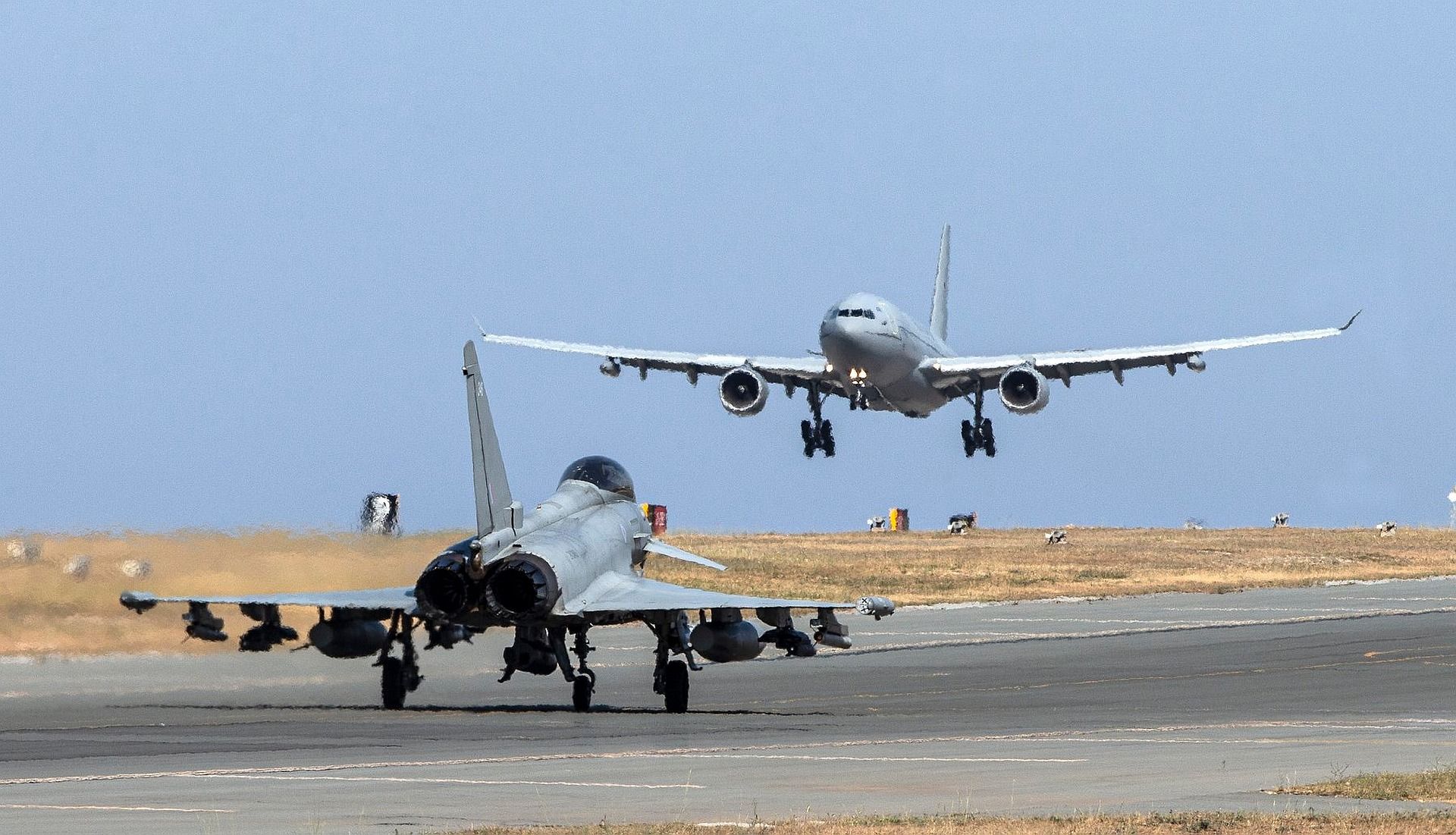
The current round of strike operations is the result of the gathering of intelligence, and the thorough surveillance of the target and surrounding area for any signs of civilians, too ensure they are not placed at risk.
-
5 years agoMon Jun 01 2020, 09:11pm
 Main AdminA Romanian F-16 escorts a B1B Lancer during a training mission for Bomber Task Force Europe, May 29, 2020. Aircrews from the 28th Bomb Wing at Ellsworth Air Force Base, South Dakota, took off on their long-range, long-duration Bomber Task Force mission to conduct interoperability training throughout Europe and the Black Sea region. Training with our NATO allies and theater partner nations contributes to enhanced resiliency and interoperability and enables us to build enduring relationships necessary to confront the broad range of global challenges. (Courtesy photo by Romanian Air Force)
Main AdminA Romanian F-16 escorts a B1B Lancer during a training mission for Bomber Task Force Europe, May 29, 2020. Aircrews from the 28th Bomb Wing at Ellsworth Air Force Base, South Dakota, took off on their long-range, long-duration Bomber Task Force mission to conduct interoperability training throughout Europe and the Black Sea region. Training with our NATO allies and theater partner nations contributes to enhanced resiliency and interoperability and enables us to build enduring relationships necessary to confront the broad range of global challenges. (Courtesy photo by Romanian Air Force)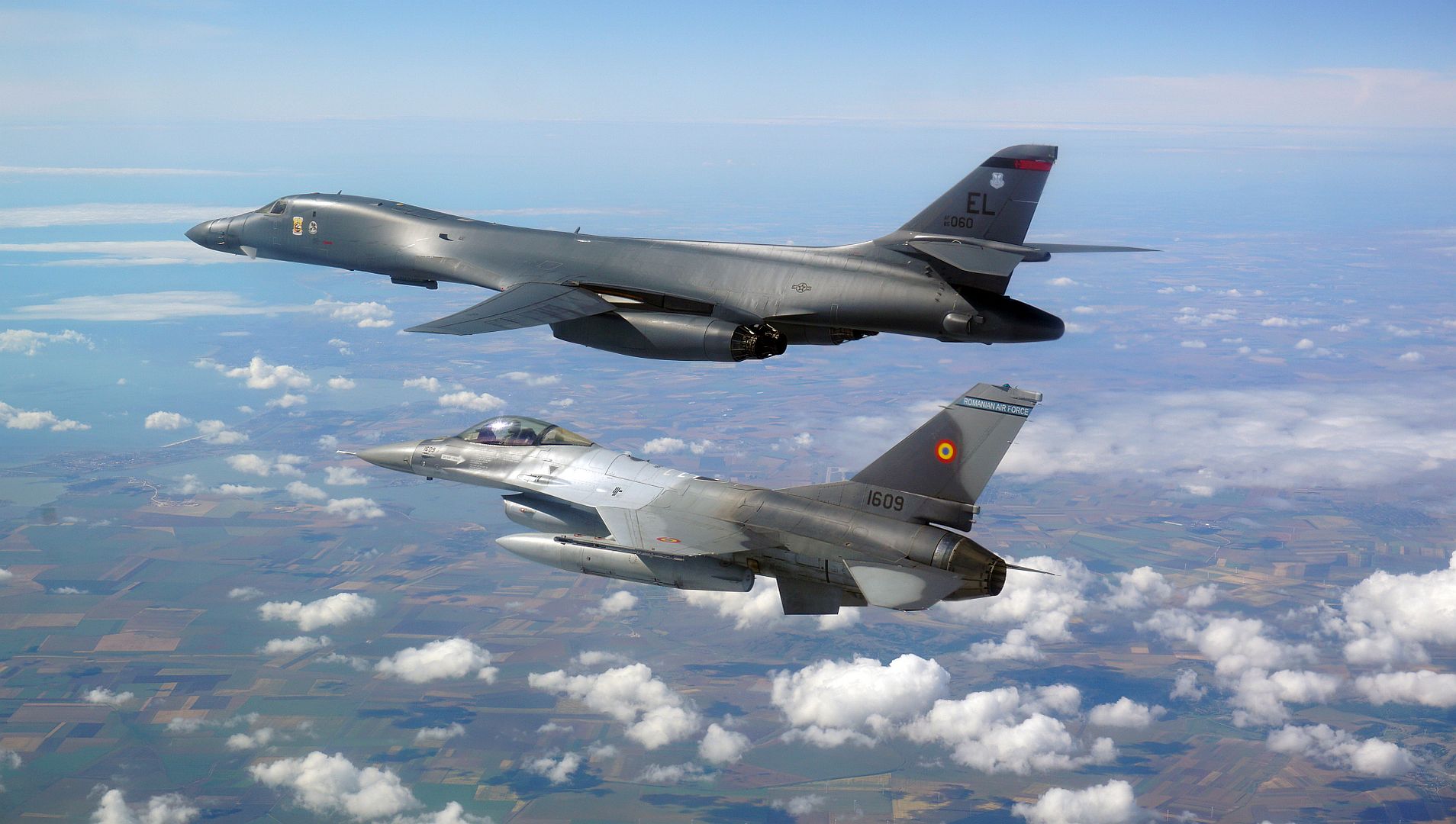
Polish F-16s escort a B1B Lancer during a training mission for Bomber Task Force Europe, May 29, 2020. Aircrews from the 28th Bomb Wing at Ellsworth Air Force Base, South Dakota, took off on their long-range, long-duration Bomber Task Force mission to conduct interoperability training in the Black Sea region. Training with our NATO allies and theater partner nations contribute to enhanced resiliency and interoperability and enables us to build enduring relationships necessary to confront the broad range of global challenges. (Courtesy photo's by Polish Air Force)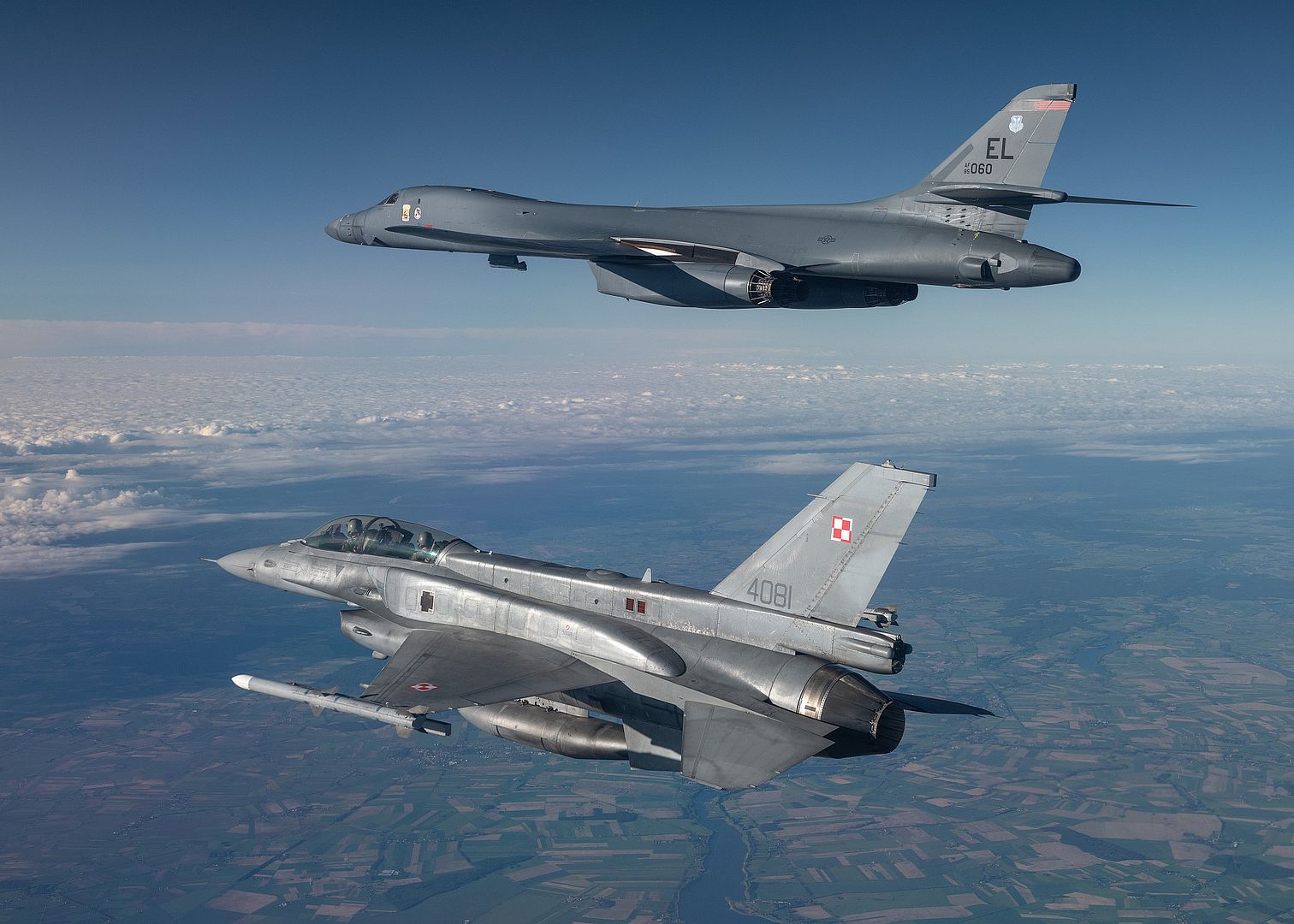
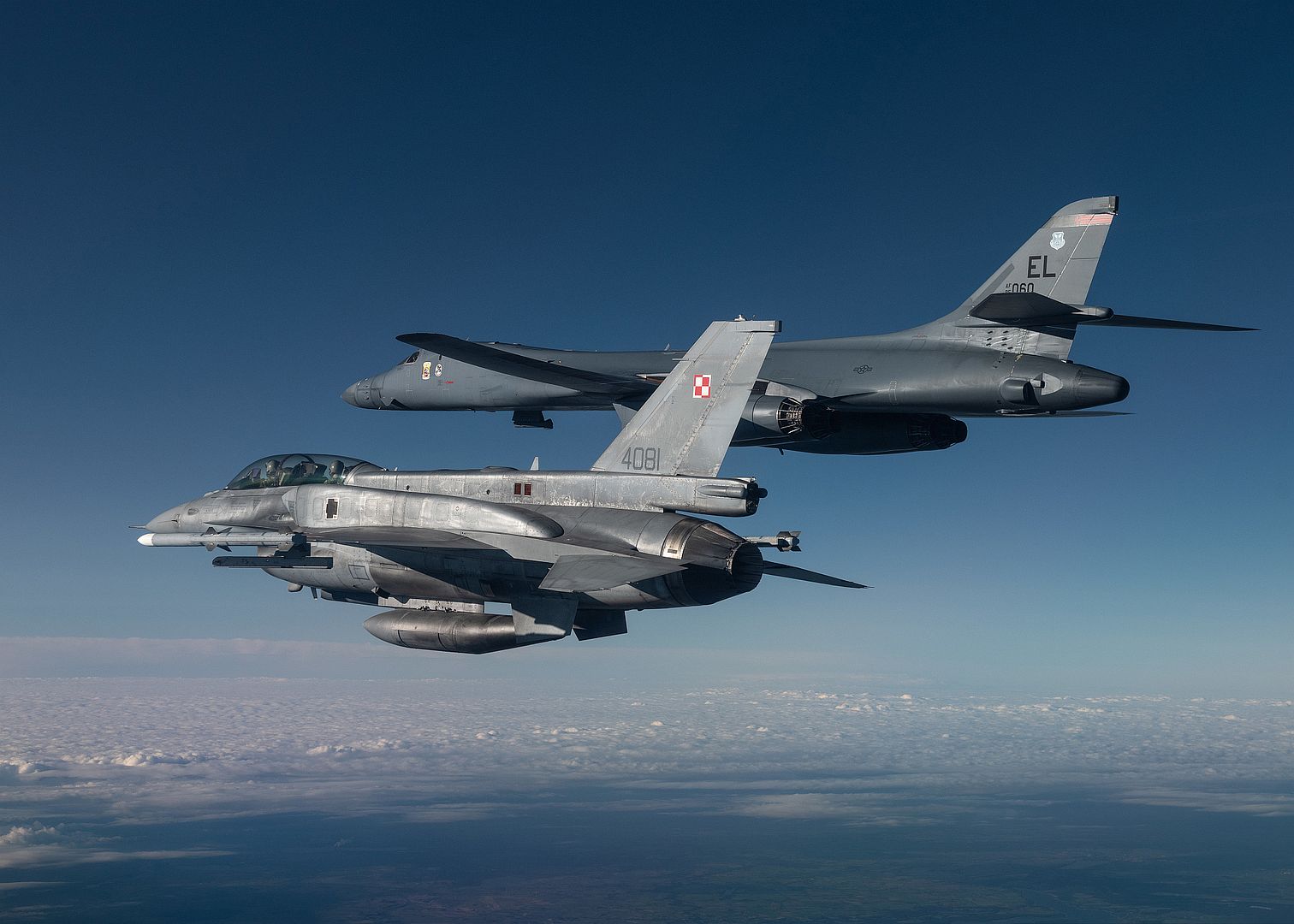
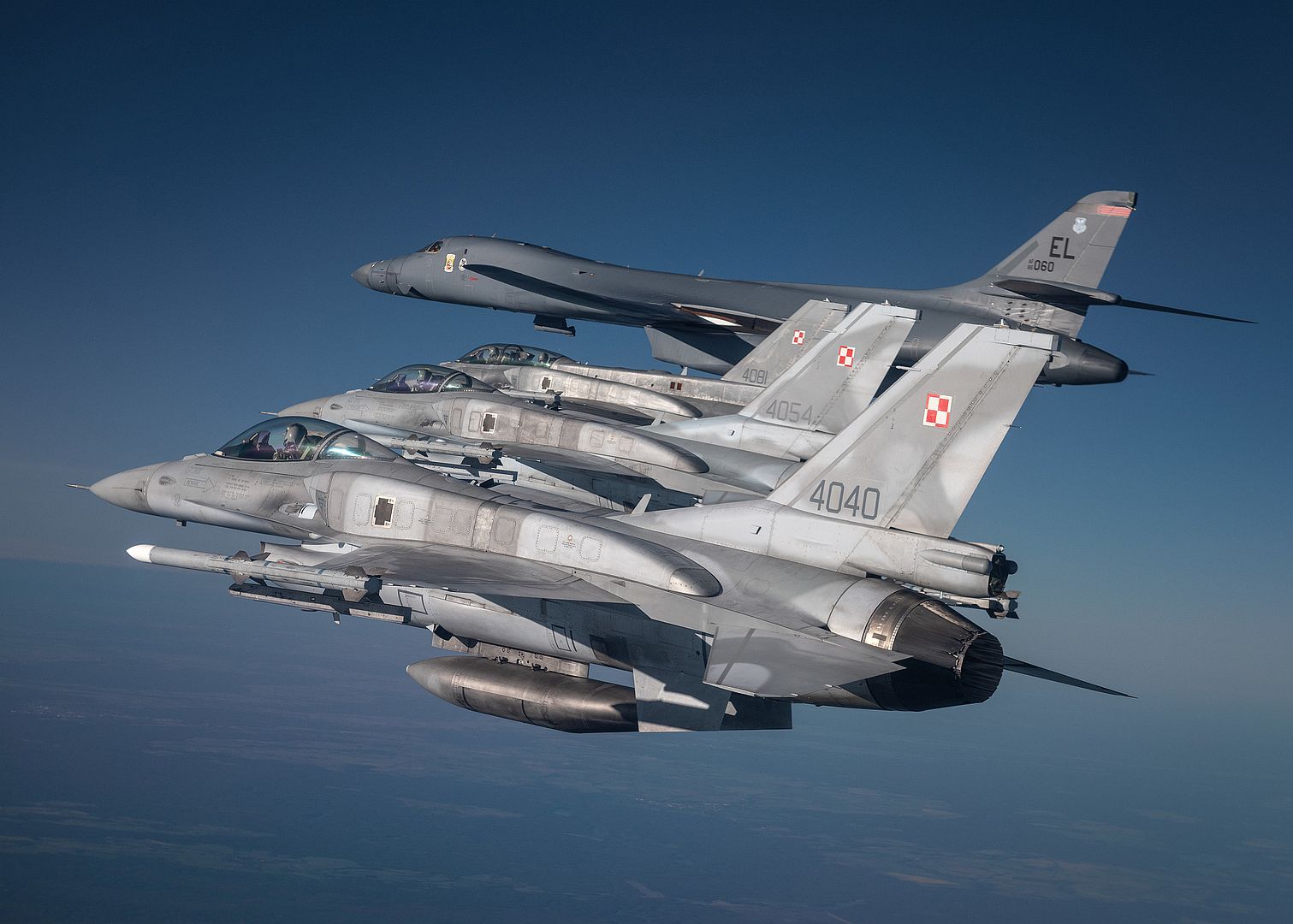
A Ukrainian Su-27 Flanker and MiG-29 Fulcrum escort two B1B Lancers during a training mission for Bomber Task Force Europe, May 29, 2020. Aircrews from the 28th Bomb Wing at Ellsworth Air Force Base, South Dakota, took off on their long-range, long-duration Bomber Task Force mission to conduct interoperability training throughout Europe and the Black Sea region. Training with our NATO allies and theater partner nations contribute to enhanced resiliency and interoperability and enables us to build enduring relationships necessary to confront the broad range of global challenges. (Courtesy photo by Ukrainian Air Force)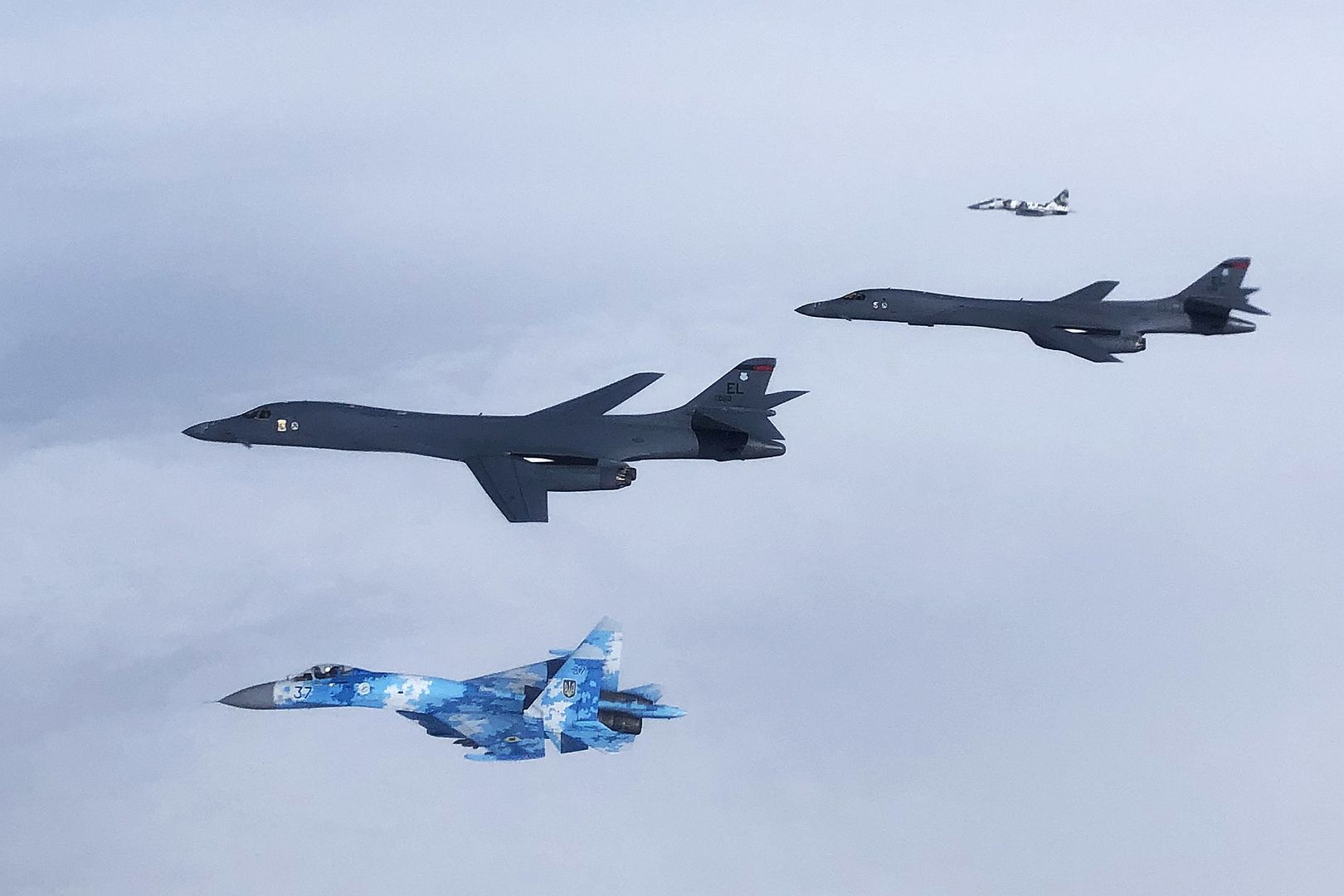
The 50th Air Refueling Squadron from MacDill Air Force Base, Fla., supports the SpaceX and NASA Crew Dragon launch by refueling F-15 Eagle aircraft assigned to the Jacksonville Air National Guard Base, Fla., May 29, 2020. The F-15s were deployed to protect the historic launch. (U.S. Air Force photo by Senior Airman Ryan Grossklag)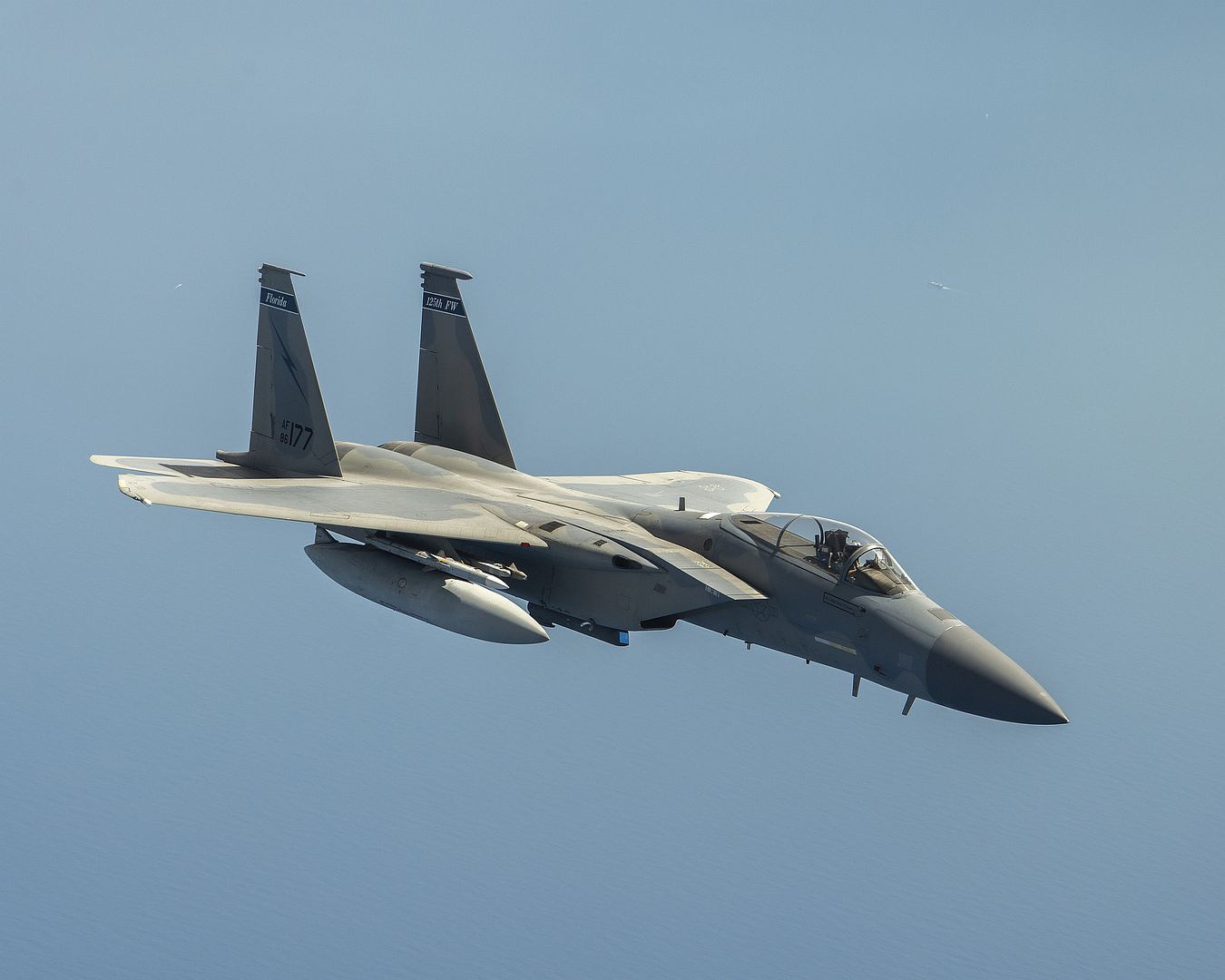
A U.S. Navy F/A-18E Super Hornet, operating from the Harry S. Truman Carrier Strike Group underway in the North Atlantic Ocean, intercepts two U.S. Strategic Command (USSTRATCOM) B-1B Lancers as they enter the Canadian Air Defense Identification Zone, and again as they enter the Continental U.S. North American Aerospace Defense Command (NORAD) Region, May 29, 2020. The intercepts were part of a U.S. Northern Command-led, large-scale homeland defense exercise. U.S. Northern Command's top priority is homeland defense, and leading complex multi-combatant command operations across multiple domains demonstrates USNORTHCOM?S readiness to defend the homeland regardless of COVID-19. The high-end homeland defense exercises are being executed by the USS Harry S. Truman carrier strike group. (U.S. Navy photo by Lt. Neil Armstrong)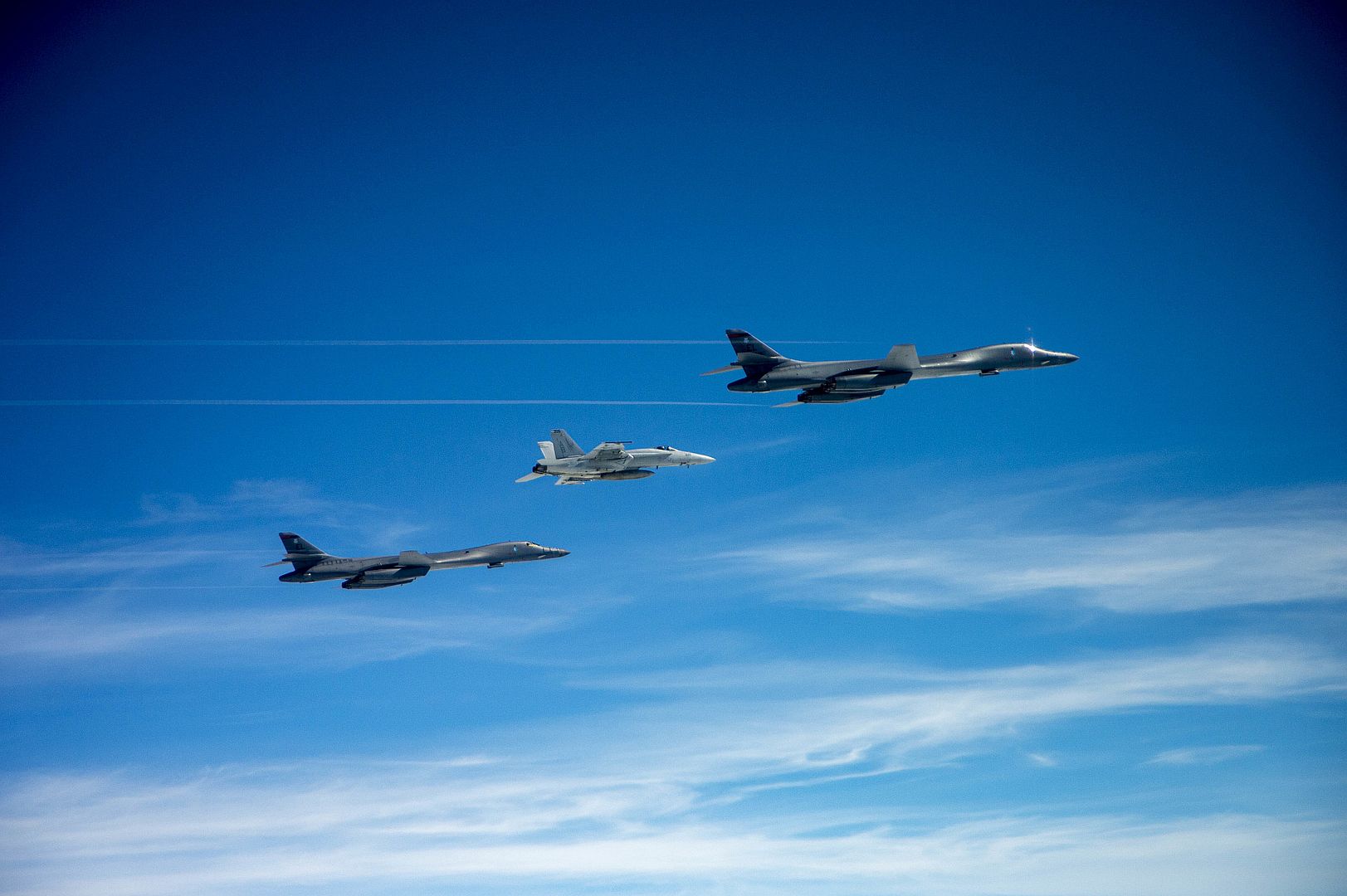
An F/A-18E/F Super Hornet attached to the "Warhawks" of Strike Fighter Squadron (VFA) 97 launches from USS Gerald R. Ford's (CVN 78) flight deck during flight operations May 30, 2020. Ford is underway in the Atlantic Ocean conducting integrated air wing operations. (U.S. Navy photo by Mass Communication Specialist Seaman Angel Thuy Jaskuloski)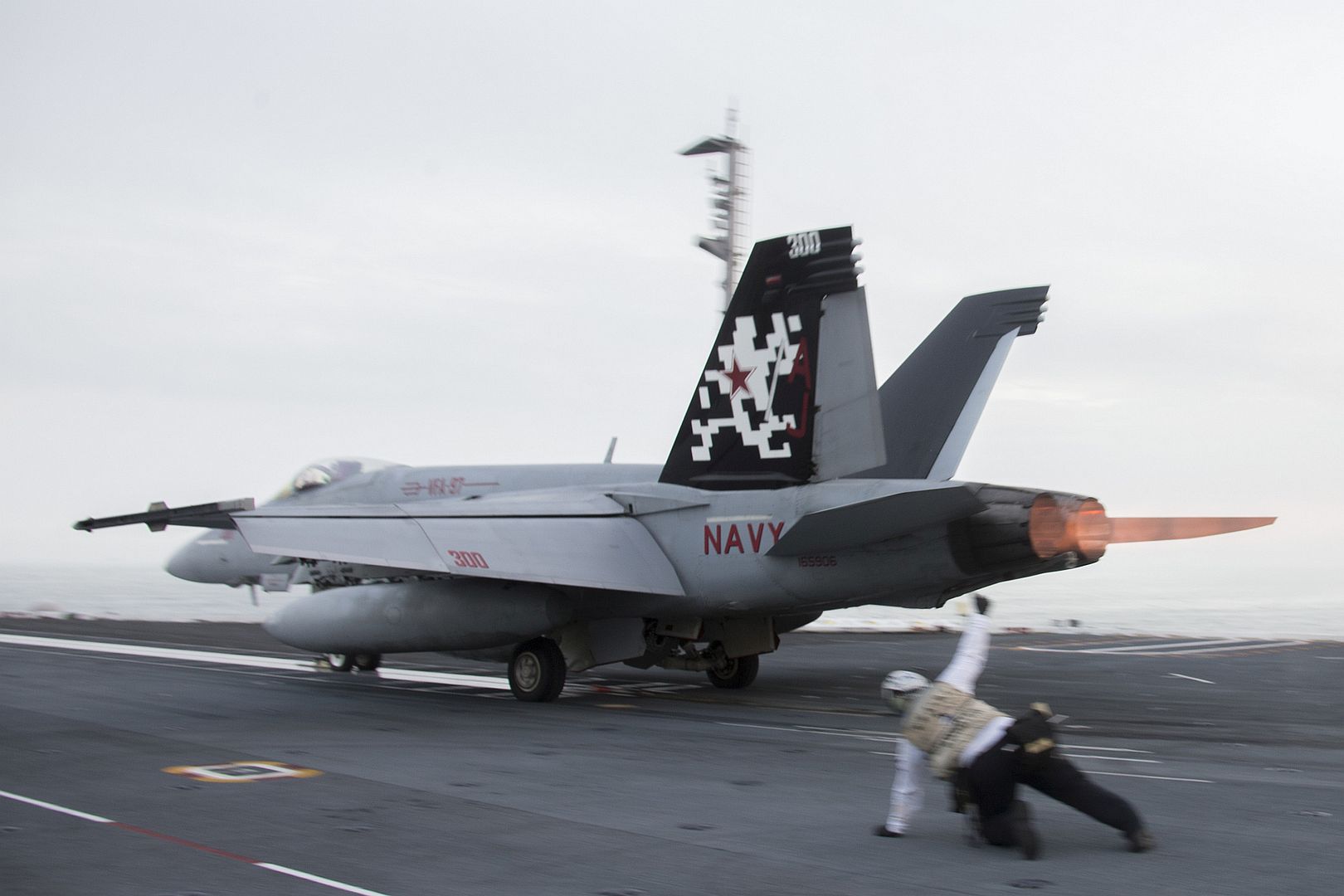
ATLANTIC OCEAN (May 29, 2020) An E-2D Advanced Hawkeye, attached to the "Bear Aces" of Airborne Command and Control Squadron (VAW) 124, lands on the flight deck of the aircraft carrier USS Gerald R. Ford (CVN 78) during flight operations, May 29, 2020. Ford is underway in the Atlantic Ocean conducting integrated air wing operations. (U.S. Navy photo by Mass Communication Specialist Seaman Apprentice Sawyer Connally/Released)
PACIFIC OCEAN (May 29, 2020) An F/A-18F Super Hornet, from the "Fighting Redcocks" of Strike Fighter Squadron (VFA) 22 breaks the sound barrier during a change of command ceremony aboard the aircraft carrier USS Nimitz (CVN 68). The Nimitz Carrier Strike Group is underway conducting a composite unit training exercise (COMPTUEX). COMPTUEX is an intensive exercise designed to fully integrate units of the CSG, while testing a strike group's ability as a whole to carry out sustained combat operations from the sea. (U.S. Navy photo by Mass Communication Specialist 3rd Class Kyle Merritt/Released) -
 Main AdminHILL AIR FORCE BASE, Utah (AFNS) --
Main AdminHILL AIR FORCE BASE, Utah (AFNS) --
For the third time in approximately 12 months, Airmen from the 388th and 419th Fighter Wings at Hill Air Force Base deployed F-35A Lighting IIs into combat.
The 421st Fighter Squadron departed Hill AFB recently for Al Dhafra Air Base, United Arab Emirates, to support the United States Air Force Central Command mission in the region.
?The 421st Fighter Squadron completed their stand up in December and now they?re our latest squadron heading into the fight,? said Col. Steven Behmer, 388th Fighter Wing commander. ?This demonstrates the readiness of our Airmen, our weapons system, and the importance of both the Air Force and our national defense mission. On top of that, add in prepping and training in this challenging coronavirus environment. As leaders, we couldn?t be more proud of our Airmen.?
The deployed squadron is made up of pilots and maintainers from the active duty 421st and Reserve 466th Fighter Squadrons and aircraft maintenance units as well as personnel in other support functions.
ve and Reserve Airmen who were deployed with the 34th Fighter Squadron returned to Hill AFB following a six-month deployment to the Middle East. A large contingent from the 34th FS remain in the region and will return home soon.
During the deployment, the 34th FS performed close air support, offensive and defensive counter-air, and maritime escort which enabled regional deterrence. They also operated simultaneously from two different bases for more than three months and participated in multinational exercises, strengthening partnerships with regional allies. The 421st Fighter Squadron will likely take on a similar role.
?I?m extremely proud of our personnel for answering their nation?s call once again, and I?m certain they?ll do an exceptional job,? said Col. Brian Silkey, acting commander for the 419th Fighter Wing. ?As always, we truly appreciate the sacrifices of their families and civilian employers as our Citizen Airmen step away to serve, especially now, during these challenging and uncertain times.?
The F-35A, the conventional takeoff and landing variant of the Joint Strike Fighter, provides greater operational capability by combining advanced stealth capabilities with the latest weapons technology.
The 388th and 419th are the Air Force first combat-capable F-35A units. The first operational F-35As arrived at Hill AFB in October 2015. The active duty 388th FW and Air Force Reserve 419th FW fly and maintain the jet in a total force partnership, which capitalizes on the strength of both components. Hill AFB is home to 78 F-35s.
(U.S. Air Force photo's by R. Nial Bradshaw)
F-16 Fighting Falcons from the 31st Fighter Wing at Aviano Air Base, Italy, fly in formation, June 1, 2020. The 31st Fighter Wing is home to both the 510th Fighter Squadron and the 555th Fighter Squadron. (U.S. Air Force photo's by Senior Airman Caleb House)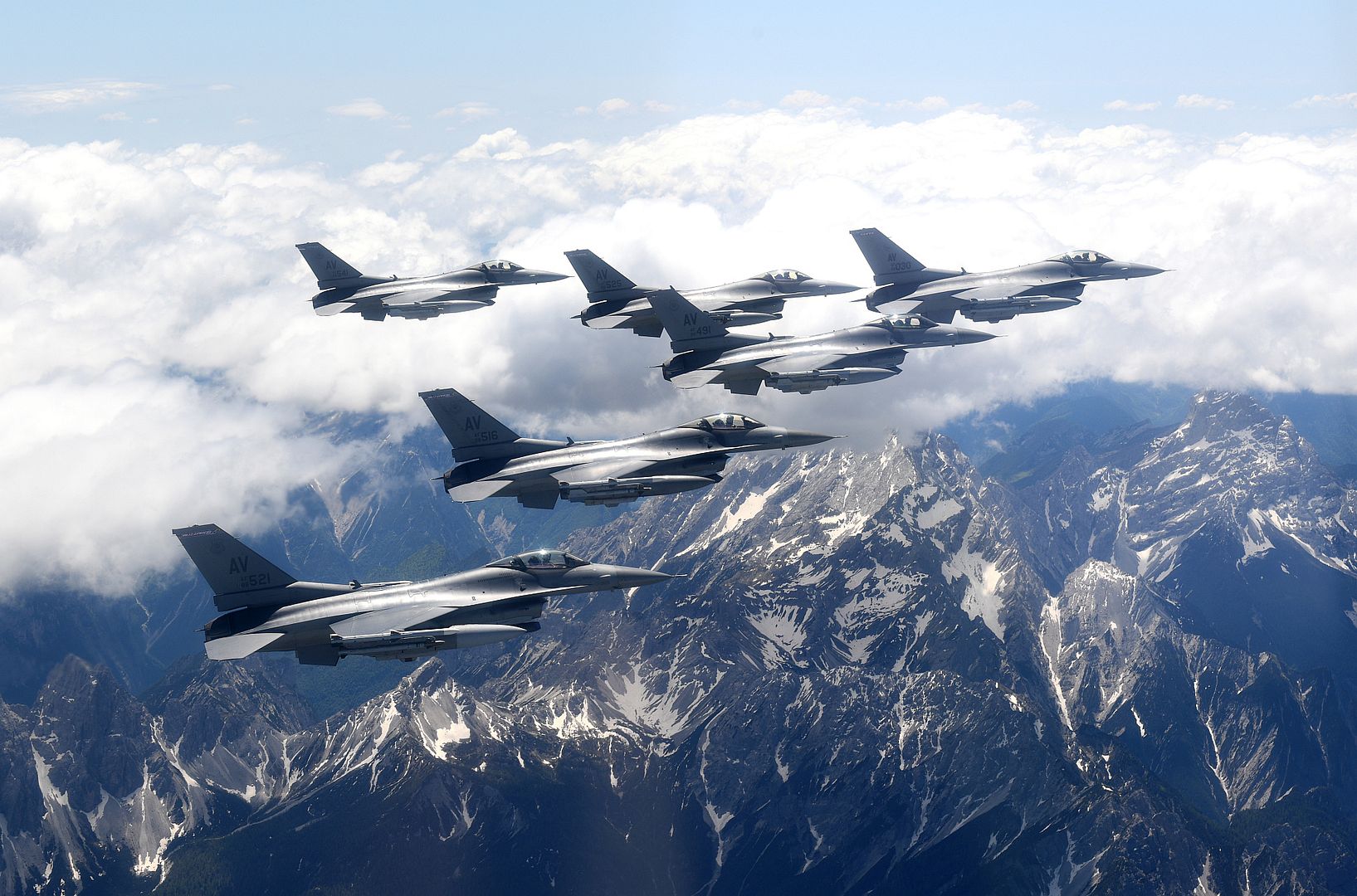

Slovenian Pilatus PC-9s fly over Slovenia while training with 31st Fighter Wing aircraft, June 1, 2020. The 31st FW routinely trains with Slovenia increasing their interoperability and strengthening the NATO alliance. (U.S. Air Force photo by Senior Airman Caleb House)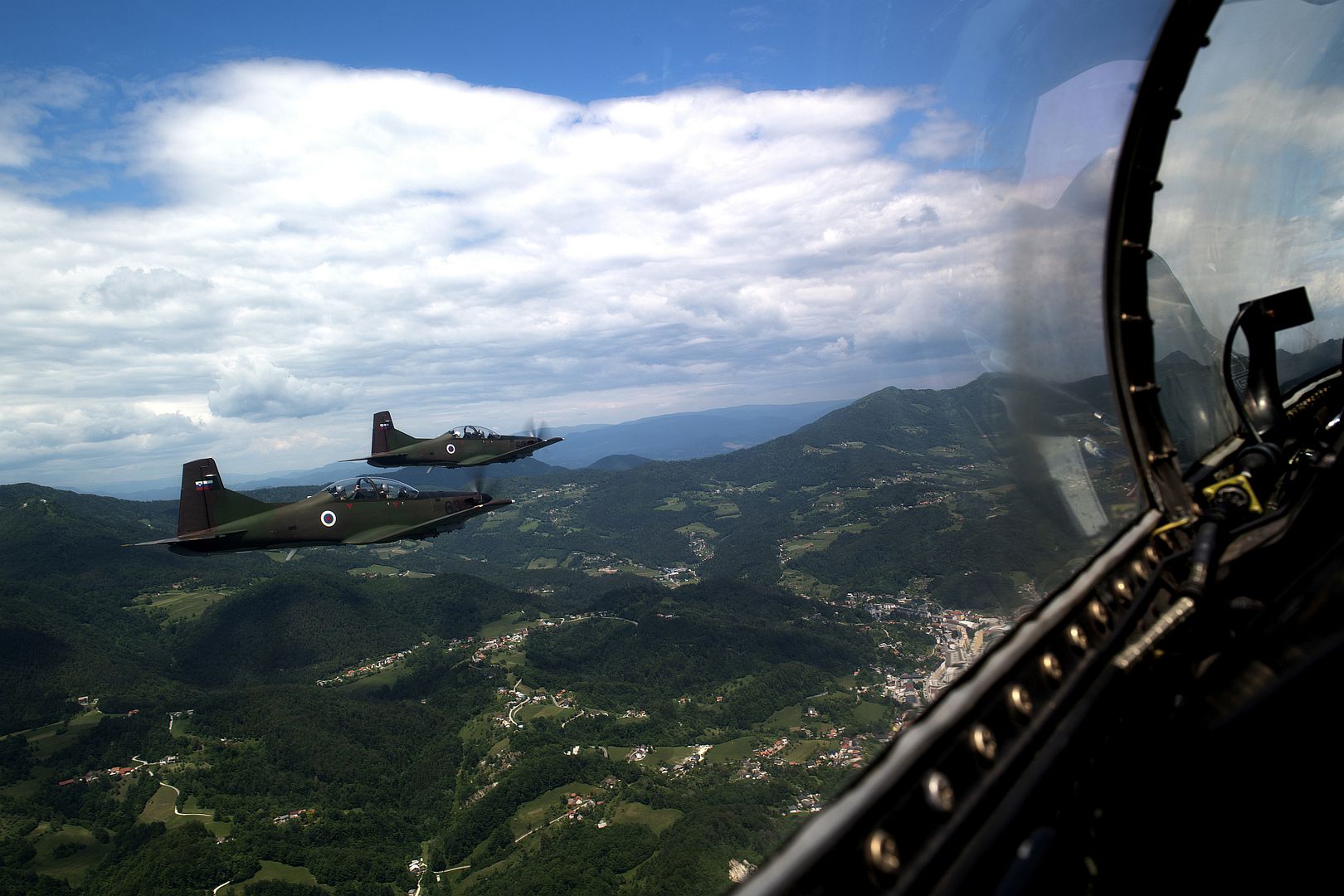
PHILIPPINE SEA (June 02, 2020) An F/A-18E Super Hornet attached to Strike Fighter Squadron (VFA) 27 launches from the flight deck of the Navy?s only forward-deployed aircraft carrier USS Ronald Reagan (CVN 76). Ronald Reagan, the flagship of Carrier Strike Group 5, provides a combat-ready force that protects and defends the collective maritime interests of its allies and partners in the Indo-Pacific region. (U.S. Navy photo by Mass Communication Specialist 2nd Class Samantha Jetzer)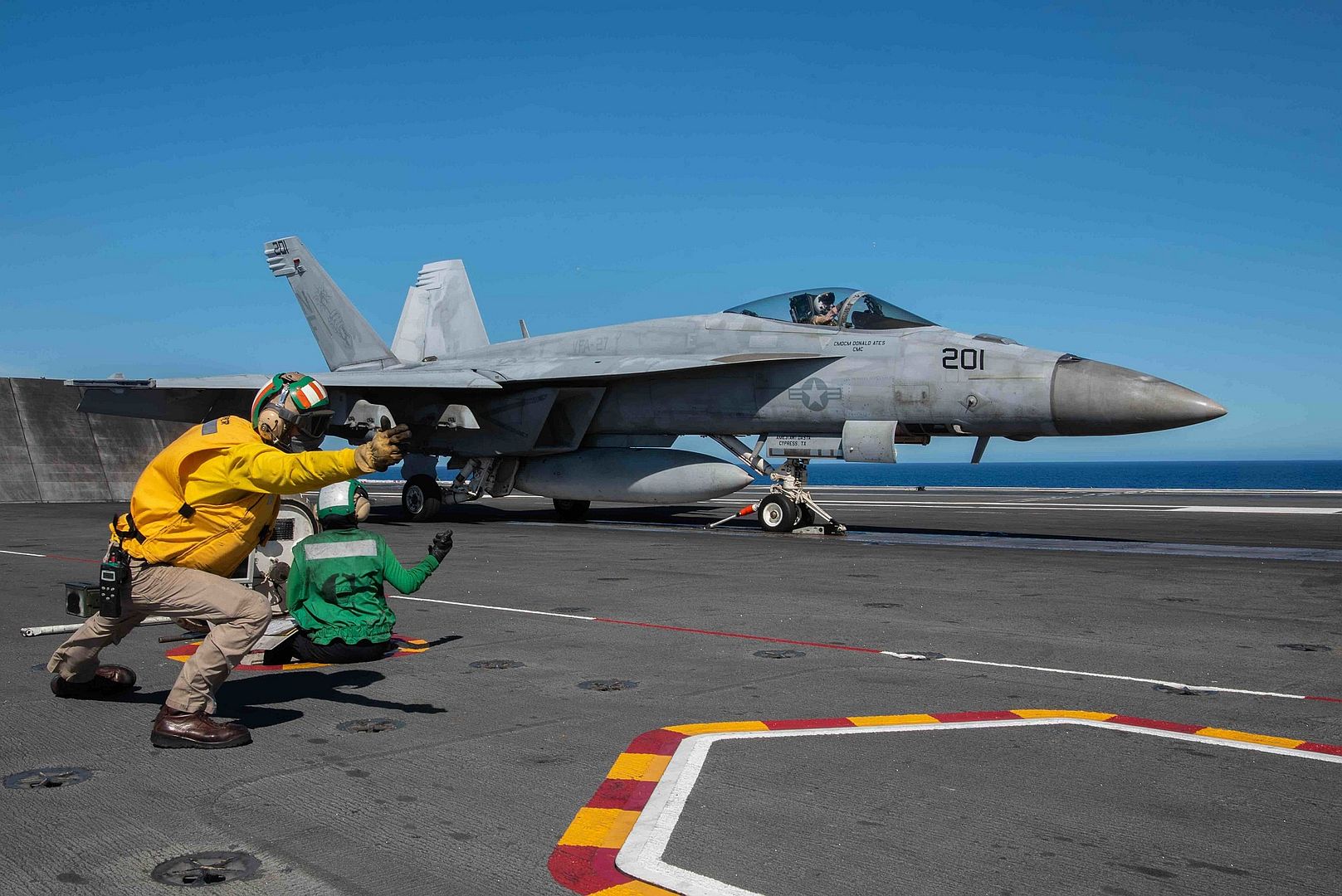
ATLANTIC OCEAN (May 30, 2020) An F/A-18E Super Hornet attached to the Warhawks of Strike Fighter Squadron (VFA) 97 prepares to launch from the aircraft carrier USS Gerald R. Ford (CVN 78) during flight operations, May 30, 2020. Gerald R. Ford is underway in the Atlantic Ocean conducting integrated air wing operations. (U.S. Navy photo by Chief Mass Communication Specialist RJ Stratchko/Released)
PACIFIC OCEAN (May 31, 2020) F/A-18E Super Hornets from the Mighty Shrikes of Strike Fighter Squadron (VFA) 94 prepare to launch off the flight deck aboard the aircraft carrier USS Nimitz (CVN 68). The Nimitz Carrier Strike Group (CSG) is underway conducting a composite training unit exercise (COMPTUEX). COMPTUEX is an intensive exercise designed to fully integrate units of the CSG, while testing a strike group's ability as a whole to carry out sustained combat operations from the sea. (U.S. Navy photo by Mass Communication Specialist 3rd Class Dalton Reidhead/Released)
Royal Air Force Typhoon fighter jets deployed to Lithuania on a NATO policing mission have carried out their first intercept of the operation, on a Russian Military Aircraft off the Baltic coast. The Typhoons launched on 2nd June 2020 to intercept a Russian IL-20 COOT Intelligence, Surveillance and Reconnaissance (ISR) aircraft operating over the Baltic Sea.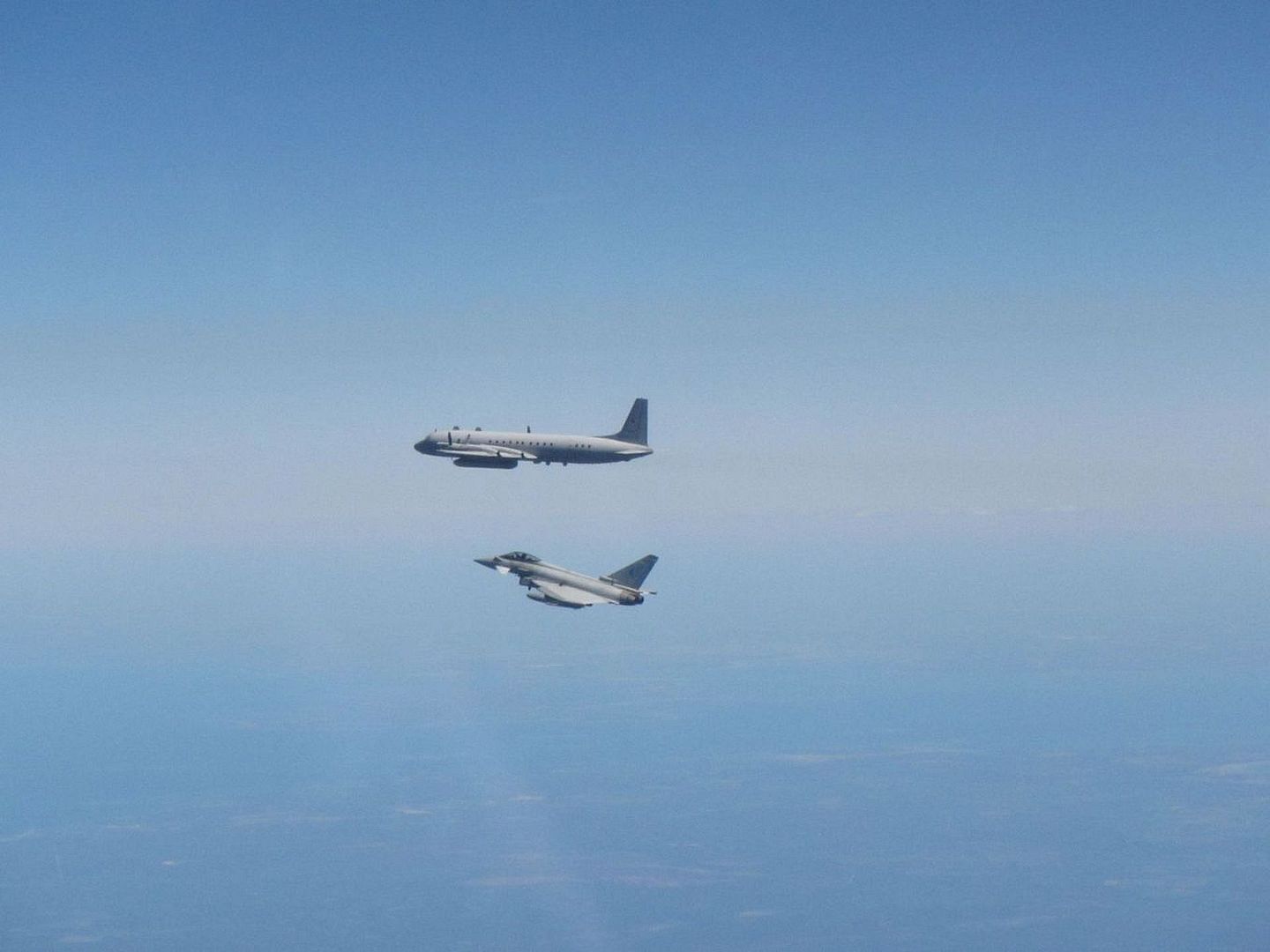
This intercept is part of the routine NATO Air Policing mission that has been conducted to police the skies since 2004. The current RAF mission began on the 1 May when 135 EAW took over the enhanced Air Policing role working alongside the Spanish Air Force detachment at Siauliau Air Base.
The RAF contribution to NATO deployments supports efforts to reassure our Allies and demonstrates the UK?s wider commitment to the security of the region.
Post a reply
- Go to Next topic
- Go to Welcome
- Go to Introduce Yourself
- Go to General Discussion
- Go to Screenshots, Images and Videos
- Go to Off topic
- Go to Works in Progress
- Go to Skinning Tips / Tutorials
- Go to Skin Requests
- Go to IJAAF Library
- Go to Luftwaffe Library
- Go to RAF Library
- Go to USAAF / USN Library
- Go to Misc Library
- Go to The Ops Room
- Go to Made in Germany
- Go to Campaigns and Missions
- Go to Works in Progress
- Go to Juri's Air-Raid Shelter
- Go to Campaigns and Missions
- Go to Works in Progress
- Go to Skinpacks
- Go to External Projects Discussion
- Go to Books & Resources

















